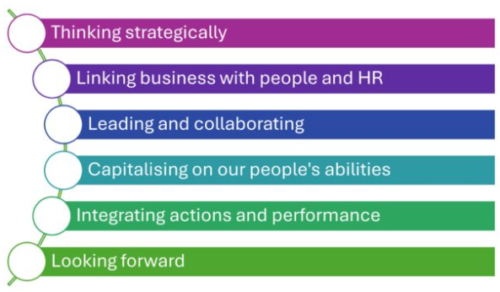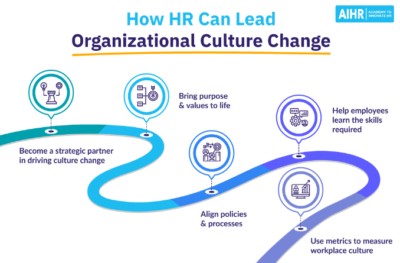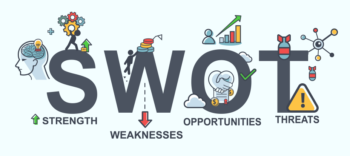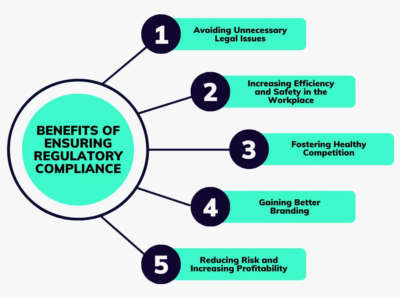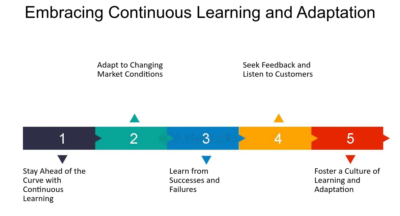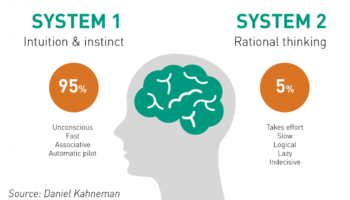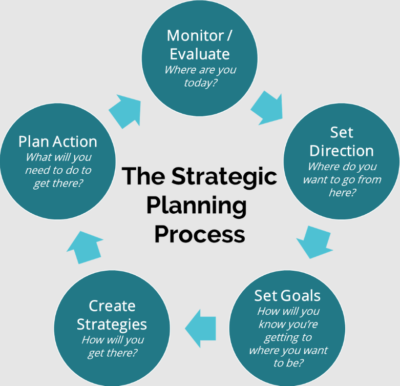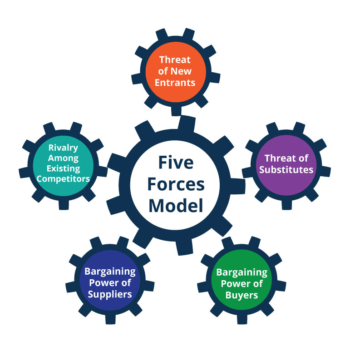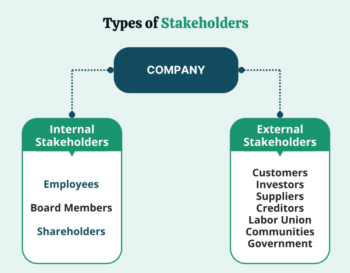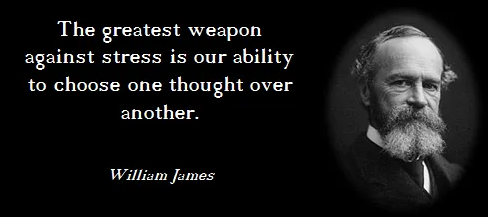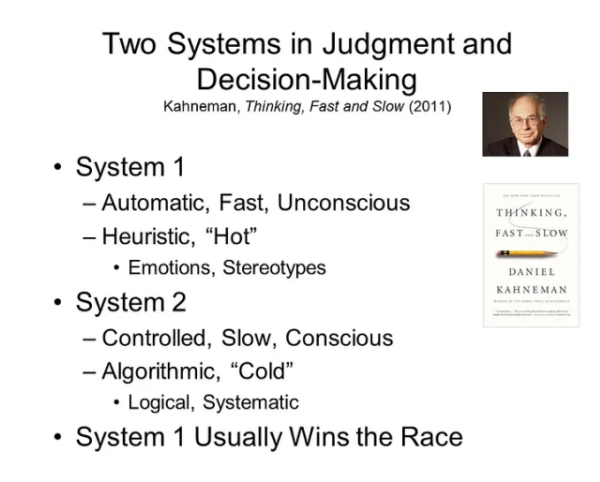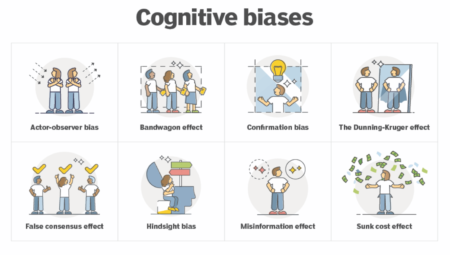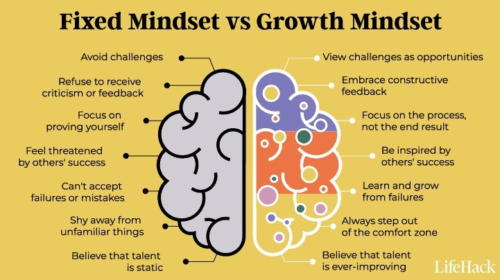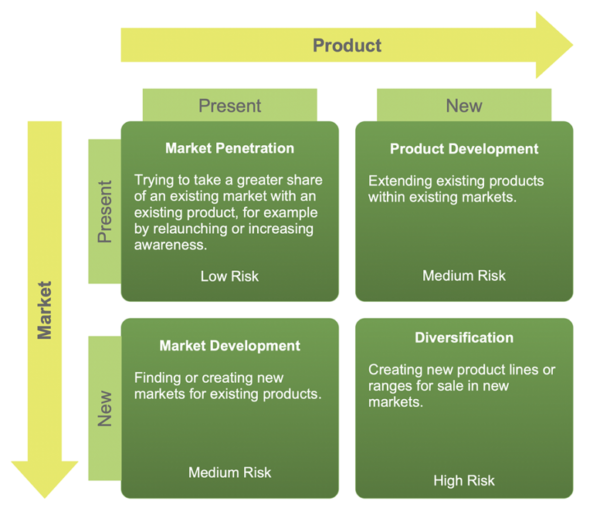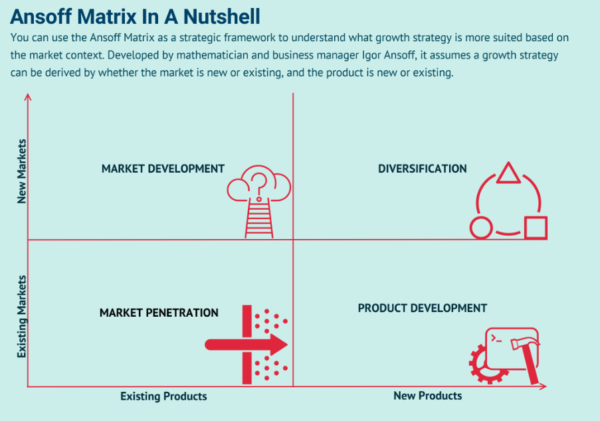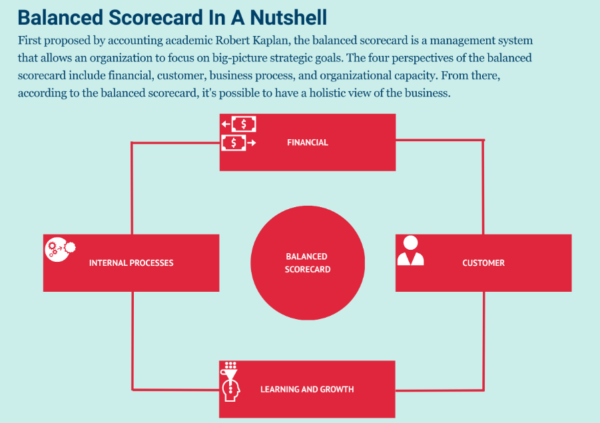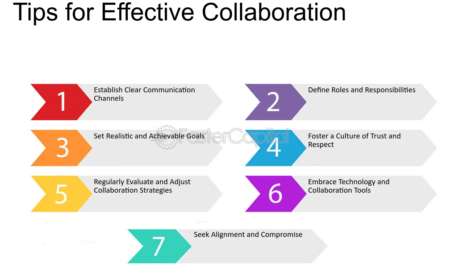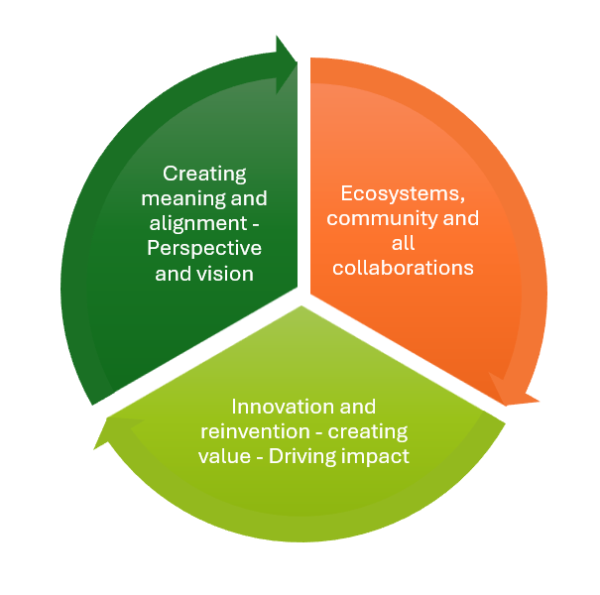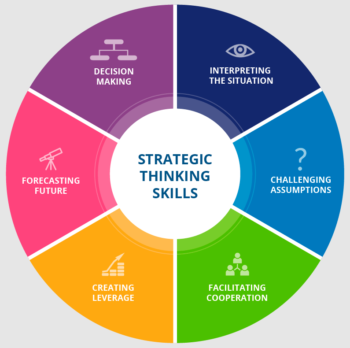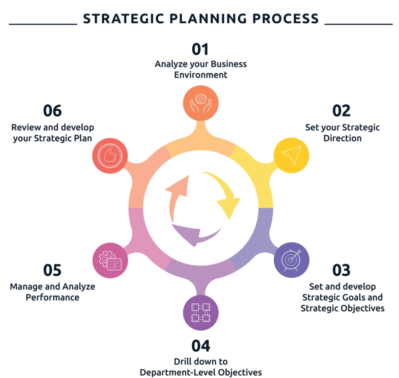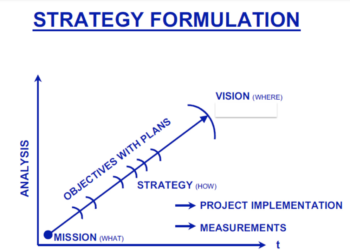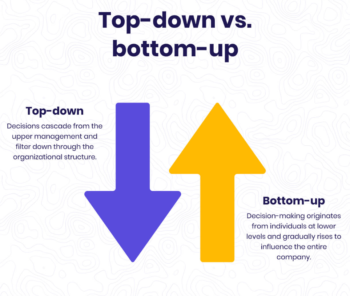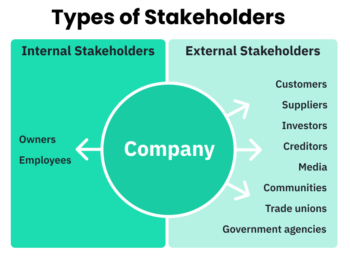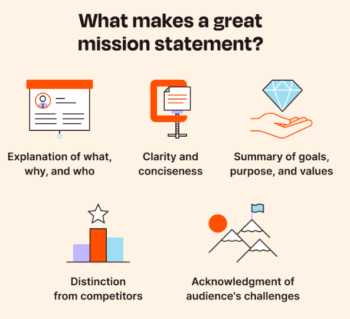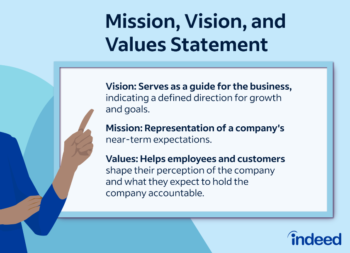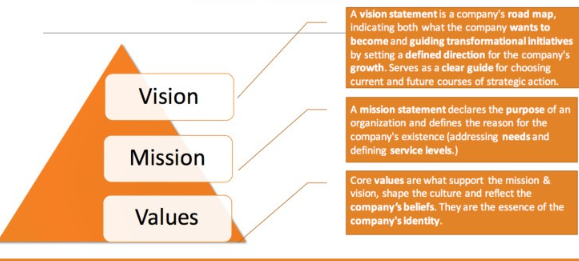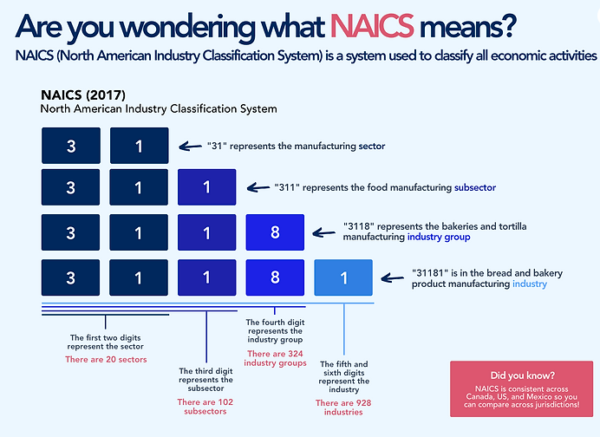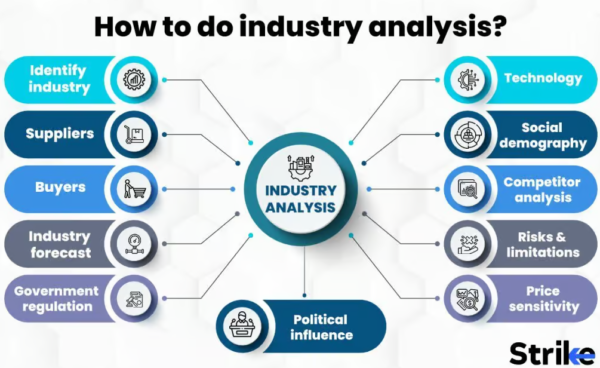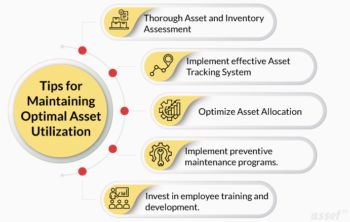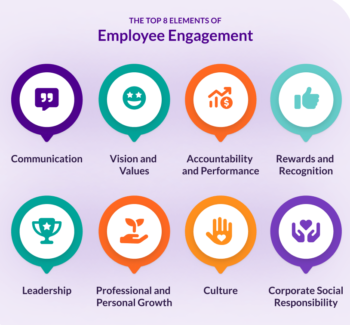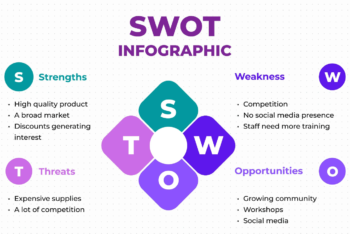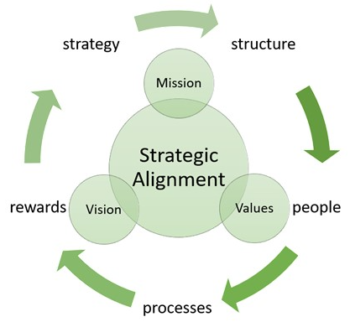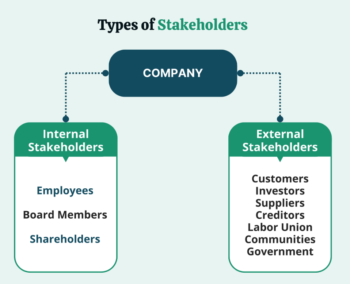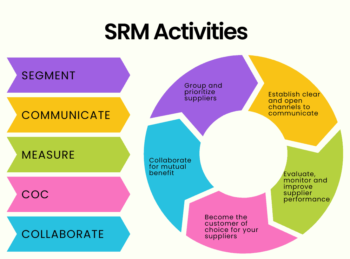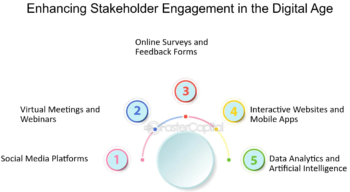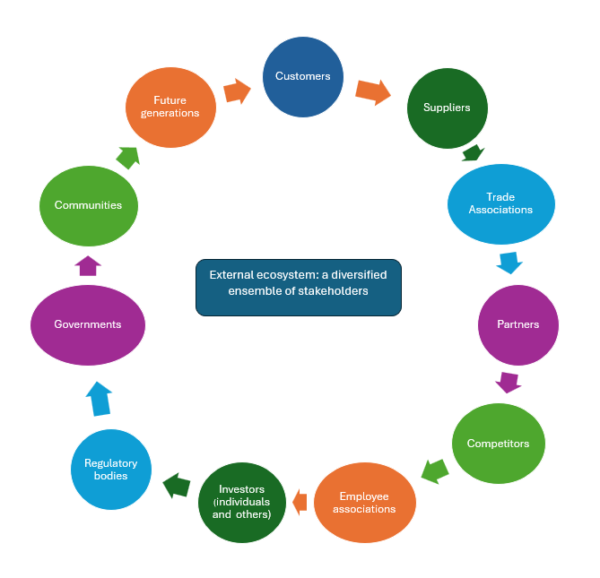Human Strategic Thinking – WDP1 (Understanding the Landscape)

The Appleton Greene Corporate Training Program (CTP) for Human Strategic Thinking is provided by Ms. Petitpas Certified Learning Provider (CLP). Program Specifications: Monthly cost USD$2,500.00; Monthly Workshops 6 hours; Monthly Support 4 hours; Program Duration 12 months; Program orders subject to ongoing availability.
If you would like to view the Client Information Hub (CIH) for this program, please Click Here
Learning Provider Profile

Ms. Petitpas is a Certified Learning Provider (CLP) with Appleton Greene. She has over 30 years of experience in consulting, coaching, and training CEOs, executives, and management teams. She specializes in strategic thinking and planning, organizational development, human resources, and leadership. She is passionate about accompanying leaders in realizing and achieving their unique contributions, integrating the business and people aspects to create their desired impact on all stakeholders.
She has industry experience in the following sectors: Technology, Business Services, Biomedical, Consultancy, Manufacturing and Healthcare. She has worked with organizations with core activities in the following countries: Canada, United States, Mexico, and France, and more frequently within the following cities: Montreal, QC; Laval, QC; Québec, QC; Toronto, ON.
Her achievements include eight years as Founder of Polychrome, where she advises and coaches business owners and leaders to transform their organization and create value for all stakeholders based on their values and aspirations, capitalizing on the strengths of their teams; co-author of a book about strategic thinking, and is a regular contributor to LaReferenceRH.
Strategic thinking, management experience, and coaching have enabled her clients to reach significant insights and their organizations to evolve significantly and become more resilient, prosperous, and overall better as customer and employee experience providers.
To request further information about Ms. Petitpas through Appleton Greene, please Click Here.
MOST Analysis
Mission Statement
HR and people management, in general, do not exist in a vacuum. They can both support the implementation of strategies defined by others and be an impetus for change and value creation. To do so, it is necessary to understand the organization’s business. This first step will allow participants to gain further clarity on their circumstances, the different types of strategies, and the value drivers of significant importance, beyond their understanding of their industry. They will consider the various ecosystems, both internal and external, that strategic plans and initiatives cater to and depend upon for successful implementation.
Objectives
01. Changing Perspective: departmental SWOT analysis; strategy research & development. Time Allocated: 1 Month
02. The Evolution of Strategy: departmental SWOT analysis; strategy research & development. Time Allocated: 1 Month
03. What is Strategic Thinking?: departmental SWOT analysis; strategy research & development. Time Allocated: 1 Month
04. What do we mean by focusing on the Human Element?: departmental SWOT analysis; strategy research & development. Time Allocated: 1 Month
05. About Strategic Plans: departmental SWOT analysis; strategy research & development. Time Allocated: 1 Month
06. Who is my Organization?: departmental SWOT analysis; strategy research & development. Time Allocated: 1 Month
07. My Organization’s Industry: departmental SWOT analysis; strategy research & development. 1 Month
08. Value Drivers: departmental SWOT analysis; strategy research & development. Time Allocated: 1 Month
09. Stakeholders: departmental SWOT analysis; strategy research & development. Time Allocated: 1 Month
10. Ecosystems: departmental SWOT analysis; strategy research & development. Time Allocated: 1 Month
Strategies
01. Changing Perspective: Each individual department head to undertake departmental SWOT analysis; strategy research & development.
02. The Evolution of Strategy: Each individual department head to undertake departmental SWOT analysis; strategy research & development.
03. What is Strategic Thinking?: Each individual department head to undertake departmental SWOT analysis; strategy research & development.
04. What do we mean by focusing on the Human Element?: Each individual department head to undertake departmental SWOT analysis; strategy research & development.
05. About Strategic Plans: Each individual department head to undertake departmental SWOT analysis; strategy research & development.
06. Who is my Organization?: Each individual department head to undertake departmental SWOT analysis; strategy research & development.
07. My Organization’s Industry: Each individual department head to undertake departmental SWOT analysis; strategy research & development.
08. Value Drivers: Each individual department head to undertake departmental SWOT analysis; strategy research & development.
09. Stakeholders: Each individual department head to undertake departmental SWOT analysis; strategy research & development.
10. Ecosystems: Each individual department head to undertake departmental SWOT analysis; strategy research & development.
Tasks
01. Create a task on your calendar, to be completed within the next month, to analyse Changing Perspective.
02. Create a task on your calendar, to be completed within the next month, to analyse The Evolution of Strategy.
03. Create a task on your calendar, to be completed within the next month, to analyse What is Strategic Thinking?.
04. Create a task on your calendar, to be completed within the next month, to analyse What do we mean by focusing on the Human Element?.
05. Create a task on your calendar, to be completed within the next month, to analyze About Strategic Plans.
06. Create a task on your calendar, to be completed within the next month, to analyse Who is my Organization?.
07. Create a task on your calendar, to be completed within the next month, to analyse My Organization’s Industry.
08. Create a task on your calendar, to be completed within the next month, to analyse Value Drivers.
09. Create a task on your calendar, to be completed within the next month, to analyze Stakeholders.
10. Create a task on your calendar, to be completed within the next month, to analyse Ecosystems.
Introduction
The capacity to think strategically is crucial not just for top executives but also for leaders at all levels, as well as those responsible for implementing strategic plans. Strategic thinking enables organizations to navigate uncertainties, anticipate changes, and adapt to evolving business landscapes, ensuring long-term sustainability and competitive advantage.
Strategic thinking is not limited to understanding the market or competitors; it involves a comprehensive understanding of the internal and external factors that impact the organization. This includes recognizing the interplay between the business’s operational aspects, the human elements within the organization, and the broader economic, social, and technological environment. By integrating these perspectives, leaders can make informed decisions that align with the organization’s goals and drive value creation.

HR and People Management in Strategic Thinking
HR and people management functions play a vital role in the strategic success of an organization. Traditionally viewed as support functions, these areas are increasingly recognized as critical drivers of strategic initiatives. HR professionals and people leaders are uniquely positioned to influence the strategic direction of the organization by aligning human capital with business objectives.
HR’s role extends beyond the recruitment and management of talent; it involves fostering a culture that supports strategic goals, driving engagement, and ensuring that employees are motivated and equipped to contribute to the organization’s success. In this context, understanding the business landscape is essential for HR professionals, as it allows them to tailor their strategies to meet the organization’s needs and challenges.
The integration of HR into strategic thinking processes ensures that people-related factors are considered in every decision. This includes understanding how changes in the business environment may impact employee morale, productivity, and engagement, and how the organization can leverage its human capital to achieve its strategic goals.
Evolving Role of HR and People Management: Historically, HR and people management functions were often perceived as administrative or support roles, focused primarily on recruitment, payroll, and compliance. However, in today’s dynamic business environment, this perception has shifted significantly. Organizations now recognize that HR and people management are not just support functions but are central to driving strategic initiatives and ensuring the overall success of the organization.
The shift from a transactional to a strategic role means that HR professionals and people leaders are no longer merely custodians of policies and procedures. Instead, they are seen as key players in shaping the organization’s strategic direction. By aligning human capital with business objectives, HR ensures that the organization has the right talent, in the right roles, at the right time, all working towards common goals. This alignment is critical in achieving sustainable competitive advantage.
Strategic Alignment of Human Capital: The strategic alignment of human capital involves a deep understanding of the organization’s goals and the translation of these goals into people-related strategies and actions. HR professionals must work closely with other leaders to ensure that the organization’s human resources are effectively utilized to support strategic priorities. This requires a proactive approach to workforce planning, talent management, and employee development.
For instance, if an organization is pursuing a growth strategy that involves expanding into new markets, HR needs to ensure that the organization has the necessary skills and capabilities to succeed in those markets. This may involve recruiting new talent with specialized expertise, developing existing employees through targeted training programs, and fostering a culture of innovation and adaptability.
HR plays a critical role in succession planning, ensuring that there is a pipeline of talent ready to step into key roles as the organization grows or as leadership transitions occur. By strategically managing human capital, HR helps to create a resilient organization that can adapt to change and achieve its long-term objectives.
Fostering a Culture that Supports Strategic Goals: Culture is a powerful force within any organization, and HR is the primary steward of this culture. A well-aligned organizational culture can be a significant driver of strategic success, while a misaligned culture can be a major obstacle. HR’s role in fostering a culture that supports strategic goals is multifaceted and involves several key activities.
Firstly, HR is responsible for defining and communicating the organization’s values, mission, and vision, ensuring that these are not just statements on paper but are embedded in the everyday behavior of employees. This involves creating programs and initiatives that reinforce the desired culture, such as recognition and reward systems that align with the organization’s strategic objectives.
Secondly, HR must ensure that leadership at all levels is aligned with the strategic goals and is actively promoting the desired culture. This includes providing leadership development programs that equip managers with the skills needed to lead in a way that supports the organization’s strategy. It also involves holding leaders accountable for their role in fostering the culture, through performance management and feedback mechanisms.
Finally, HR must continuously monitor and assess the culture to ensure that it remains aligned with the organization’s strategic direction. This may involve conducting employee engagement surveys, analyzing turnover data, and facilitating discussions around culture at all levels of the organization. By taking a proactive approach to culture management, HR helps to create an environment where employees are motivated, engaged, and aligned with the organization’s strategic goals.
Driving Employee Engagement and Motivation: Employee engagement and motivation are critical factors in the successful execution of strategic initiatives. Engaged employees are more likely to be productive, innovative, and committed to the organization’s goals. HR plays a central role in driving engagement by creating an environment where employees feel valued, supported, and connected to the organization’s mission.
One way HR drives engagement is through the design and implementation of comprehensive employee value propositions (EVPs). An EVP encompasses everything an organization offers its employees in exchange for their skills and commitment, including compensation, benefits, career development opportunities, and a positive work environment. A well-crafted EVP can attract top talent and keep current employees motivated and engaged.
HR is responsible for designing performance management systems that align individual goals with organizational objectives. By setting clear expectations, providing regular feedback, and recognizing and rewarding achievements, HR helps to ensure that employees are focused on the right priorities and are motivated to contribute to the organization’s success.
HR also plays a crucial role in fostering a sense of purpose among employees. People are more likely to be engaged and motivated when they understand how their work contributes to the broader goals of the organization. HR can facilitate this understanding by ensuring that communication around the organization’s strategy is clear, consistent, and meaningful. This involves not only top-down communication from leaders but also creating opportunities for employees to provide input and feedback on the strategy.
Understanding the Business Landscape: For HR to effectively contribute to strategic success, it is essential that HR professionals have a deep understanding of the business landscape in which their organization operates. This understanding includes both the internal and external factors that impact the organization, such as market trends, competitive dynamics, regulatory changes, and technological advancements.
Internally, HR needs to be aware of the organization’s strengths, weaknesses, opportunities, and threats (SWOT analysis). This knowledge allows HR to tailor its strategies to support the organization’s strategic objectives. For example, if an organization is facing a talent shortage in a critical area, HR can develop targeted recruitment and development programs to address this gap.
Externally, HR must stay informed about trends and developments that could impact the organization’s human capital needs. For example, the rise of remote work and the increasing use of artificial intelligence (AI) in HR processes are significant trends that HR must navigate. By understanding these external factors, HR can proactively adjust its strategies to ensure that the organization remains competitive and resilient.
Additionally, understanding the business landscape involves recognizing the interplay between the organization’s strategic goals and the broader ecosystem. This includes considering how changes in the external environment, such as economic downturns or shifts in consumer behavior, might impact employee morale, productivity, and engagement. HR must be able to anticipate these impacts and develop strategies to mitigate potential risks.
Integration of HR into Strategic Thinking Processes: The integration of HR into strategic thinking processes ensures that people-related factors are considered in every strategic decision. This integration is critical because the success of any strategy ultimately depends on the people who implement it. HR’s involvement in strategic planning allows for a more holistic approach, where human capital is not an afterthought but a central consideration.
One way HR contributes to strategic thinking is by providing data and insights that inform decision-making. Through workforce analytics, HR can identify trends and patterns related to employee performance, engagement, turnover, and other key metrics. This data-driven approach enables HR to provide evidence-based recommendations that support strategic objectives.
HR’s integration into strategic thinking also involves scenario planning and risk management. By considering various scenarios and their potential impact on the workforce, HR can help the organization prepare for different outcomes and ensure that it has the flexibility to adapt to changing circumstances. This might include developing contingency plans for talent shortages, restructuring efforts, or changes in labor laws.
HR’s involvement in strategic thinking ensures that the organization’s human capital strategy is aligned with its business strategy. This alignment is crucial for ensuring that the organization has the necessary skills, capabilities, and culture to achieve its strategic goals. It also helps to ensure that employees are engaged and motivated to contribute to the organization’s success, which is essential for effective strategy execution.
Finally, HR plays a key role in change management, which is an integral part of strategic thinking. Successful implementation of strategic initiatives often requires significant changes in processes, systems, and behaviors. HR is responsible for managing these changes in a way that minimizes disruption and maximizes buy-in from employees. This involves clear communication, training, and support to help employees navigate the transition and embrace new ways of working.

Understanding the Business Landscape: A Holistic Approach
Understanding the business landscape is the first step in strategic thinking. This involves gaining a comprehensive view of the organization’s internal and external environments. Internally, leaders must understand the organization’s strengths, weaknesses, capabilities, and culture. Externally, they must be aware of market trends, competitive forces, regulatory changes, and other external factors that could impact the organization.
A holistic approach to understanding the business landscape includes:
• Internal Ecosystem: This refers to the organization’s internal dynamics, including its structure, culture, processes, and resources. Leaders must understand how these elements interact and how they contribute to the organization’s overall strategy. This also involves recognizing potential internal barriers to strategic success, such as misaligned goals, poor communication, or resistance to change.
• External Ecosystem: The external ecosystem encompasses the broader environment in which the organization operates. This includes the market, competitors, regulatory environment, technological advancements, and socio-economic trends. Understanding these factors is crucial for identifying opportunities and threats and for shaping strategies that are responsive to the external environment.
The Internal Ecosystem: Understanding the Organization from Within
The internal ecosystem of an organization comprises the various elements that exist within its boundaries. These include the organization’s structure, culture, processes, and resources, all of which play a vital role in shaping the organization’s strategic capabilities and constraints.
• Organizational Structure: The structure of an organization determines how its various components are arranged and how they interact with each other. This includes the hierarchy of authority, the distribution of responsibilities, and the flow of information. A well-designed structure can enhance efficiency, facilitate communication, and enable quick decision-making. However, a poorly designed structure can lead to silos, bottlenecks, and misaligned goals, all of which can impede strategic success. Leaders must assess whether the current organizational structure supports or hinders the execution of strategy and make adjustments as necessary.
• Organizational Culture: Culture is the set of shared values, beliefs, and behaviors that define how people within the organization interact with each other and approach their work. It significantly influences employee motivation, engagement, and productivity. A culture that fosters innovation, collaboration, and a commitment to excellence can be a powerful driver of strategic success. Conversely, a culture characterized by resistance to change, lack of accountability, or poor communication can undermine strategic initiatives. Understanding the existing culture and its alignment with the organization’s strategic goals is essential for effective strategy formulation and implementation.
• Processes and Workflows: The processes and workflows within an organization define how work gets done. These include everything from product development and service delivery to customer support and internal communication. Efficient processes that are aligned with strategic goals can improve productivity and customer satisfaction, while inefficient processes can lead to delays, errors, and wasted resources. Leaders need to evaluate the effectiveness of their organization’s processes and determine whether they are conducive to achieving strategic objectives or whether they require reengineering.
• Resources and Capabilities: An organization’s resources include its human capital, financial assets, technology, intellectual property, and physical infrastructure. Capabilities refer to the organization’s ability to deploy these resources effectively to achieve strategic goals. Leaders must assess whether the organization has the necessary resources and capabilities to execute its strategy successfully. This involves identifying areas where additional investment may be needed, such as in technology upgrades, employee training, or process improvements. It also requires recognizing any resource constraints that could limit the organization’s ability to pursue certain strategic initiatives.
• Internal Barriers to Success: Recognizing potential internal barriers is a critical aspect of understanding the internal ecosystem. These barriers can include misaligned goals, where different departments or individuals pursue objectives that conflict with the overall strategy. Poor communication is another common barrier, leading to misunderstandings, duplicated efforts, or missed opportunities. Resistance to change, whether due to fear, uncertainty, or lack of trust in leadership, can also hinder the implementation of new strategies. Leaders must be vigilant in identifying and addressing these barriers to ensure that the organization’s internal ecosystem supports its strategic objectives.
The External Ecosystem: Navigating the Broader Environment
The external ecosystem encompasses the factors outside the organization that can impact its ability to achieve strategic goals. This includes market dynamics, competitive forces, regulatory environments, technological advancements, and broader socio-economic trends. Understanding these factors is crucial for identifying opportunities and threats, and for shaping strategies that are responsive to the external environment.
• Market Dynamics: Market dynamics refer to the forces that affect the supply and demand for products and services within an industry. These dynamics include customer preferences, market size, growth rates, and the competitive landscape. A deep understanding of market dynamics allows organizations to anticipate shifts in customer needs, identify emerging markets, and adjust their product or service offerings accordingly. For example, a company that understands a growing demand for sustainable products can develop new offerings that meet this demand, thereby gaining a competitive edge.
• Competitive Forces: Analyzing the competitive landscape involves understanding who the competitors are, what they offer, and how they position themselves in the market. This analysis can be guided by frameworks such as Porter’s Five Forces, which considers the threat of new entrants, the bargaining power of suppliers and buyers, the threat of substitute products, and the intensity of competitive rivalry. By understanding these forces, organizations can develop strategies that exploit their competitive advantages, such as differentiating their offerings, targeting underserved market segments, or leveraging economies of scale.
• Regulatory Environment: The regulatory environment consists of the laws, regulations, and policies that govern how organizations operate within a particular industry or region. Compliance with these regulations is essential to avoid legal penalties, financial losses, and reputational damage. However, regulations can also present opportunities. For instance, new environmental regulations may create demand for sustainable products, or tax incentives for research and development could encourage innovation. Leaders must stay informed about regulatory changes and assess their potential impact on the organization’s strategy.
• Technological Advancements: Technology is a major driver of change in today’s business environment. Technological advancements can create new opportunities for innovation, efficiency, and customer engagement, but they can also disrupt existing business models and render products or services obsolete. Organizations must continually monitor technological trends, such as the rise of artificial intelligence, automation, and digital transformation, and consider how these technologies could impact their industry. By staying ahead of technological developments, organizations can leverage new tools and capabilities to enhance their strategic position.
• Socio-Economic Trends: Socio-economic trends, such as demographic shifts, changes in consumer behavior, and economic cycles, can significantly impact the external ecosystem. For example, an aging population may increase demand for healthcare services, while economic downturns could lead to reduced consumer spending. Understanding these trends allows organizations to anticipate changes in the market and adjust their strategies accordingly. This might involve targeting new customer segments, diversifying revenue streams, or adopting more flexible business models.
• Globalization and Geopolitical Factors: In an increasingly globalized world, organizations must also consider the impact of international trade, global supply chains, and geopolitical factors. Globalization offers opportunities for expanding into new markets, sourcing from a global supplier base, and accessing diverse talent pools. However, it also introduces risks, such as trade barriers, currency fluctuations, and political instability. Leaders must understand the global context in which they operate and develop strategies that mitigate these risks while capitalizing on global opportunities.
Integrating the Internal and External Ecosystems for Strategic Success
A holistic approach to understanding the business landscape requires integrating insights from both the internal and external ecosystems. This integration enables leaders to develop strategies that are not only realistic and achievable but also aligned with the organization’s capabilities and market conditions.
• SWOT Analysis: One effective tool for integrating internal and external insights is the SWOT analysis. This framework helps leaders identify the organization’s Strengths, Weaknesses, Opportunities, and Threats. Strengths and weaknesses are internal factors, while opportunities and threats are external. By conducting a SWOT analysis, leaders can develop strategies that leverage the organization’s strengths to capitalize on opportunities, while also addressing weaknesses and mitigating threats. For example, a company with strong technological capabilities (internal strength) might seize the opportunity to innovate in response to a market trend (external opportunity), while also addressing a weakness in its supply chain (internal weakness) to mitigate the threat of disruption (external threat).
• Strategic Fit: Another key concept in integrating the internal and external ecosystems is strategic fit. Strategic fit refers to the alignment between an organization’s internal capabilities and its external opportunities. Achieving strategic fit involves ensuring that the organization’s resources, culture, and processes are well-matched to the demands and opportunities of the external environment. When there is a strong strategic fit, the organization is more likely to achieve its goals and sustain competitive advantage. For example, a company with a strong culture of innovation and a skilled workforce may find a strategic fit in a rapidly evolving technology sector, where continuous innovation is necessary to stay competitive.
• Anticipating Challenges and Adjusting Strategies: By understanding both the internal and external ecosystems, leaders can anticipate potential challenges and make proactive adjustments to their strategies. This includes identifying early warning signals of changes in the external environment, such as new competitors entering the market, regulatory changes, or shifts in customer preferences. Internally, it involves monitoring key performance indicators (KPIs) and other metrics to assess whether the organization is on track to achieve its strategic objectives. If challenges arise, leaders can adjust their strategies by reallocating resources, changing priorities, or adopting new approaches to execution.
• Continuous Learning and Adaptation: The business landscape is dynamic, and successful organizations must be agile and adaptable. Continuous learning and adaptation are essential components of a holistic approach to understanding the business landscape. This involves regularly reviewing and updating the organization’s understanding of both internal and external factors, as well as being willing to pivot when necessary. Leaders should foster a culture of continuous improvement, where employees are encouraged to learn from successes and failures, share insights, and contribute to the ongoing refinement of the organization’s strategy.
The Strategic Role of Leaders in Navigating the Business Landscape
Leaders play a crucial role in navigating the business landscape. They are responsible for synthesizing information from both the internal and external ecosystems, making informed decisions, and guiding the organization towards its strategic goals. This requires a combination of analytical skills, creative thinking, and the ability to inspire and mobilize others.
• Visionary Leadership: Visionary leaders have the ability to see the big picture and articulate a compelling vision for the future. They understand the importance of the business landscape in shaping the organization’s long-term strategy and are skilled at identifying trends and opportunities that others may overlook. Visionary leaders inspire their teams to embrace change, take calculated risks, and pursue innovation in alignment with the organization’s strategic goals.
• Strategic Decision-Making: Effective strategic decision-making requires a deep understanding of both the internal and external ecosystems. Leaders must weigh the potential risks and benefits of different courses of action, considering how each decision will impact the organization’s ability to achieve its strategic objectives. This involves not only analyzing data but also applying intuition, experience, and judgment to make decisions that are both informed and forward-thinking.
• Communication and Collaboration: Leaders must also be effective communicators and collaborators. They need to ensure that their understanding of the business landscape is shared across the organization and that employees at all levels are aligned with the strategic vision. This involves communicating the rationale behind strategic decisions, fostering collaboration across departments, and creating a sense of shared purpose. By doing so, leaders can build a strong organizational culture that supports strategic success.
• Adaptive Leadership: In a constantly changing business environment, adaptive leadership is critical. Adaptive leaders are flexible and resilient, able to adjust their strategies in response to new information or changing circumstances. They are also proactive in seeking out opportunities for growth and improvement, even in the face of uncertainty. Adaptive leaders recognize that the business landscape is not static, and they are prepared to evolve their approach as needed to ensure the organization’s continued success.
By understanding both the internal and external ecosystems, leaders can develop strategies that are realistic, achievable, and aligned with the organization’s capabilities and market conditions. This understanding also enables leaders to anticipate potential challenges and to make proactive adjustments to their strategies.

Strategic Thinking Competencies
Strategic thinking requires a specific set of competencies that enable leaders to analyze complex situations, identify key issues, and develop effective strategies. Six critical strategic thinking competencies are:
1. Systems Thinking: The ability to see the organization as a whole and understand the interrelationships between its parts. This competency involves recognizing how changes in one area of the organization can impact others and how external factors influence the organization.
2. Creative Thinking: The ability to generate innovative ideas and solutions. Creative thinking is essential for developing strategies that differentiate the organization from its competitors and for responding to challenges in novel ways.
3. Critical Thinking: The ability to analyze information objectively and make reasoned judgments. Critical thinking helps leaders to identify the root causes of problems, evaluate potential solutions, and make informed decisions.
4. Visionary Thinking: The ability to imagine a future state for the organization and to develop strategies to achieve that vision. Visionary thinking involves setting long-term goals and identifying the steps needed to reach them.
5. Adaptive Thinking: The ability to adjust strategies in response to changing circumstances. Adaptive thinking is crucial in today’s volatile business environment, where organizations must be able to pivot quickly in response to new opportunities or threats.
6. Decision-Making: The ability to make timely and effective decisions. This competency involves weighing the risks and benefits of different options and choosing the course of action that best aligns with the organization’s goals.
These competencies are interrelated and often overlap. Effective strategic thinkers can integrate these competencies into their decision-making processes, enabling them to develop strategies that are both innovative and practical.

Tools and Models for Strategic Thinking
To enhance strategic thinking, various tools and models can be employed. These tools help leaders to structure their thinking, analyze complex situations, and develop effective strategies. Some of the key tools and models include:
• Stakeholder Mapping: This tool helps leaders to identify and analyze the stakeholders who can impact or are impacted by the organization’s strategies. By understanding the needs, expectations, and influence of different stakeholders, leaders can develop strategies that align with stakeholder interests and foster collaboration.
• Design Thinking: A human-centered approach to innovation, design thinking involves understanding the needs of users, generating creative solutions, and testing and refining those solutions. This approach is particularly useful for developing strategies that are responsive to customer needs and that foster innovation.
• CYnefin Model: This framework helps leaders to understand the nature of the problems they face and to select the appropriate approach for solving them. The CYnefin model categorizes problems into four domains: simple, complicated, complex, and chaotic, each requiring a different approach.
• Contingency Theory of Leadership: This theory posits that there is no one best way to lead an organization; instead, the effectiveness of leadership depends on the context. Leaders must adapt their style and strategies to fit the specific circumstances they face.
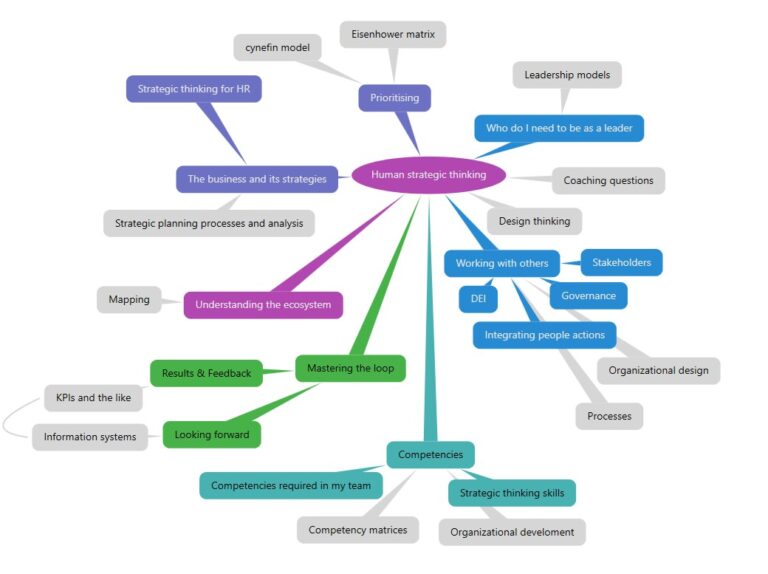
• Dilts’ Neurological Levels: This model provides a framework for understanding the different levels of human experience and how they influence behavior. By understanding these levels, leaders can develop strategies that address the underlying motivations and needs of employees.
• Hudson’s Wheel of Change: This model helps leaders to navigate the change process by understanding the different stages of change and the challenges associated with each stage. By applying this model, leaders can develop strategies that support employees through the change process and that minimize resistance.
These tools and models provide a structured approach to strategic thinking, helping leaders to analyze complex situations, generate creative solutions, and develop effective strategies.
The Human Element in Strategic Thinking
One of the key insights of Human Strategic Thinking is the recognition that people are at the heart of every strategic initiative. While strategies may be designed at the top levels of an organization, their success depends on the engagement, commitment, and capabilities of the people who implement them.
The human element in strategic thinking involves understanding how people react to change, how they are motivated, and how they can be supported to contribute to the organization’s success. This includes fostering a culture of collaboration, communication, and continuous learning, as well as addressing the human factors that can hinder strategic success, such as resistance to change or lack of alignment with organizational goals.
By integrating the human element into strategic thinking, leaders can develop strategies that are not only effective but also sustainable. This approach ensures that the organization’s people are engaged, motivated, and aligned with the strategic goals, leading to better outcomes and greater value creation.

Case Study: IBM’s Strategic Transformation
In the early 1990s, IBM, once a giant in the technology industry, faced a dire situation. The company was struggling with declining market share, escalating costs, and intense competition in a rapidly evolving technology landscape. Its traditional focus on hardware, particularly mainframes, was becoming obsolete as personal computers and decentralized computing gained prominence. By 1993, IBM was on the brink of bankruptcy, having reported a record loss of $8 billion the previous year.
Amid this crisis, Louis V. Gerstner Jr. was appointed as IBM’s CEO. Unlike his predecessors, Gerstner was an outsider to the technology industry, bringing a fresh perspective focused on business outcomes rather than technology for its own sake. He quickly recognized that IBM’s reliance on hardware was unsustainable and that the company needed to shift its focus towards services and solutions.
Gerstner’s strategy involved repositioning IBM as a services-led company. He emphasized the need for integrated solutions that combined hardware, software, and services to address customers’ business needs. This shift was marked by significant investments in IBM Global Services, which soon became the company’s most successful division, offering IT consulting, systems integration, and outsourcing services.
To streamline operations and focus on this new direction, Gerstner also led the divestiture of non-core businesses, including the sale of IBM’s networking hardware business to Cisco and its personal computer division to Lenovo. These moves allowed IBM to free up resources and concentrate on growing its services and software sectors.
A critical element of this transformation was the focus on IBM’s internal culture. Gerstner recognized that the company’s bureaucratic and siloed structure was stifling innovation and hindering collaboration. To address this, he broke down organizational silos, promoted cross-functional teamwork, and introduced a performance-based culture that rewarded innovation and results. He also streamlined decision-making processes, giving employees more autonomy and reducing management layers that had slowed down the company’s responsiveness.
Gerstner’s leadership emphasized the alignment of culture with strategic goals. He communicated a clear vision centered on customer focus, operational excellence, and continuous improvement. These values were reinforced through leadership development programs and performance incentives, creating a culture where employees were motivated to contribute to the company’s transformation.
The results of IBM’s strategic shift were remarkable. By the end of the 1990s, IBM had returned to profitability, with its services division leading the industry. The company’s software business, particularly in middleware, became a major contributor to its success. IBM’s stock price rebounded, and the company regained its position as a market leader.
Gerstner’s leadership is credited with saving IBM and setting the stage for its continued success into the 21st century. The case of IBM’s transformation highlights several key lessons: the importance of strategic agility, the role of leadership in driving change, the need for a holistic approach to strategy, and the power of culture in enabling strategic success.
IBM’s journey demonstrates that successful transformation requires more than just strategic shifts—it requires a deep alignment between strategy, culture, and leadership to navigate challenges and seize new opportunities in a rapidly changing environment.

Case Study: Netflix’s Strategic Shift
Netflix, founded in 1997 as a DVD rental-by-mail service, faced a rapidly changing technological landscape in the early 2000s. The rise of digital technology, faster internet speeds, and shifting consumer behaviors signaled that the future of entertainment would be online. Recognizing these trends, Netflix, under the leadership of co-founder and CEO Reed Hastings, made a bold strategic decision to pivot from its original DVD rental business to become a streaming service and, eventually, a content creator.
The transition began in 2007 when Netflix launched its streaming service, allowing subscribers to instantly watch TV shows and movies online. This move was revolutionary at a time when streaming was still in its infancy. Hastings and his team understood that the convenience of on-demand content would appeal to a growing number of consumers who were increasingly looking to the internet for entertainment. However, this shift required not only technological innovation but also a fundamental change in Netflix’s business model and company culture.
Technologically, Netflix had to invest heavily in building a robust streaming platform capable of delivering high-quality content to millions of users simultaneously. This involved developing sophisticated algorithms to recommend content, creating partnerships with internet service providers to ensure smooth streaming, and continually updating its platform to improve user experience. The company’s technological prowess became a key differentiator in the crowded entertainment market.
However, the strategic shift to streaming posed significant challenges beyond technology. Netflix needed to renegotiate licensing deals with content providers, who were initially reluctant to embrace streaming, fearing it would cannibalize their traditional revenue streams. Over time, as streaming gained popularity, these providers began to see Netflix as a competitor rather than a partner, leading to the loss of some content licenses. This challenge underscored the need for Netflix to evolve from simply a distributor of content to a producer of original content.
In 2013, Netflix made its next major strategic leap by entering the world of content creation with the release of its first original series, House of Cards. This move marked the beginning of Netflix’s transformation into a full-fledged entertainment studio. By producing its own content, Netflix gained control over its library, reducing its reliance on external providers and allowing it to differentiate itself from competitors.
This shift required a significant cultural transformation within Netflix. Hastings and his leadership team recognized that to stay ahead in the rapidly evolving entertainment industry, the company needed a culture that encouraged risk-taking, innovation, and rapid decision-making. Netflix adopted a unique corporate culture centered around the principles of “freedom and responsibility.” Employees were given the autonomy to make decisions and were encouraged to take risks in pursuit of innovation. This culture was supported by a flat organizational structure, where hierarchy was minimized, and communication was open and transparent.
Netflix’s culture of freedom and responsibility extended to its approach to content creation. Creators were given significant creative control, which attracted top talent in the industry and resulted in the production of high-quality, original content. This approach also allowed Netflix to rapidly expand its content library and appeal to a global audience with diverse tastes.
The strategic shifts that Netflix undertook—moving from DVD rentals to streaming and then to original content creation—transformed the company from a niche service provider into a global entertainment powerhouse. By 2020, Netflix had over 200 million subscribers worldwide and had become one of the most influential players in the entertainment industry, with a vast library of content spanning genres, languages, and cultures.
The success of Netflix’s strategic shift offers several key lessons. First, it highlights the importance of staying ahead of technological trends and being willing to disrupt one’s own business model to adapt to changing market conditions. Second, it underscores the value of a strong, adaptive company culture that empowers employees to innovate and take ownership of their work. Finally, Netflix’s journey illustrates the power of content in the digital age—owning and producing content not only provides control and differentiation but also drives long-term growth and resilience in a competitive market.
Through its strategic foresight and cultural transformation, Netflix not only survived the shift from physical media to digital but emerged as a leader in the global entertainment industry, setting the standard for streaming services and original content production.
Executive Summary
Chapter 1: Changing Perspective
Perspective in this context is defined as encompassing two key elements. First, it involves who you are, where you are, your focus, and the tools you use—all of which influence what you see and how you interpret it. Second, it involves what you perceive in any given situation. The chapter explores how these factors combine to shape one’s overall perspective, which is essential in forming accurate judgments and strategies.
The chapter draws a clear distinction between perspective and perception. Perception is described as the filters and interpretations applied to sensory inputs—what we see, hear, or feel—that ultimately shape our perspective. For example, a 5-year-old and a 75-year-old may perceive a 40-year-old person very differently, even though the person remains unchanged. This example illustrates how perception, influenced by one’s point of view and experiences, can vary significantly and affect how reality is interpreted.
The chapter introduces Daniel Kahneman’s theory of dual thought systems: System 1 and System 2. System 1 is characterized as fast, intuitive, and automatic—ideal for routine tasks requiring little conscious effort. In contrast, System 2 is slow, analytical, and deliberate, used for complex problem-solving. While System 1 allows for quick decision-making, it is also prone to errors and biases due to its reliance on shortcuts and assumptions.
A key focus of this chapter is on cognitive biases, which are systematic errors in thinking that affect judgments and decisions. These biases arise from the mind’s tendency to favor efficiency, often relying on System 1 thinking. For instance, discrimination is a form of bias where more or less value is attributed to a person or idea based on how similar or different it is to the observer’s preexisting beliefs or preferences. The chapter highlights the need to recognize and mitigate these biases to improve the quality of strategic decisions.
The chapter concludes by stressing the necessity of changing one’s perspective in strategic contexts. The ability to shift perspective is crucial for broadening one’s understanding and enhancing perception. Strategic thinking often requires taking a bird’s eye view—stepping back or even sideways—to fully grasp the complexities of a situation and to make well-informed decisions. By altering perspective, one can avoid the pitfalls of narrow or biased thinking and uncover insights that might otherwise be missed.
Changing Perspective sets the stage for understanding how deeply our perceptions and thought processes influence our strategic thinking. The chapter underscores the importance of being aware of and deliberately adjusting our perspectives to improve the accuracy of our decisions and the effectiveness of our strategies.

Chapter 2: The Evolution of Strategy
Chapter 2 traces the development of strategic thinking from its origins in military doctrine to its current application in the business world. This chapter provides a foundational understanding of how strategy has evolved over time and highlights the challenges and paradoxes that organizations face in crafting effective strategies today.
The concept of strategy originated in the military, where it was primarily focused on survival and defeating enemies. The term itself is derived from the Greek word strategos, meaning “generalship.” Military strategy involved meticulous planning, resource allocation, and tactical maneuvers designed to outwit and overpower adversaries. These principles, initially confined to the battlefield, have since been adapted and applied to business contexts, where the “enemies” are competitors, and the “battles” involve market share, innovation, and customer loyalty.
The business world was formally introduced to the concept of strategy through the work of H. Igor Ansoff, often referred to as the “father of strategic management.” Ansoff’s contributions brought strategic thinking to the forefront of business management, emphasizing the importance of a company’s ability to adapt to its environment in order to thrive. One of his most significant contributions was the development of Ansoff’s Matrix, a tool that helps organizations assess growth opportunities and manage risks through four strategic options: market penetration, market development, product development, and diversification.
As strategic thinking became more integrated into business practices, various efficiency approaches and tools were developed to aid in the formulation and execution of strategy. However, these efforts often yielded mixed results. Strategy became a specialized discipline within organizations, sometimes leading to its disconnection from day-to-day operations. While strategic analyses were thorough and plans were detailed, there was frequently a gap between the creation of a strategy and its successful implementation. This disconnect left many organizations struggling to translate strategic plans into actionable steps that could be understood and executed by all members of the organization.
Several key trends have shaped the evolution of business strategy over the decades. These include diversification, globalization, offshoring, reengineering, and the integration of new technologies. Diversification involved expanding into new markets or product lines to spread risk and capitalize on new opportunities. Globalization and offshoring allowed companies to tap into international markets and reduce costs by relocating production to countries with lower labor costs. Reengineering focused on redesigning business processes to improve efficiency and effectiveness. The rapid advancement of technology has also played a critical role, enabling new business models, disrupting traditional industries, and requiring companies to continuously adapt their strategies to remain competitive.
The chapter also explores several paradoxes inherent in strategic decision-making. For instance, the most accessible routes to potential customers are often the most crowded, limiting the ability of businesses to stand out. Conversely, paths that offer new opportunities often require innovation and a willingness to take risks, which can be more challenging. Additionally, while control is essential for managing risks, it can also stifle creativity and movement, creating new risks in the process. Therefore, a delicate balance between control and flexibility is necessary for effective strategic management.
Finally, the chapter emphasizes the need for clarity in goals and rules, paired with the adaptability to respond to changing circumstances and unforeseen opportunities. Successful strategy requires a clear understanding of objectives, but also the agility to pivot when necessary. This balance allows organizations to navigate the complexities of the business environment and maintain resilience in the face of change.
The Evolution of Strategy provides a historical overview of how strategic thinking has developed and highlights the ongoing challenges and paradoxes faced by organizations in crafting and executing effective strategies. This chapter sets the stage for deeper exploration of strategic tools and frameworks that will be covered in subsequent parts of the course.

Chapter 3: What is Strategic Thinking?
This chapter highlights the shift from traditional strategic planning to a more dynamic and inclusive approach that emphasizes adaptability, collaboration, and innovation.
The concept of strategic thinking has undergone significant transformations, moving away from rigid planning exercises that focused solely on achieving predetermined outputs. Traditionally, strategy was a top-down process where plans were meticulously crafted by senior leaders and executed by the organization with little room for deviation. Adaptations to changing circumstances were often slow, as decision-making was centralized at the highest levels. This approach, while structured, was often ill-equipped to handle the volatility, uncertainty, and complexity of modern business environments.
As organizations faced increasing complexity and rapid change, the limitations of traditional strategic planning became apparent. Strategic thinking evolved to become a more flexible and inclusive process, enabling quicker and more effective responses to unforeseen challenges. This shift has allowed more decision-makers within an organization to contribute to its strategic agility, enhancing the organization’s resilience in the face of uncertainty.
The chapter introduces a comprehensive model of strategic thinking, developed by B. Petitpas and A-L. Marcadet. This model consists of three interrelated components that together form a holistic approach to strategic thinking:
1. Creating Meaning and Alignment – Perspective and Vision: This component emphasizes the importance of gaining a broad, comprehensive view of the organizational landscape—what is often referred to as a bird’s-eye view. Strategic thinking in this context involves looking beyond immediate operational realities to understand broader trends, challenges, and opportunities. The goal is to define a clear vision for the organization’s future, create meaning for its stakeholders, and align strategic actions with this vision. By doing so, organizations can ensure that their strategies are not only well-conceived but also deeply connected to their long-term goals.
2. Innovation and Reinvention – Creating Value – Driving Impact: Strategic thinking is not just about planning; it’s about delivering results. This component focuses on the need for organizations to innovate, reinvent themselves, and create value in ways that have a tangible impact. In today’s competitive environment, organizations must be willing to see and act differently, embracing innovation as a core element of their strategy. This is where the theoretical aspects of strategy are put into practice—where ideas are tested, refined, and implemented to achieve real-world outcomes.
3. Ecosystems, Community, and Collaboration: The final component of the model underscores the importance of collaboration within and beyond the organization. Strategic thinking requires understanding and engaging with both internal and external ecosystems, including stakeholders, partners, and communities. Effective collaboration ensures that the organization’s strategy is not developed in isolation but is informed by and aligned with the needs and perspectives of all relevant parties. This collaborative approach is particularly crucial in today’s interconnected world, where the success of an organization often depends on its ability to work effectively with others.
For the purposes of this program, strategic thinking is defined as the ability to take a global, integrated view of the organization and its environment. It involves clarifying what is truly important for the future and sustainability of the organization and making decisions that align with this long-term vision. Strategic thinking requires integrating both known and unknown factors, balancing short-term actions with long-term goals, and considering the needs of the organization’s various ecosystems.
One of the key takeaways from this chapter is that strategic thinking should not be confined to senior leadership. Instead, everyone within the organization, regardless of their role or hierarchical level, should be encouraged to think and act strategically. This inclusive approach is particularly important in a teleworking context, where understanding the organization’s broader goals and the needs of others is essential for effective collaboration.
By adopting the strategic thinking model presented in this chapter, organizations can better navigate the complexities of today’s business environment and achieve sustained success.

Chapter 4 : What Do We Mean by Focusing on the Human Element?
Chapter 4 emphasizes the critical role that people play in the success or failure of strategic initiatives. While strategies often falter due to poor execution, a closer examination frequently reveals that the underlying cause is a lack of attention to the human element within the organization.
Organizations sometimes fail to achieve their strategic goals, and in some cases, they lose sight of those goals until they are required to report on progress. The human element is often the decisive factor in whether a strategy succeeds or fails. It is the people within an organization who are responsible for interpreting strategic goals, executing plans, and adapting to changes in the environment. If the human element is neglected—whether through poor communication, lack of alignment, or cultural misfit—the likelihood of strategic success diminishes significantly.
When individuals within an organization develop strong strategic thinking skills, they become better equipped to align their personal goals with the broader objectives of the organization. This alignment allows for more informed decision-making and the ability to adjust actions to better support the organization’s strategy. Strategic thinkers are also more capable of gaining a comprehensive understanding of their organization, its environment, and their team’s role within it. This broader perspective enables them to focus their efforts where they are most needed, track key metrics, and make decisions that are both effective and aligned with long-term goals.
The chapter presents several examples of how neglecting the human element can lead to strategic failure.
• Kodak: Once a dominant force in the photographic equipment industry, Kodak failed to adapt to the digital technology revolution. Despite being a pioneer in digital photography, Kodak was unable to transition its business model and culture to embrace this new technology. The company’s leadership underestimated the human resistance to change and the cultural attachment to traditional film. The result was a dramatic decline in market relevance, illustrating how failing to engage the human element in strategic shifts can have severe consequences.
• HP-Compaq Merger: The merger between HP and Compaq appeared to make sense on paper, offering potential synergies and market expansion. However, the merger ultimately struggled due to the stark cultural differences between the two companies. The “HP Way,” which emphasized a specific corporate culture and set of values, clashed with Compaq’s different approach. Poor communication and a lack of cultural integration led to internal conflicts and disrupted operations, demonstrating how misalignment of the human element can derail even the most promising strategic initiatives.
Conversely, the human element can be a powerful driver of innovation and success when it is effectively harnessed.
• Post-its: The invention of Post-it notes is a prime example of how a strategic mindset, combined with a focus on the human element, can turn a failure into success. Originally, the adhesive used in Post-its was considered a failure because it did not stick firmly. However, by shifting perspective and asking, “What can I do with this?”, the product was repurposed into one of the most successful office supplies in history. This success was driven by the ability to see potential where others saw failure—a hallmark of effective strategic thinking.
• Nintendo: Founded in 1889 as a playing card company, Nintendo’s evolution into a global leader in video games is another testament to the power of strategic thinking and innovation. The company’s success can be attributed to its willingness to experiment with different products and services over the years. This iterative approach, combined with a deep understanding of market trends and consumer preferences, enabled Nintendo to pivot from traditional entertainment to electronic gaming. The company’s leadership, particularly the founder’s grandson, exemplified how embracing the human element—through creativity, risk-taking, and adaptability—can lead to long-term success.
By focusing on the people who implement and are affected by strategic decisions, organizations can enhance their chances of success. Whether it’s avoiding the pitfalls that befell companies like Kodak and HP or emulating the innovative successes of companies like 3M and Nintendo, the human element is key to realizing the full potential of any strategic initiative.
This chapter highlights the critical role that human factors play in both the failures and successes of strategic initiatives, emphasizing the need for organizations to cultivate strategic thinking at all levels to fully leverage the human element.

Chapter 5: About Strategic Plans
Chapter 5 delves into the essential aspects of strategic planning within organizations. It outlines the purpose, processes, and content of strategic plans, emphasizing their critical role in guiding organizational efforts toward achieving defined goals.
A strategic plan serves as a blueprint for an organization’s future, outlining the desired outcomes of its strategic efforts—often referred to as a “campaign.” Typically, a strategy includes three to seven key focus areas or “axes” that direct the organization’s actions. The timeline for strategic plans has evolved significantly over time. While long-term plans once spanned ten years, the rapid pace of change in today’s business environment has shortened the planning horizon to around 18-24 months. This shift reflects the need for organizations to remain agile and responsive to dynamic market conditions.
Strategic plans serve multiple purposes. Primarily, they provide a clear roadmap for what needs to be done, when, by whom, and how progress will be measured. This ensures that everyone in the organization is aligned and working towards the same objectives. Additionally, strategic plans function as vital communication tools, articulating the organization’s goals and strategies to all stakeholders, including employees, investors, and partners.
The process of developing a strategic plan varies depending on the organization’s structure and culture. In many cases, the Board of Administrators, or the owner in smaller organizations, is responsible for approving the strategic plan. However, the methods used to create the plan can differ significantly:
1. Top-Down Approach: In this approach, top leaders within the organization, typically executives, are responsible for developing the strategic plan. They then submit the plan to the Board for approval. The underlying assumption is that these leaders possess the necessary knowledge about the organization, its environment, market trends, capabilities, and potential threats to produce an accurate and effective strategic plan.
2. Top-Down with Specialist Input: This variation of the top-down approach involves top leaders taking the lead in creating the strategic plan, but inviting specialists or experts as needed to contribute to specific areas. This ensures that the plan is informed by specialized knowledge, which can enhance its accuracy and effectiveness.
3. Inclusive Approach: In an inclusive approach, a broader range of employees and stakeholders are involved in the strategic planning process. This method is more common in the non-profit sector, where collaboration and consensus-building are often prioritized. However, its use in for-profit organizations depends on the organizational culture and the leadership’s commitment to inclusivity. The inclusive approach allows for a diversity of perspectives, which can lead to a more comprehensive and robust strategic plan.
The content of a strategic plan typically covers several key areas, each of which is crucial to the organization’s success. These areas include:
• Market and Customers: Understanding the market and customer needs is fundamental to any strategic plan. This section outlines the organization’s target markets, customer segments, and strategies for meeting their needs.
• External Constraints: This includes an analysis of external factors that could impact the organization, such as regulatory requirements, economic conditions, and technological trends.
• Stakeholders: Strategic plans must consider the interests and needs of various stakeholders, including employees, investors, suppliers, and the broader community.
• Organizational Priorities: This section identifies the organization’s primary areas of focus, detailing specific objectives, success indicators, and deadlines for each priority.
• Functional Support: Finally, each function within the organization (such as marketing, finance, operations, etc.) specifies how it will contribute to achieving the overall strategic objectives. This ensures that all parts of the organization are aligned and working towards common goals.
Chapter 5 emphasizes the importance of strategic planning as a tool for organizational success. By clearly defining objectives, involving the right stakeholders, and regularly reviewing progress, organizations can navigate complex environments and achieve their strategic goals. The chapter also highlights the flexibility in approaches to strategic planning, allowing organizations to tailor the process to fit their unique culture and needs.

Chapter 6: Who is My Organization?
Chapter 6 explores the foundational concepts of an organization’s mission, vision, and values, emphasizing their critical roles in defining the identity, purpose, and aspirations of the organization. The chapter underscores the importance of these guiding statements in shaping decision-making, actions, and overall strategic direction.
The mission of an organization is its raison d’être—its reason for existence. It articulates the core purpose for which the organization was created and what it seeks to contribute to the world. More than just a statement of intent, the mission serves as a compass, guiding every decision, strategy, and action taken within the organization. It communicates to employees, customers, partners, and other stakeholders what the organization is about, what it provides, and why it matters.
A well-defined mission statement encapsulates the essence of the organization, touching upon what it offers and the value it aims to deliver. It also reflects the organization’s fundamental values, providing a sense of identity and continuity that helps align the efforts of all stakeholders towards a common goal. Whether the mission is to innovate in technology, provide affordable products, or deliver exceptional services, it serves as the foundation upon which the organization builds its strategies and measures its success.
In addition to the mission, a vision statement is equally critical in strategic planning. While the mission defines the organization’s current purpose, the vision describes what the organization aspires to become and achieve in the future. The vision is forward-looking, outlining the desired changes and advancements the organization seeks to accomplish over the next strategic plan. It serves as an inspirational guide, motivating employees and stakeholders by painting a picture of the organization’s future potential.
Sometimes, mission and vision statements are combined into a single, overarching declaration that captures both the organization’s current purpose and its future aspirations. Whether separate or combined, the vision statement provides a clear direction for the organization, helping to align long-term goals with day-to-day operations.
Values are at the heart of organizational culture. They are the lived beliefs and convictions that define how decisions are made, how people work and collaborate, and what is considered acceptable behavior. Values shape “how things are done here” and provide a framework for ensuring consistency in actions and decisions across the organization.
For values to be effective, they must support both the mission and vision. When these three pillars—mission, vision, and values—are aligned, they reinforce each other, creating a cohesive and strong organizational identity. This alignment helps to cultivate a culture of trust, engagement, and commitment among employees and stakeholders. However, when values are misaligned with the mission and vision, or when they are seen as mere lip service rather than truly lived principles, they can lead to cynicism and disengagement. This disconnect can be damaging to the organization’s morale and overall success.
The chapter provides examples of mission and vision statements from well-known organizations to illustrate how these statements define and differentiate a company:
• IKEA (Mission): “To offer a wide range of well-designed, functional home furnishing products at prices so low that as many people as possible will be able to afford them.” This mission reflects IKEA’s commitment to making quality home furnishings accessible to a broad audience, emphasizing affordability, functionality, and design.
• Google (Mission): “To organize the world’s information and make it universally accessible and useful.” This mission highlights Google’s goal of making information easily accessible to everyone, underscoring its role as a global leader in search technology.
• Tesla (Vision): “To create the most compelling car company of the 21st century by driving the world’s transition to electric vehicles.” Tesla’s vision statement reflects its ambition to lead the automotive industry’s shift toward sustainable energy, positioning itself as a trailblazer in electric vehicles.
• Amazon (Vision): “To be Earth’s most customer-centric company; to build a place where people can come to find and discover anything they might want to buy online.” Amazon’s vision emphasizes its goal of becoming the ultimate online destination for consumers, driven by a relentless focus on customer satisfaction.
These examples demonstrate how mission, vision, and values work together to encapsulate an organization’s purpose, aspirations, and principles, setting the tone for its strategic direction. Each statement provides a clear and concise description of what the organization seeks to achieve, guiding its actions and informing its stakeholders.
One of the key themes of this chapter is the alignment of organizational decisions and actions with the mission, vision, and values. For an organization to be successful, all its endeavors—from daily operations to long-term strategic initiatives—must be in harmony with these guiding pillars. This alignment ensures that the organization remains focused on its core purpose and future aspirations, avoids mission drift, and continues to deliver on its promises to stakeholders.
When the mission, vision, and values are clearly communicated and deeply ingrained in the organizational culture, they become powerful tools for decision-making. Employees at all levels can refer to these guiding statements when making choices, ensuring that their actions support both the current and future goals of the organization. This consistency helps build trust with stakeholders, as they can see that the organization is true to its values and committed to its purpose and vision.
Chapter 6 emphasizes that understanding and articulating the organization’s mission, vision, and values are crucial for defining its identity and guiding its strategic direction. These guiding statements are not just declarations of intent; they are the cornerstones of the organization’s strategy, shaping its decisions and actions at every level. By ensuring that all activities are aligned with the mission, vision, and values, organizations can maintain focus, build trust with stakeholders, and achieve sustained success.

Chapter 7: My Organization’s Industry
Chapter 7 provides an in-depth exploration of what constitutes an industry, the importance of understanding one’s industry, and the tools available for analyzing industry dynamics. The chapter highlights the significance of industries in shaping the strategic context within which organizations operate and how this understanding can be leveraged for competitive advantage.
An industry is defined as a group of businesses that are similar in terms of their activities, products, or services. These businesses typically operate under the same regulatory and governmental frameworks, face similar market conditions, and share certain behavioral and value-based commonalities. The North American Industry Classification System (NAICS) is one such system used to categorize and define industries, providing a standardized method for analyzing and comparing businesses within specific sectors.
The chapter provides examples of sectors and the industries that fall within them to illustrate the breadth and diversity of industry classifications:
• Professional, Scientific, and Technical Services Sector: This sector includes industries such as legal services, engineering services, management consulting services, computer systems design and related services, and advertising agencies. Each of these industries shares a focus on providing specialized professional services that require technical expertise and knowledge.
• Manufacturing Sector: This sector encompasses industries like industrial machinery manufacturing, semiconductor and electronic component manufacturing, navigational and medical instrument manufacturing, and dairy product manufacturing. These industries are involved in the production and manufacturing of goods, each with its own specific processes and technologies.
Understanding the specific industry in which an organization operates is crucial, as it determines the competitive landscape, regulatory environment, and the types of opportunities and challenges the organization is likely to face.
Industries are shaped by their participants, who typically receive similar treatment from government and regulatory agencies, benefit from the same types of support, and are subject to similar constraints. This shared environment fosters commonalities in behavior, values, and strategic challenges within industries. For example, businesses within the same industry often face similar competitive pressures, regulatory requirements, and market opportunities.
An industry’s characteristics also influence how companies within it interact with customers, suppliers, and competitors. This understanding is essential for developing effective strategies that align with industry norms and leverage the unique aspects of the industry to gain a competitive advantage.
The chapter distinguishes between the concepts of market and industry. While an industry encompasses a group of similar businesses, a market refers to the specific arena where transactions occur between a company and its customers. Markets exist within industries and can be segmented further into sub-markets based on different products, services, or customer demographics.
For example, within the travel industry, distinct markets may include tour operators, accommodations, and food and beverage services. Understanding the specific markets within an industry allows organizations to tailor their strategies to meet the needs of their target customers more effectively.
One of the key tools introduced in this chapter for analyzing industry dynamics is Porter’s Five Forces model. This framework helps organizations assess the competitive forces within their industry, which can influence profitability and strategic decision-making. The five forces are:
1. Competitive Rivalry: The intensity of competition among existing players in the industry. Lower differentiation between products typically leads to higher rivalry.
2. Threat of New Entry: The ease with which new competitors can enter the industry. High barriers to entry reduce this threat, while low barriers increase it.
3. Threat of Substitution: The risk that customers might switch to alternative products or services, potentially from different industries, that fulfill the same need.
4. Supplier Power: The ability of suppliers to influence the prices and quality of goods and services. This power is greater when there are few suppliers or when switching suppliers is difficult.
5. Buyer Power: The influence that customers have over pricing and quality. This power is higher when there are few buyers, but they make large purchases, allowing them to negotiate better terms.
Understanding these forces helps organizations develop strategies to mitigate risks and capitalize on opportunities within their industry.
Chapter 7 emphasizes the importance of thoroughly understanding the industry in which an organization operates. By analyzing industry dynamics using tools like Porter’s Five Forces, organizations can better navigate their competitive landscape, identify potential threats and opportunities, and craft strategies that align with industry conditions. This deep industry knowledge is a critical component of strategic planning and decision-making.
Chapter 8: Value Drivers
Chapter 8 focuses on the critical factors that contribute to creating value within an organization. These value drivers are integral to the organization’s success, influencing everything from financial performance to stakeholder satisfaction. This chapter explores the concept of value drivers, their strategic importance, and the criteria for selecting and managing them effectively.
Value drivers are the elements within an organization that directly contribute to creating value through its products, services, employees, customers, and overall operations. This value can be expressed in financial terms, such as increased profitability or revenue, or as enhanced attractiveness to shareholders, customers, and other stakeholders. The core idea is that value drivers are the forces that propel the organization toward its strategic objectives, ensuring that it not only survives but thrives in a competitive environment.
A crucial aspect of understanding value drivers is recognizing that not all increases in revenue or efficiency translate into real value. For instance, an organization might boost its revenue but still face declining profitability or even incur deficits if the added revenue does not generate sufficient profit margins. Similarly, innovations may not create value if they fail to resonate with internal or external stakeholders. Moreover, excessive focus on efficiency might undermine an organization’s resilience and agility, making it less adaptable to changes in the market or operational disruptions.
Value drivers are strategic when they align with and support the achievement of corporate strategic objectives. Their strategic impact is twofold: they help organizations focus on what truly matters, and they create synergy with the overall strategy. When value drivers are aligned with the organization’s goals, they ensure that resources are concentrated on activities that drive success and contribute to long-term sustainability.
The strategic nature of value drivers means that they play a crucial role in shaping the organization’s direction and priorities. For example, an organization might identify innovation, customer satisfaction, or employee engagement as key value drivers, each of which directly supports its broader strategic aims. By focusing on these drivers, the organization can align its efforts across various departments and functions, ensuring that everyone is working toward the same goals.
The process of choosing value drivers involves a careful analysis of the organization’s strengths, weaknesses, opportunities, and threats. Strengths are the elements that are conducive to value creation, benefiting key stakeholders such as shareholders, clients, and employees. On the other hand, weaknesses and threats highlight areas where the organization might face challenges in the future. The intersection of these factors with the organization’s strategies helps identify which elements should become value drivers to ensure success.
Growth drivers are particularly important within this framework. Organizations that adopt growth-oriented value drivers have been shown to outperform their competitors. However, it’s not just the decision to make growth a value driver that matters; how these drivers are formulated, integrated into the organization’s operations, and managed is equally critical. Growth drivers must be woven into the fabric of the organization, influencing decision-making at all levels.
Two critical criteria should guide the selection and management of value drivers:
1. Management Influence: The factors identified as value drivers should be within the control or significant influence of management. This ensures that the organization can actively shape and direct these drivers to achieve desired outcomes.
2. Impact on Value Creation: The chosen value drivers must have a substantial impact on value creation. This means that focusing on these drivers will lead to meaningful improvements in the organization’s performance and its ability to meet strategic objectives.
By carefully selecting and managing value drivers, organizations can ensure that they are not only pursuing growth and efficiency but are also building resilience and adaptability. These drivers become the levers through which management can steer the organization toward sustained success.
Chapter 8 emphasizes that value drivers are essential components of an organization’s strategic framework. By identifying and managing the right value drivers, organizations can create a strong foundation for achieving their strategic objectives, enhancing their competitive position, and delivering long-term value to stakeholders. The chapter underscores the importance of aligning value drivers with strategic goals and ensuring that they are effectively integrated into the organization’s operations.

Chapter 9: Stakeholders
Chapter 9 explores the various types of stakeholders that influence and are influenced by an organization’s actions and decisions. Understanding stakeholders is crucial for effective strategic planning, as they play a significant role in shaping the organization’s direction, operations, and overall success.
Stakeholders can be broadly categorized into two main types: internal and external.
• Internal Stakeholders: These are individuals or groups directly involved in the decision-making processes or actions taken by the organization. Internal stakeholders typically include shareholders, management, and employees. Shareholders, by virtue of their ownership stakes, have a vested interest in the organization’s performance and are often focused on financial returns. Management and employees are directly involved in the daily operations and are crucial in executing the organization’s strategies. Their engagement, satisfaction, and productivity directly impact the organization’s success.
• External Stakeholders: External stakeholders are not directly involved in the organization’s day-to-day operations but hold the power to influence its decisions and actions. Examples of external stakeholders include customers, who drive demand for the organization’s products or services, and governmental and regulatory agencies, which impose regulations that the organization must comply with. These stakeholders are essential because their actions, feedback, and requirements can significantly impact the organization’s strategic direction and operational decisions.
Among stakeholders, shareholders often receive particular attention due to their financial investment in the organization. Shareholders can be institutional investors, financial institutions, individual investors, employees, or even government agencies. Their primary aim is to secure financial returns on their investments. Because of their ownership stakes, shareholders exert considerable influence over the organization’s strategic decisions, especially those related to financial performance, risk management, and governance.
In addition to shareholders, organizations must consider a range of other stakeholders whose interests and influence can vary widely:
• Employees, Including Management: Employees are vital to the organization’s operations, productivity, and culture. Management, as part of the internal stakeholder group, plays a dual role in decision-making and execution. Their commitment and effectiveness are critical to implementing the organization’s strategies.
• Customers: As the primary source of revenue, customers are central to the organization’s success. Understanding customer needs and preferences is essential for developing products and services that resonate in the market. Customers also influence the organization’s reputation and brand image through their feedback and loyalty.
• Suppliers: Suppliers provide the necessary resources, materials, and services that enable the organization to produce its goods or deliver its services. Maintaining strong relationships with suppliers ensures a steady supply chain, which is crucial for operational efficiency and quality control.
• Government and Regulatory Bodies: These stakeholders impose regulations and standards that the organization must adhere to. Compliance with these requirements is essential to avoid legal penalties, fines, and reputational damage. Regulatory bodies also shape the industry environment through policy decisions that can create opportunities or pose challenges for the organization.
• Financial Institutions and Creditors: These stakeholders provide the capital and financial resources necessary for the organization to operate and grow. Their influence is significant, particularly in matters related to financing, investment, and risk management. Maintaining strong relationships with financial institutions and creditors is crucial for ensuring access to funding and favorable financial terms.
• Communities: The communities in which the organization operates are important stakeholders, particularly in terms of social responsibility and sustainability. Organizations are increasingly expected to contribute positively to their communities through ethical practices, environmental stewardship, and social initiatives. Engaging with communities helps build goodwill, enhance reputation, and ensure long-term sustainability.
• Other Stakeholders: There are many other types of external stakeholders that organizations must consider, depending on their industry and context. These may include the media, which can influence public perception; trade unions, which represent employee interests; and not-for-profit organizations, which may advocate for social or environmental issues relevant to the organization’s operations.
Chapter 9 emphasizes the importance of identifying and understanding the various stakeholders that interact with an organization. Each stakeholder group has its own interests, influence, and impact on the organization’s strategic decisions and outcomes. By recognizing and effectively managing stakeholder relationships, organizations can align their strategies with stakeholder expectations, mitigate risks, and enhance their overall performance and reputation.

Chapter 10: Ecosystems
Chapter 10 explores the concept of ecosystems within the business context, emphasizing the importance of interconnectedness and collaboration for organizational success. The chapter draws parallels between natural ecosystems and business ecosystems, illustrating how both require a balanced and supportive environment for all participants to thrive.
Originally a term used in biology to describe communities of living organisms and their interactions with the environment, the concept of an ecosystem has been extended to the business world. In a business context, an ecosystem refers to the network of interactions, partnerships, and interdependencies that exist among various entities, including companies, customers, suppliers, regulators, and other stakeholders. As businesses operate in increasingly complex and interconnected environments, the importance of recognizing and nurturing these ecosystems has become evident.
A thriving business ecosystem is one where all members benefit from their participation. Just as in natural ecosystems, where the well-being of each species is linked to the health of the entire system, a business ecosystem functions optimally when the needs and goals of all participants are aligned and supported. This interconnectedness allows for innovation, growth, and resilience, enabling organizations to adapt to changes and challenges more effectively.
The chapter places particular emphasis on the internal ecosystem of an organization, which is composed of various elements that together form the foundation of its operations and strategic direction. The internal ecosystem includes the following components:
• Values, Vision, and Mission: These elements define the core identity and purpose of the organization. The mission articulates why the organization exists, the vision outlines what it aspires to achieve in the future, and the values represent the beliefs and principles that guide decision-making and behavior. Together, they form the guiding framework for all strategic initiatives and actions.
• Strategic Objectives and Priorities: These are the specific goals that the organization aims to achieve in alignment with its mission and vision. Strategic objectives provide direction, while priorities help allocate resources and focus efforts on the most critical areas. The alignment of strategic objectives with the broader ecosystem ensures that the organization remains responsive to both internal and external factors.
• Corporate Culture: Corporate culture encompasses the shared values, norms, and behaviors that characterize how people within the organization interact and work together. A strong, positive culture fosters collaboration, innovation, and employee engagement, all of which are essential for a thriving internal ecosystem. Culture also plays a key role in how the organization adapts to change and navigates challenges.
• Governance: Governance refers to the structures and processes through which decisions are made and authority is exercised within the organization. Effective governance ensures that the organization operates with transparency, accountability, and alignment with its strategic objectives. It also provides the framework for managing risks and ensuring compliance with legal and regulatory requirements.
• Organizational Structure: The way an organization is structured—whether hierarchically, matrixed, or flat—affects how information flows, how decisions are made, and how flexible the organization can be in responding to changes. A well-designed structure supports efficient operations, clear communication, and the alignment of teams and departments with strategic goals.
• Assets, Processes, and Technologies: These are the tangible and intangible resources that the organization uses to create value. Assets include physical infrastructure, intellectual property, and financial resources, while processes and technologies encompass the systems and tools that enable the organization to operate effectively. Ensuring that these elements are well-integrated and aligned with the organization’s strategic objectives is crucial for maintaining a competitive edge.
• Leadership: Leadership within the organization drives the internal ecosystem by setting the vision, inspiring action, and guiding the organization through change. Effective leaders cultivate a positive culture, align teams with strategic objectives, and ensure that the organization remains adaptable and resilient.
• People and Their Aspirations: Employees are the heart of the internal ecosystem. Their skills, knowledge, and aspirations contribute to the organization’s success. Fostering a supportive environment where employees can grow, innovate, and achieve their potential is essential for a thriving ecosystem. This includes providing opportunities for professional development, recognizing achievements, and ensuring that the organization’s goals are aligned with the aspirations of its people.
• Competencies, Including Innovation: The competencies of an organization, particularly its ability to innovate, are key drivers of success. Innovation enables the organization to stay ahead of competitors, adapt to changing market conditions, and meet the evolving needs of customers. Building and nurturing these competencies within the internal ecosystem ensures that the organization remains dynamic and capable of sustained growth.
Chapter 10 emphasizes that understanding and nurturing the internal ecosystem is vital for organizational success. By aligning values, vision, mission, strategic objectives, and the various components of the internal ecosystem, organizations can create a supportive environment that fosters growth, innovation, and resilience. This internal alignment, in turn, strengthens the organization’s position within the broader business ecosystem, enabling it to thrive in a complex and interconnected world.
Curriculum
Program Title – Workshop 1 – Workshop Subject
- Changing Perspective
- The Evolution of Strategy
- What is Strategic Thinking?
- What do we mean by focusing on the Human Element?
- About Strategic Plans
- Who is my Organization?
- My Organization’s Industry
- Value Drivers
- Stakeholders
- Ecosystems
Distance Learning
Introduction
Welcome to Appleton Greene and thank you for enrolling on the Human Strategic Thinking corporate training program. You will be learning through our unique facilitation via distance-learning method, which will enable you to practically implement everything that you learn academically. The methods and materials used in your program have been designed and developed to ensure that you derive the maximum benefits and enjoyment possible. We hope that you find the program challenging and fun to do. However, if you have never been a distance-learner before, you may be experiencing some trepidation at the task before you. So we will get you started by giving you some basic information and guidance on how you can make the best use of the modules, how you should manage the materials and what you should be doing as you work through them. This guide is designed to point you in the right direction and help you to become an effective distance-learner. Take a few hours or so to study this guide and your guide to tutorial support for students, while making notes, before you start to study in earnest.
Study environment
You will need to locate a quiet and private place to study, preferably a room where you can easily be isolated from external disturbances or distractions. Make sure the room is well-lit and incorporates a relaxed, pleasant feel. If you can spoil yourself within your study environment, you will have much more of a chance to ensure that you are always in the right frame of mind when you do devote time to study. For example, a nice fire, the ability to play soft soothing background music, soft but effective lighting, perhaps a nice view if possible and a good size desk with a comfortable chair. Make sure that your family know when you are studying and understand your study rules. Your study environment is very important. The ideal situation, if at all possible, is to have a separate study, which can be devoted to you. If this is not possible then you will need to pay a lot more attention to developing and managing your study schedule, because it will affect other people as well as yourself. The better your study environment, the more productive you will be.
Study tools & rules
Try and make sure that your study tools are sufficient and in good working order. You will need to have access to a computer, scanner and printer, with access to the internet. You will need a very comfortable chair, which supports your lower back, and you will need a good filing system. It can be very frustrating if you are spending valuable study time trying to fix study tools that are unreliable, or unsuitable for the task. Make sure that your study tools are up to date. You will also need to consider some study rules. Some of these rules will apply to you and will be intended to help you to be more disciplined about when and how you study. This distance-learning guide will help you and after you have read it you can put some thought into what your study rules should be. You will also need to negotiate some study rules for your family, friends or anyone who lives with you. They too will need to be disciplined in order to ensure that they can support you while you study. It is important to ensure that your family and friends are an integral part of your study team. Having their support and encouragement can prove to be a crucial contribution to your successful completion of the program. Involve them in as much as you can.
Successful distance-learning
Distance-learners are freed from the necessity of attending regular classes or workshops, since they can study in their own way, at their own pace and for their own purposes. But unlike traditional internal training courses, it is the student’s responsibility, with a distance-learning program, to ensure that they manage their own study contribution. This requires strong self-discipline and self-motivation skills and there must be a clear will to succeed. Those students who are used to managing themselves, are good at managing others and who enjoy working in isolation, are more likely to be good distance-learners. It is also important to be aware of the main reasons why you are studying and of the main objectives that you are hoping to achieve as a result. You will need to remind yourself of these objectives at times when you need to motivate yourself. Never lose sight of your long-term goals and your short-term objectives. There is nobody available here to pamper you, or to look after you, or to spoon-feed you with information, so you will need to find ways to encourage and appreciate yourself while you are studying. Make sure that you chart your study progress, so that you can be sure of your achievements and re-evaluate your goals and objectives regularly.
Self-assessment
Appleton Greene training programs are in all cases post-graduate programs. Consequently, you should already have obtained a business-related degree and be an experienced learner. You should therefore already be aware of your study strengths and weaknesses. For example, which time of the day are you at your most productive? Are you a lark or an owl? What study methods do you respond to the most? Are you a consistent learner? How do you discipline yourself? How do you ensure that you enjoy yourself while studying? It is important to understand yourself as a learner and so some self-assessment early on will be necessary if you are to apply yourself correctly. Perform a SWOT analysis on yourself as a student. List your internal strengths and weaknesses as a student and your external opportunities and threats. This will help you later on when you are creating a study plan. You can then incorporate features within your study plan that can ensure that you are playing to your strengths, while compensating for your weaknesses. You can also ensure that you make the most of your opportunities, while avoiding the potential threats to your success.
Accepting responsibility as a student
Training programs invariably require a significant investment, both in terms of what they cost and in the time that you need to contribute to study and the responsibility for successful completion of training programs rests entirely with the student. This is never more apparent than when a student is learning via distance-learning. Accepting responsibility as a student is an important step towards ensuring that you can successfully complete your training program. It is easy to instantly blame other people or factors when things go wrong. But the fact of the matter is that if a failure is your failure, then you have the power to do something about it, it is entirely in your own hands. If it is always someone else’s failure, then you are powerless to do anything about it. All students study in entirely different ways, this is because we are all individuals and what is right for one student, is not necessarily right for another. In order to succeed, you will have to accept personal responsibility for finding a way to plan, implement and manage a personal study plan that works for you. If you do not succeed, you only have yourself to blame.
Planning
By far the most critical contribution to stress, is the feeling of not being in control. In the absence of planning we tend to be reactive and can stumble from pillar to post in the hope that things will turn out fine in the end. Invariably they don’t! In order to be in control, we need to have firm ideas about how and when we want to do things. We also need to consider as many possible eventualities as we can, so that we are prepared for them when they happen. Prescriptive Change, is far easier to manage and control, than Emergent Change. The same is true with distance-learning. It is much easier and much more enjoyable, if you feel that you are in control and that things are going to plan. Even when things do go wrong, you are prepared for them and can act accordingly without any unnecessary stress. It is important therefore that you do take time to plan your studies properly.
Management
Once you have developed a clear study plan, it is of equal importance to ensure that you manage the implementation of it. Most of us usually enjoy planning, but it is usually during implementation when things go wrong. Targets are not met and we do not understand why. Sometimes we do not even know if targets are being met. It is not enough for us to conclude that the study plan just failed. If it is failing, you will need to understand what you can do about it. Similarly if your study plan is succeeding, it is still important to understand why, so that you can improve upon your success. You therefore need to have guidelines for self-assessment so that you can be consistent with performance improvement throughout the program. If you manage things correctly, then your performance should constantly improve throughout the program.
Study objectives & tasks
The first place to start is developing your program objectives. These should feature your reasons for undertaking the training program in order of priority. Keep them succinct and to the point in order to avoid confusion. Do not just write the first things that come into your head because they are likely to be too similar to each other. Make a list of possible departmental headings, such as: Customer Service; E-business; Finance; Globalization; Human Resources; Technology; Legal; Management; Marketing and Production. Then brainstorm for ideas by listing as many things that you want to achieve under each heading and later re-arrange these things in order of priority. Finally, select the top item from each department heading and choose these as your program objectives. Try and restrict yourself to five because it will enable you to focus clearly. It is likely that the other things that you listed will be achieved if each of the top objectives are achieved. If this does not prove to be the case, then simply work through the process again.
Study forecast
As a guide, the Appleton Greene Human Strategic Thinking corporate training program should take 12-18 months to complete, depending upon your availability and current commitments. The reason why there is such a variance in time estimates is because every student is an individual, with differing productivity levels and different commitments. These differentiations are then exaggerated by the fact that this is a distance-learning program, which incorporates the practical integration of academic theory as an as a part of the training program. Consequently all of the project studies are real, which means that important decisions and compromises need to be made. You will want to get things right and will need to be patient with your expectations in order to ensure that they are. We would always recommend that you are prudent with your own task and time forecasts, but you still need to develop them and have a clear indication of what are realistic expectations in your case. With reference to your time planning: consider the time that you can realistically dedicate towards study with the program every week; calculate how long it should take you to complete the program, using the guidelines featured here; then break the program down into logical modules and allocate a suitable proportion of time to each of them, these will be your milestones; you can create a time plan by using a spreadsheet on your computer, or a personal organizer such as MS Outlook, you could also use a financial forecasting software; break your time forecasts down into manageable chunks of time, the more specific you can be, the more productive and accurate your time management will be; finally, use formulas where possible to do your time calculations for you, because this will help later on when your forecasts need to change in line with actual performance. With reference to your task planning: refer to your list of tasks that need to be undertaken in order to achieve your program objectives; with reference to your time plan, calculate when each task should be implemented; remember that you are not estimating when your objectives will be achieved, but when you will need to focus upon implementing the corresponding tasks; you also need to ensure that each task is implemented in conjunction with the associated training modules which are relevant; then break each single task down into a list of specific to do’s, say approximately ten to do’s for each task and enter these into your study plan; once again you could use MS Outlook to incorporate both your time and task planning and this could constitute your study plan; you could also use a project management software like MS Project. You should now have a clear and realistic forecast detailing when you can expect to be able to do something about undertaking the tasks to achieve your program objectives.
Performance management
It is one thing to develop your study forecast, it is quite another to monitor your progress. Ultimately it is less important whether you achieve your original study forecast and more important that you update it so that it constantly remains realistic in line with your performance. As you begin to work through the program, you will begin to have more of an idea about your own personal performance and productivity levels as a distance-learner. Once you have completed your first study module, you should re-evaluate your study forecast for both time and tasks, so that they reflect your actual performance level achieved. In order to achieve this you must first time yourself while training by using an alarm clock. Set the alarm for hourly intervals and make a note of how far you have come within that time. You can then make a note of your actual performance on your study plan and then compare your performance against your forecast. Then consider the reasons that have contributed towards your performance level, whether they are positive or negative and make a considered adjustment to your future forecasts as a result. Given time, you should start achieving your forecasts regularly.
With reference to time management: time yourself while you are studying and make a note of the actual time taken in your study plan; consider your successes with time-efficiency and the reasons for the success in each case and take this into consideration when reviewing future time planning; consider your failures with time-efficiency and the reasons for the failures in each case and take this into consideration when reviewing future time planning; re-evaluate your study forecast in relation to time planning for the remainder of your training program to ensure that you continue to be realistic about your time expectations. You need to be consistent with your time management, otherwise you will never complete your studies. This will either be because you are not contributing enough time to your studies, or you will become less efficient with the time that you do allocate to your studies. Remember, if you are not in control of your studies, they can just become yet another cause of stress for you.
With reference to your task management: time yourself while you are studying and make a note of the actual tasks that you have undertaken in your study plan; consider your successes with task-efficiency and the reasons for the success in each case; take this into consideration when reviewing future task planning; consider your failures with task-efficiency and the reasons for the failures in each case and take this into consideration when reviewing future task planning; re-evaluate your study forecast in relation to task planning for the remainder of your training program to ensure that you continue to be realistic about your task expectations. You need to be consistent with your task management, otherwise you will never know whether you are achieving your program objectives or not.
Keeping in touch
You will have access to qualified and experienced professors and tutors who are responsible for providing tutorial support for your particular training program. So don’t be shy about letting them know how you are getting on. We keep electronic records of all tutorial support emails so that professors and tutors can review previous correspondence before considering an individual response. It also means that there is a record of all communications between you and your professors and tutors and this helps to avoid any unnecessary duplication, misunderstanding, or misinterpretation. If you have a problem relating to the program, share it with them via email. It is likely that they have come across the same problem before and are usually able to make helpful suggestions and steer you in the right direction. To learn more about when and how to use tutorial support, please refer to the Tutorial Support section of this student information guide. This will help you to ensure that you are making the most of tutorial support that is available to you and will ultimately contribute towards your success and enjoyment with your training program.
Work colleagues and family
You should certainly discuss your program study progress with your colleagues, friends and your family. Appleton Greene training programs are very practical. They require you to seek information from other people, to plan, develop and implement processes with other people and to achieve feedback from other people in relation to viability and productivity. You will therefore have plenty of opportunities to test your ideas and enlist the views of others. People tend to be sympathetic towards distance-learners, so don’t bottle it all up in yourself. Get out there and share it! It is also likely that your family and colleagues are going to benefit from your labors with the program, so they are likely to be much more interested in being involved than you might think. Be bold about delegating work to those who might benefit themselves. This is a great way to achieve understanding and commitment from people who you may later rely upon for process implementation. Share your experiences with your friends and family.
Making it relevant
The key to successful learning is to make it relevant to your own individual circumstances. At all times you should be trying to make bridges between the content of the program and your own situation. Whether you achieve this through quiet reflection or through interactive discussion with your colleagues, client partners or your family, remember that it is the most important and rewarding aspect of translating your studies into real self-improvement. You should be clear about how you want the program to benefit you. This involves setting clear study objectives in relation to the content of the course in terms of understanding, concepts, completing research or reviewing activities and relating the content of the modules to your own situation. Your objectives may understandably change as you work through the program, in which case you should enter the revised objectives on your study plan so that you have a permanent reminder of what you are trying to achieve, when and why.
Distance-learning check-list
Prepare your study environment, your study tools and rules.
Undertake detailed self-assessment in terms of your ability as a learner.
Create a format for your study plan.
Consider your study objectives and tasks.
Create a study forecast.
Assess your study performance.
Re-evaluate your study forecast.
Be consistent when managing your study plan.
Use your Appleton Greene Certified Learning Provider (CLP) for tutorial support.
Make sure you keep in touch with those around you.

Tutorial Support
Programs
Appleton Greene uses standard and bespoke corporate training programs as vessels to transfer business process improvement knowledge into the heart of our clients’ organizations. Each individual program focuses upon the implementation of a specific business process, which enables clients to easily quantify their return on investment. There are hundreds of established Appleton Greene corporate training products now available to clients within customer services, e-business, finance, globalization, human resources, information technology, legal, management, marketing and production. It does not matter whether a client’s employees are located within one office, or an unlimited number of international offices, we can still bring them together to learn and implement specific business processes collectively. Our approach to global localization enables us to provide clients with a truly international service with that all important personal touch. Appleton Greene corporate training programs can be provided virtually or locally and they are all unique in that they individually focus upon a specific business function. They are implemented over a sustainable period of time and professional support is consistently provided by qualified learning providers and specialist consultants.
Support available
You will have a designated Certified Learning Provider (CLP) and an Accredited Consultant and we encourage you to communicate with them as much as possible. In all cases tutorial support is provided online because we can then keep a record of all communications to ensure that tutorial support remains consistent. You would also be forwarding your work to the tutorial support unit for evaluation and assessment. You will receive individual feedback on all of the work that you undertake on a one-to-one basis, together with specific recommendations for anything that may need to be changed in order to achieve a pass with merit or a pass with distinction and you then have as many opportunities as you may need to re-submit project studies until they meet with the required standard. Consequently the only reason that you should really fail (CLP) is if you do not do the work. It makes no difference to us whether a student takes 12 months or 18 months to complete the program, what matters is that in all cases the same quality standard will have been achieved.
Support Process
Please forward all of your future emails to the designated (CLP) Tutorial Support Unit email address that has been provided and please do not duplicate or copy your emails to other AGC email accounts as this will just cause unnecessary administration. Please note that emails are always answered as quickly as possible but you will need to allow a period of up to 20 business days for responses to general tutorial support emails during busy periods, because emails are answered strictly within the order in which they are received. You will also need to allow a period of up to 30 business days for the evaluation and assessment of project studies. This does not include weekends or public holidays. Please therefore kindly allow for this within your time planning. All communications are managed online via email because it enables tutorial service support managers to review other communications which have been received before responding and it ensures that there is a copy of all communications retained on file for future reference. All communications will be stored within your personal (CLP) study file here at Appleton Greene throughout your designated study period. If you need any assistance or clarification at any time, please do not hesitate to contact us by forwarding an email and remember that we are here to help. If you have any questions, please list and number your questions succinctly and you can then be sure of receiving specific answers to each and every query.
Time Management
It takes approximately 1 Year to complete the Human Strategic Thinking corporate training program, incorporating 12 x 6-hour monthly workshops. Each student will also need to contribute approximately 4 hours per week over 1 Year of their personal time. Students can study from home or work at their own pace and are responsible for managing their own study plan. There are no formal examinations and students are evaluated and assessed based upon their project study submissions, together with the quality of their internal analysis and supporting documents. They can contribute more time towards study when they have the time to do so and can contribute less time when they are busy. All students tend to be in full time employment while studying and the Human Strategic Thinking program is purposely designed to accommodate this, so there is plenty of flexibility in terms of time management. It makes no difference to us at Appleton Greene, whether individuals take 12-18 months to complete this program. What matters is that in all cases the same standard of quality will have been achieved with the standard and bespoke programs that have been developed.
Distance Learning Guide
The distance learning guide should be your first port of call when starting your training program. It will help you when you are planning how and when to study, how to create the right environment and how to establish the right frame of mind. If you can lay the foundations properly during the planning stage, then it will contribute to your enjoyment and productivity while training later. The guide helps to change your lifestyle in order to accommodate time for study and to cultivate good study habits. It helps you to chart your progress so that you can measure your performance and achieve your goals. It explains the tools that you will need for study and how to make them work. It also explains how to translate academic theory into practical reality. Spend some time now working through your distance learning guide and make sure that you have firm foundations in place so that you can make the most of your distance learning program. There is no requirement for you to attend training workshops or classes at Appleton Greene offices. The entire program is undertaken online, program course manuals and project studies are administered via the Appleton Greene web site and via email, so you are able to study at your own pace and in the comfort of your own home or office as long as you have a computer and access to the internet.
How To Study
The how to study guide provides students with a clear understanding of the Appleton Greene facilitation via distance learning training methods and enables students to obtain a clear overview of the training program content. It enables students to understand the step-by-step training methods used by Appleton Greene and how course manuals are integrated with project studies. It explains the research and development that is required and the need to provide evidence and references to support your statements. It also enables students to understand precisely what will be required of them in order to achieve a pass with merit and a pass with distinction for individual project studies and provides useful guidance on how to be innovative and creative when developing your Unique Program Proposition (UPP).
Tutorial Support
Tutorial support for the Appleton Greene Human Strategic Thinking corporate training program is provided online either through the Appleton Greene Client Support Portal (CSP), or via email. All tutorial support requests are facilitated by a designated Program Administration Manager (PAM). They are responsible for deciding which professor or tutor is the most appropriate option relating to the support required and then the tutorial support request is forwarded onto them. Once the professor or tutor has completed the tutorial support request and answered any questions that have been asked, this communication is then returned to the student via email by the designated Program Administration Manager (PAM). This enables all tutorial support, between students, professors and tutors, to be facilitated by the designated Program Administration Manager (PAM) efficiently and securely through the email account. You will therefore need to allow a period of up to 20 business days for responses to general support queries and up to 30 business days for the evaluation and assessment of project studies, because all tutorial support requests are answered strictly within the order in which they are received. This does not include weekends or public holidays. Consequently you need to put some thought into the management of your tutorial support procedure in order to ensure that your study plan is feasible and to obtain the maximum possible benefit from tutorial support during your period of study. Please retain copies of your tutorial support emails for future reference. Please ensure that ALL of your tutorial support emails are set out using the format as suggested within your guide to tutorial support. Your tutorial support emails need to be referenced clearly to the specific part of the course manual or project study which you are working on at any given time. You also need to list and number any questions that you would like to ask, up to a maximum of five questions within each tutorial support email. Remember the more specific you can be with your questions the more specific your answers will be too and this will help you to avoid any unnecessary misunderstanding, misinterpretation, or duplication. The guide to tutorial support is intended to help you to understand how and when to use support in order to ensure that you get the most out of your training program. Appleton Greene training programs are designed to enable you to do things for yourself. They provide you with a structure or a framework and we use tutorial support to facilitate students while they practically implement what they learn. In other words, we are enabling students to do things for themselves. The benefits of distance learning via facilitation are considerable and are much more sustainable in the long-term than traditional short-term knowledge sharing programs. Consequently you should learn how and when to use tutorial support so that you can maximize the benefits from your learning experience with Appleton Greene. This guide describes the purpose of each training function and how to use them and how to use tutorial support in relation to each aspect of the training program. It also provides useful tips and guidance with regard to best practice.
Tutorial Support Tips
Students are often unsure about how and when to use tutorial support with Appleton Greene. This Tip List will help you to understand more about how to achieve the most from using tutorial support. Refer to it regularly to ensure that you are continuing to use the service properly. Tutorial support is critical to the success of your training experience, but it is important to understand when and how to use it in order to maximize the benefit that you receive. It is no coincidence that those students who succeed are those that learn how to be positive, proactive and productive when using tutorial support.
Be positive and friendly with your tutorial support emails
Remember that if you forward an email to the tutorial support unit, you are dealing with real people. “Do unto others as you would expect others to do unto you”. If you are positive, complimentary and generally friendly in your emails, you will generate a similar response in return. This will be more enjoyable, productive and rewarding for you in the long-term.
Think about the impression that you want to create
Every time that you communicate, you create an impression, which can be either positive or negative, so put some thought into the impression that you want to create. Remember that copies of all tutorial support emails are stored electronically and tutors will always refer to prior correspondence before responding to any current emails. Over a period of time, a general opinion will be arrived at in relation to your character, attitude and ability. Try to manage your own frustrations, mood swings and temperament professionally, without involving the tutorial support team. Demonstrating frustration or a lack of patience is a weakness and will be interpreted as such. The good thing about communicating in writing, is that you will have the time to consider your content carefully, you can review it and proof-read it before sending your email to Appleton Greene and this should help you to communicate more professionally, consistently and to avoid any unnecessary knee-jerk reactions to individual situations as and when they may arise. Please also remember that the CLP Tutorial Support Unit will not just be responsible for evaluating and assessing the quality of your work, they will also be responsible for providing recommendations to other learning providers and to client contacts within the Appleton Greene global client network, so do be in control of your own emotions and try to create a good impression.
Remember that quality is preferred to quantity
Please remember that when you send an email to the tutorial support team, you are not using Twitter or Text Messaging. Try not to forward an email every time that you have a thought. This will not prove to be productive either for you or for the tutorial support team. Take time to prepare your communications properly, as if you were writing a professional letter to a business colleague and make a list of queries that you are likely to have and then incorporate them within one email, say once every month, so that the tutorial support team can understand more about context, application and your methodology for study. Get yourself into a consistent routine with your tutorial support requests and use the tutorial support template provided with ALL of your emails. The (CLP) Tutorial Support Unit will not spoon-feed you with information. They need to be able to evaluate and assess your tutorial support requests carefully and professionally.
Be specific about your questions in order to receive specific answers
Try not to write essays by thinking as you are writing tutorial support emails. The tutorial support unit can be unclear about what in fact you are asking, or what you are looking to achieve. Be specific about asking questions that you want answers to. Number your questions. You will then receive specific answers to each and every question. This is the main purpose of tutorial support via email.
Keep a record of your tutorial support emails
It is important that you keep a record of all tutorial support emails that are forwarded to you. You can then refer to them when necessary and it avoids any unnecessary duplication, misunderstanding, or misinterpretation.
Individual training workshops or telephone support
Please be advised that Appleton Greene does not provide separate or individual tutorial support meetings, workshops, or provide telephone support for individual students. Appleton Greene is an equal opportunities learning and service provider and we are therefore understandably bound to treat all students equally. We cannot therefore broker special financial or study arrangements with individual students regardless of the circumstances. All tutorial support is provided online and this enables Appleton Greene to keep a record of all communications between students, professors and tutors on file for future reference, in accordance with our quality management procedure and your terms and conditions of enrolment. All tutorial support is provided online via email because it enables us to have time to consider support content carefully, it ensures that you receive a considered and detailed response to your queries. You can number questions that you would like to ask, which relate to things that you do not understand or where clarification may be required. You can then be sure of receiving specific answers to each individual query. You will also then have a record of these communications and of all tutorial support, which has been provided to you. This makes tutorial support administration more productive by avoiding any unnecessary duplication, misunderstanding, or misinterpretation.
Tutorial Support Email Format
You should use this tutorial support format if you need to request clarification or assistance while studying with your training program. Please note that ALL of your tutorial support request emails should use the same format. You should therefore set up a standard email template, which you can then use as and when you need to. Emails that are forwarded to Appleton Greene, which do not use the following format, may be rejected and returned to you by the (CLP) Program Administration Manager. A detailed response will then be forwarded to you via email usually within 20 business days of receipt for general support queries and 30 business days for the evaluation and assessment of project studies. This does not include weekends or public holidays. Your tutorial support request, together with the corresponding TSU reply, will then be saved and stored within your electronic TSU file at Appleton Greene for future reference.
Subject line of your email
Please insert: Appleton Greene (CLP) Tutorial Support Request: (Your Full Name) (Date), within the subject line of your email.
Main body of your email
Please insert:
1. Appleton Greene Certified Learning Provider (CLP) Tutorial Support Request
2. Your Full Name
3. Date of TS request
4. Preferred email address
5. Backup email address
6. Course manual page name or number (reference)
7. Project study page name or number (reference)
Subject of enquiry
Please insert a maximum of 50 words (please be succinct)
Briefly outline the subject matter of your inquiry, or what your questions relate to.
Question 1
Maximum of 50 words (please be succinct)
Maximum of 50 words (please be succinct)
Question 3
Maximum of 50 words (please be succinct)
Question 4
Maximum of 50 words (please be succinct)
Question 5
Maximum of 50 words (please be succinct)
Please note that a maximum of 5 questions is permitted with each individual tutorial support request email.
Procedure
* List the questions that you want to ask first, then re-arrange them in order of priority. Make sure that you reference them, where necessary, to the course manuals or project studies.
* Make sure that you are specific about your questions and number them. Try to plan the content within your emails to make sure that it is relevant.
* Make sure that your tutorial support emails are set out correctly, using the Tutorial Support Email Format provided here.
* Save a copy of your email and incorporate the date sent after the subject title. Keep your tutorial support emails within the same file and in date order for easy reference.
* Allow up to 20 business days for a response to general tutorial support emails and up to 30 business days for the evaluation and assessment of project studies, because detailed individual responses will be made in all cases and tutorial support emails are answered strictly within the order in which they are received.
* Emails can and do get lost. So if you have not received a reply within the appropriate time, forward another copy or a reminder to the tutorial support unit to be sure that it has been received but do not forward reminders unless the appropriate time has elapsed.
* When you receive a reply, save it immediately featuring the date of receipt after the subject heading for easy reference. In most cases the tutorial support unit replies to your questions individually, so you will have a record of the questions that you asked as well as the answers offered. With project studies however, separate emails are usually forwarded by the tutorial support unit, so do keep a record of your own original emails as well.
* Remember to be positive and friendly in your emails. You are dealing with real people who will respond to the same things that you respond to.
* Try not to repeat questions that have already been asked in previous emails. If this happens the tutorial support unit will probably just refer you to the appropriate answers that have already been provided within previous emails.
* If you lose your tutorial support email records you can write to Appleton Greene to receive a copy of your tutorial support file, but a separate administration charge may be levied for this service.

How To Study
Your Certified Learning Provider (CLP) and Accredited Consultant can help you to plan a task list for getting started so that you can be clear about your direction and your priorities in relation to your training program. It is also a good way to introduce yourself to the tutorial support team.
Planning your study environment
Your study conditions are of great importance and will have a direct effect on how much you enjoy your training program. Consider how much space you will have, whether it is comfortable and private and whether you are likely to be disturbed. The study tools and facilities at your disposal are also important to the success of your distance-learning experience. Your tutorial support unit can help with useful tips and guidance, regardless of your starting position. It is important to get this right before you start working on your training program.
Planning your program objectives
It is important that you have a clear list of study objectives, in order of priority, before you start working on your training program. Your tutorial support unit can offer assistance here to ensure that your study objectives have been afforded due consideration and priority.
Planning how and when to study
Distance-learners are freed from the necessity of attending regular classes, since they can study in their own way, at their own pace and for their own purposes. This approach is designed to let you study efficiently away from the traditional classroom environment. It is important however, that you plan how and when to study, so that you are making the most of your natural attributes, strengths and opportunities. Your tutorial support unit can offer assistance and useful tips to ensure that you are playing to your strengths.
Planning your study tasks
You should have a clear understanding of the study tasks that you should be undertaking and the priority associated with each task. These tasks should also be integrated with your program objectives. The distance learning guide and the guide to tutorial support for students should help you here, but if you need any clarification or assistance, please contact your tutorial support unit.
Planning your time
You will need to allocate specific times during your calendar when you intend to study if you are to have a realistic chance of completing your program on time. You are responsible for planning and managing your own study time, so it is important that you are successful with this. Your tutorial support unit can help you with this if your time plan is not working.
Keeping in touch
Consistency is the key here. If you communicate too frequently in short bursts, or too infrequently with no pattern, then your management ability with your studies will be questioned, both by you and by your tutorial support unit. It is obvious when a student is in control and when one is not and this will depend how able you are at sticking with your study plan. Inconsistency invariably leads to in-completion.
Charting your progress
Your tutorial support team can help you to chart your own study progress. Refer to your distance learning guide for further details.
Making it work
To succeed, all that you will need to do is apply yourself to undertaking your training program and interpreting it correctly. Success or failure lies in your hands and your hands alone, so be sure that you have a strategy for making it work. Your Certified Learning Provider (CLP) and Accredited Consultant can guide you through the process of program planning, development and implementation.
Reading methods
Interpretation is often unique to the individual but it can be improved and even quantified by implementing consistent interpretation methods. Interpretation can be affected by outside interference such as family members, TV, or the Internet, or simply by other thoughts which are demanding priority in our minds. One thing that can improve our productivity is using recognized reading methods. This helps us to focus and to be more structured when reading information for reasons of importance, rather than relaxation.
Speed reading
When reading through course manuals for the first time, subconsciously set your reading speed to be just fast enough that you cannot dwell on individual words or tables. With practice, you should be able to read an A4 sheet of paper in one minute. You will not achieve much in the way of a detailed understanding, but your brain will retain a useful overview. This overview will be important later on and will enable you to keep individual issues in perspective with a more generic picture because speed reading appeals to the memory part of the brain. Do not worry about what you do or do not remember at this stage.
Content reading
Once you have speed read everything, you can then start work in earnest. You now need to read a particular section of your course manual thoroughly, by making detailed notes while you read. This process is called Content Reading and it will help to consolidate your understanding and interpretation of the information that has been provided.
Making structured notes on the course manuals
When you are content reading, you should be making detailed notes, which are both structured and informative. Make these notes in a MS Word document on your computer, because you can then amend and update these as and when you deem it to be necessary. List your notes under three headings: 1. Interpretation – 2. Questions – 3. Tasks. The purpose of the 1st section is to clarify your interpretation by writing it down. The purpose of the 2nd section is to list any questions that the issue raises for you. The purpose of the 3rd section is to list any tasks that you should undertake as a result. Anyone who has graduated with a business-related degree should already be familiar with this process.
Organizing structured notes separately
You should then transfer your notes to a separate study notebook, preferably one that enables easy referencing, such as a MS Word Document, a MS Excel Spreadsheet, a MS Access Database, or a personal organizer on your cell phone. Transferring your notes allows you to have the opportunity of cross-checking and verifying them, which assists considerably with understanding and interpretation. You will also find that the better you are at doing this, the more chance you will have of ensuring that you achieve your study objectives.
Question your understanding
Do challenge your understanding. Explain things to yourself in your own words by writing things down.
Clarifying your understanding
If you are at all unsure, forward an email to your tutorial support unit and they will help to clarify your understanding.
Question your interpretation
Do challenge your interpretation. Qualify your interpretation by writing it down.
Clarifying your interpretation
If you are at all unsure, forward an email to your tutorial support unit and they will help to clarify your interpretation.
Qualification Requirements
The student will need to successfully complete the project study and all of the exercises relating to the Human Strategic Thinking corporate training program, achieving a pass with merit or distinction in each case, in order to qualify as an Accredited Human Strategic Thinking Specialist (APTS). All monthly workshops need to be tried and tested within your company. These project studies can be completed in your own time and at your own pace and in the comfort of your own home or office. There are no formal examinations, assessment is based upon the successful completion of the project studies. They are called project studies because, unlike case studies, these projects are not theoretical, they incorporate real program processes that need to be properly researched and developed. The project studies assist us in measuring your understanding and interpretation of the training program and enable us to assess qualification merits. All of the project studies are based entirely upon the content within the training program and they enable you to integrate what you have learnt into your corporate training practice.
Human Strategic Thinking – Grading Contribution
Project Study – Grading Contribution
Customer Service – 10%
E-business – 05%
Finance – 10%
Globalization – 10%
Human Resources – 10%
Information Technology – 10%
Legal – 05%
Management – 10%
Marketing – 10%
Production – 10%
Education – 05%
Logistics – 05%
TOTAL GRADING – 100%
Qualification grades
A mark of 90% = Pass with Distinction.
A mark of 75% = Pass with Merit.
A mark of less than 75% = Fail.
If you fail to achieve a mark of 75% with a project study, you will receive detailed feedback from the Certified Learning Provider (CLP) and/or Accredited Consultant, together with a list of tasks which you will need to complete, in order to ensure that your project study meets with the minimum quality standard that is required by Appleton Greene. You can then re-submit your project study for further evaluation and assessment. Indeed you can re-submit as many drafts of your project studies as you need to, until such a time as they eventually meet with the required standard by Appleton Greene, so you need not worry about this, it is all part of the learning process.
When marking project studies, Appleton Greene is looking for sufficient evidence of the following:
Pass with merit
A satisfactory level of program understanding
A satisfactory level of program interpretation
A satisfactory level of project study content presentation
A satisfactory level of Unique Program Proposition (UPP) quality
A satisfactory level of the practical integration of academic theory
Pass with distinction
An exceptional level of program understanding
An exceptional level of program interpretation
An exceptional level of project study content presentation
An exceptional level of Unique Program Proposition (UPP) quality
An exceptional level of the practical integration of academic theory
Preliminary Analysis
Online Article
Dual Process Theory
By Angi English
Every human brain has not one but two systems of thought. The ancient Greeks arrived at this conception of humanity a little earlier than scientists. They personified the two systems in the form of the gods — Dionysus and Apollo. Moreover, a century ago, the psychologist William James divided human thought into two types — associative and true reasoning. James understood associative thinking as the kind of processing of information from historical patterns and rules of the mind and true reasoning was the kind of thinking that took longer for problems associated with novel situations, which required deeper analysis. These two kinds of thinking became known as the dual process theory.
System One and System Two
Fast forward to the twentieth century, when the 2002 Nobel Prize in Economics winner Daniel Kahneman, renamed the two kinds of thinking as System One and System Two. System One or intuitive thinking, represents a primitive part of the mind that makes quick judgments about people and events. System One utilizes the brainstem and the amygdala in its thinking process. Its embedded rules, with their biases toward the familiar, stears people toward their most basic goals: survival and reproduction. Kahneman in his book, “Thinking Fast and Slow,” describes the dual systems of thought. System Two is more effortful and it works on mental activities that require complex computations. System Two uses the prefrontal cortex in its thinking process. The automatic operations of System One generate surprisingly complex patterns of ideas, but only the slower System Two can construct thoughts in an orderly series of steps.
Decision-making is an important part of what people do every day. Even deciding not to make a decision, is a decision. When we do make decisions, especially in homeland security when so much is at stake, it is important to examine the cognitive thinking processes that go into finally deciding on a course of action. Fortunately, the cognitive processes for decision-making and judgment have been studied for quite some time.
In 1974, Amos Tversky and Daniel Kahneman gathered together several years’ work and wrote a paper with the impressively dull title of “Judgment Under Uncertainty: Heuristics and Biases.” They published it in Science magazine, rather than a specialist journal, because they thought some of the insights might be interesting to non-psychologists. Their work revolutionized academic research on human judgment. Their central theme is that judgment under uncertainty is prone to errors in thinking based on rules of thumb thinking called “heuristics,” and biases. As mentioned earlier in the dual processing theory, both heuristics and biases can be connected with the family of cognitive operations known as System One — the intuitive, automatic system that works fast and without a lot of effort.
The Pattern Seeking Brain
The brain seeks efficiency wherever it can by using System One. The brain’s quest for efficiency is often found in the use of patterning and clustering of information. It uses patterns and clusters of information to make predictions and assumptions about the world. Often, the brain’s need for order in pattern making and predictability by making assumptions, can lead to making patterns where there are none, and this is where the homeland security practitioner can get into trouble. The brain just loves the warm and fuzzy comfort of patterns.
In 2009, Bernard D. Beitman wrote an article in Psychiatric Annals, called “Brains Seek Patterns in Coincidences,” that through the pattern recognition of the brain, the world appears more orderly and more predictable. Patterning and clustering of information is part of the function of the amygdala. Human minds abhor chaos. Pattern finding helps with survival by the recognition of the familiar. However, this drive for pattern recognition may seek out causal relationships between events where there are none which can lead to errors in judgment. Usually the brain uses familiar patterns because we’ve known them to be true in the past. However, this over reliance on our favorite patterns, limits our choices and problem solving ideas.
If you would like to read this article in full, please visit:

Online Article
The Shift to Strategic HR – A Guide for HR Professionals
By Eddy
We’ve seen an increasing amount of content being published about how a shift to strategic HR is the future, and how HR professionals need to be more strategic partners within their businesses. Like most things, this is easier said than done. Although the call for this shift is loud and frequent, we’ve spoken to many HR departments who are unsure what this means at a practical level. They want to be more strategic, and they have the talent and capacity to do so, but the question is always, how?
Telling someone to change the way they think of their job without sharing how is the equivalent of telling a baseball player to hit a 90 MPH fastball before teaching them to swing a bat. Before something can be put into practice, actionable steps must be taken and information must be shared. We’ve written this article to act as a practical starting point in your journey to develop into a more strategic HR leader.
What is Strategic HR?
Strategic thinking in HR involves identifying long-term goals or aspirations, and then come up with plans to achieve them.
When we put it in that light, the goal becomes a lot less intimidating. In fact, you can start today.
Why isn’t HR typically thought of as strategic?
This question is worth asking, because if HR were already strategic then there wouldn’t be anything further to discuss. So why hasn’t the human resources department traditionally been viewed as a strategic entity?
It mostly comes down to the day-to-day functions of the job. Historically, the majority of HR’s tasks have been administrative. There was paperwork to be signed, payroll to be run, benefits to be administered, and time clocks to be tracked. The amount of time needed to complete these critical tasks could easily consume all 40 hours of the workweek.
These tasks have certainly not disappeared, but the advent of HR software has played a critical role in reducing a lot of the time that a human resources professional would typically spend completing them. Now that HR leaders can spend less time on these administrative tasks, companies are calling for more time spent on strategic ones.
5 Steps to Being a More Strategic HR Leader
So with that context, let’s dive into the five steps to guide your shift to a strategic HR leader:
1. Schedule time to think strategically
2. Understand the needs and challenges of your company
3. Gather data and understand metrics
4. Develop and implement plans
5. Forecast into the future
Schedule time to think strategically.
We mentioned the administrative side of HR as something that’s traditionally held human resources leaders back from being strategic. In many cases, this is still the case. If you’re unable to break free of the tedious, detailed, administrative work that can so easily consume your time, it’ll be tough to make the shift to a strategic leader.
So what can be done to help reduce some of the time spent on administration?
First, if you don’t have a great HRIS (Human Resources Information System), you need to convince yourself, your boss, and whoever else might be involved in that decision to purchase one. A good HRIS will immediately lighten your workload. The purpose of HR software is to make your life easier, automate repetitive tasks, and give employees the ability to complete tasks of their own.
Next, you’ll need to become more disciplined with your time. Implementing an HRIS will certainly help, but it’s so easy to get distracted or caught up in different things if you haven’t specifically allotted time for strategic thinking on your calendar.
Unlike task-based work where you can simply execute one task after another on a to-do list, strategic work may not have clear parameters. Strategic work requires critical thinking, creative problem solving, and data-driven analysis. Although time for strategic thinking is the most important leadership behavior in an organization, it’s rarely given the time it deserves. It is hard to determine how long it will take because it’s often impossible to tell how quickly you will be able to develop a clear direction or initiative.
“Strategic work requires critical thinking, creative problem solving, and data-driven analysis.”
Because of this, we recommend setting aside a few hours every week to devote to strategic HR initiatives. We recommend that these hours come in large, uninterrupted blocks of time (i.e. you set aside Wednesday and Friday mornings from 8am-10am to think about strategy). You really need to give yourself time to think without distractions and without other commitments.
Understand the needs and challenges of your company.
Ok, so now that you’ve committed to set aside time for strategic thinking, you’ll want to make sure that you’re spending that time wisely. It’s vital that you have a clear understanding of what challenges are facing your company before diving into possible solutions. If you fail to understand the issues, you’ll fail in your shift to strategic HR.
Start by making a list of things you recognize as difficult or challenging for the company. These challenges can range from very obvious (like missing a quarterly revenue goal) to relatively unnoticed (like a slow but steady increase in employee turnover).
Next, spend some time talking with your colleagues about the challenges they’re facing. It’s likely that each department head will be dealing with their fair share of problems. Get an idea for what these are and start thinking about how their challenges might overlap with your responsibilities.
Finally, consider the company mission, objectives, goals, and performance indicators. At a high level, what is your organization trying to achieve? Where is it struggling? What objectives are not being met, and why?
Only after gathering this information will your strategic thinking be valuable. Developing great strategy is impossible without understanding the broader picture.
Gather data and understand metrics.
Once you feel like you’ve got a better understanding of the problems and challenges facing the business, it’s time to dive into the data to figure out what’s going on and where you might be able to help.
Of course, as an HR leader, gathering the data and understanding the intricacies of sales and marketing funnels won’t fall on your shoulders. However, a shortage of salespeople or a high turnover rate in the sales department are metrics you should be tracking.
Your first step is to get an idea of what’s currently being tracked and what isn’t.
A great place to start might be with your company’s hiring funnels. Ask yourself if you can answer the following questions:
• What’s our average time to hire?
• Are there departments that hire faster/slower than others?
• On average, how many applicants submit resumes for each job post?
• How many days does the average candidate wait before being contacted?
• Which sources (job boards, referrals, recruiters) produce the majority of hires?
• What percentage of candidates accept the job when it is offered?
If you can’t answer some or all of these questions, you might have an idea of where you can spend your time. Strategy can only be implemented when problems are understood, and problems are best understood when there is data to support them. If you don’t have the data, you likely won’t know the problem exists.
“Strategy can only be implemented when problems are understood, and problems are best understood when there is data to support them.”
You might anecdotally realize that you’re not contacting job candidates fast enough, or that the Marketing department seems to hire slower than the rest, but until you’re tracking it and monitoring those metrics, you won’t really know.
Apply this thinking to every aspect of the business that you are responsible for. Track metrics on employee turnover, retention, onboarding processes, and company diversity. Track reports on PTO usage, employee compensation, common disciplinary actions, and employment types.
Depending on the problems or challenges facing your company, some of these might be more important to tackle more quickly than others. Do your best to think through what data would be helpful when considering organizational needs.
Develop and Implement Plans
After identifying specific data, metrics, or reports that you believe can contribute to understanding a problem, you’ll want to use that information to develop and implement a plan to solve it.
This is the essence of strategic HR. When thought leaders refer to the shift in human resources from administrative to strategic, this is what they’re talking about. Your business not only needs you to understand the underlying causes of what’s going on, but it needs your help in developing a plan to solve the problem.
Plans can be developed in many areas of the company but will be most welcome in areas that have direct correlation with revenue. For example, your company may be experiencing unusually high turnover. Turnover is extremely costly for a business, and slowing the turnover rate can save enormous amounts of money. A strategic plan from HR on how to solve the problem will certainly get your CEO’s attention.
“Plans can be developed in many areas of the company but will be most welcome in areas that have direct correlation with revenue.”
When presenting your plan, be sure to use the data and metrics that you’ve collected. This will provide legitimacy for your argument. Be confident in what you propose. It’s likely that you have an idea or a way to think about the problem that no one else has discovered.
When implementing a plan, you’ll likely need buy-in and cooperation with multiple stakeholders. For example, if there’s a problem with a certain department’s hiring process, you’ll likely need to work the department head on solving the problem. It’s critical that you help your colleagues see that your intent is not to simply point out weaknesses in their department, but rather to help them tackle challenges that will benefit the entire company.
Forecast Into the Future
A final step in your shift to strategic HR will be your ability to take what you learn and develop forecasts for the future. As you are more thorough in your data capture and more analytical in your thinking, you’ll likely find that there are many problems you’d like to solve. However, due to resource constraints, organizational readiness, or management differences, you likely won’t be able to take on everything at once. However, you will be able to formulate and sell a vision of the future.
Strategic HR leadership will work hand-in-hand with other company executives to both identify and anticipate future challenges and opportunities. This might include predicting how many salespeople to hire as you ramp up growth, how to fairly compensate the customer service team to slow down turnover, or how to harness the power of exit-survey data to modify company culture.
If you remember, at the beginning of this article “long-term” aims are at the very heart of strategy. By definition, strategic leaders will need to be able to look ahead and make forecasts for the future. By following and repeating steps 1-4, you’ll be prepared to accomplish this fifth step when called upon.
If you would like to read this article in full, please visit:
https://eddy.com/blog/shift-to-strategic-hr/

Online Article
The Importance of Strategic Thinking for HR Professionals
By Arca Emir Duman
Strategic thinking is essential for HR professionals because it enables them to align human resource policies and practices with the organization’s overall strategy. HR professionals must have a deep understanding of the organization’s goals, objectives, and values to develop human resource strategies that support them. In this way, HR professionals can contribute to the organization’s success and help it achieve its long-term objectives.
Here are some specific reasons why strategic thinking is important for HR professionals:
• Alignment with organizational goals: HR professionals must align their policies and practices with the organization’s overall goals and objectives. By understanding the organization’s strategy, HR professionals can develop HR strategies that support the achievement of those goals. This alignment helps to ensure that HR is not seen as a separate entity but as an integral part of the organization’s success.
• Anticipating and adapting to change: Strategic thinking enables HR professionals to anticipate and adapt to changes in the business environment. By keeping up with trends and developments in the industry, HR professionals can develop policies and practices that help the organization stay ahead of the curve.
• Talent acquisition and retention: HR professionals must be able to identify and attract top talent to the organization. By using strategic thinking, HR professionals can identify the skills and experience needed to achieve the organization’s goals and develop recruitment strategies to attract the right candidates. Additionally, by understanding the organization’s values and culture, HR professionals can develop retention strategies that keep employees engaged and motivated.
• Employee development: Strategic thinking helps HR professionals to identify the skills and competencies needed to achieve the organization’s goals. By developing training and development programs that align with the organization’s strategy, HR professionals can ensure that employees have the skills and knowledge they need to contribute to the organization’s success.
• Metrics and analytics: Strategic thinking enables HR professionals to use data and analytics to measure the effectiveness of HR policies and practices. By tracking metrics such as employee engagement, turnover rates, and productivity, HR professionals can identify areas for improvement and adjust their strategies accordingly.
Strategic thinking is critical for HR professionals to contribute to the organization’s success by aligning human resource policies and practices with the organization’s overall strategy. By developing strategic HR plans, HR professionals can attract and retain top talent, anticipate and adapt to change, and measure the effectiveness of HR policies and practices.
If you would like to read this article, please visit:
Course Manuals 1-10
Course Manual 1: Changing Perspective
Changing perspective is an essential skill regarding strategic thinking and decision-making, particularly in today’s complex and fast-paced business environment. This skill involves the ability to step outside of one’s habitual way of viewing situations and consider alternative viewpoints. By doing so, individuals and organizations can uncover hidden opportunities, identify potential risks, and develop more nuanced and effective strategies.
The concept of perspective goes beyond merely looking at things from a different angle; it involves a deep understanding of how our perceptions are formed and how they influence the decisions we make. Perception is not a passive process; it is actively shaped by our experiences, beliefs, values, and the cognitive frameworks we use to interpret the world around us. These factors act as filters, coloring our view of reality and affecting how we respond to various situations.
However, changing perspective is not an intuitive process for most people. Our brains are wired to seek consistency and to rely on established patterns of thought. This reliance on familiar mental models, while efficient, can also lead to cognitive biases—systematic errors in thinking that can distort our judgments and lead to suboptimal decisions. For instance, confirmation bias causes us to favor information that supports our existing beliefs while discounting evidence that contradicts them. Similarly, anchoring bias can lead us to heavily rely on the first piece of information we receive (the “anchor”) when making decisions, even if that information is not the most relevant.
In strategic contexts, where the stakes are high and the environment is often uncertain, the ability to change perspective becomes even more crucial. By intentionally shifting perspectives, decision-makers can challenge their own assumptions, explore alternative scenarios, and gain a more comprehensive understanding of the situation at hand. This broadened viewpoint allows for more informed and balanced decision-making, reducing the likelihood of blind spots and enhancing the organization’s ability to navigate complex challenges.
Moreover, the skill of changing perspective is vital for fostering innovation and creativity within organizations. When individuals are encouraged to view problems from different angles, they are more likely to generate novel solutions and identify unconventional opportunities. This adaptability is key to sustaining competitive advantage in a rapidly evolving market.
However, it is important to recognize that changing perspective is not just about adopting a different viewpoint momentarily; it requires a continuous effort to cultivate openness, curiosity, and a willingness to question the status quo. It involves not only considering alternative viewpoints but also integrating these insights into decision-making processes in a way that aligns with the organization’s broader strategic goals.
Defining Perspective and Perception
Understanding Perspective: Perspective is a multifaceted concept that encompasses various elements influencing how we interpret and interact with the world around us. At its core, perspective is shaped by who we are—our background, experiences, beliefs, and values. These factors determine where we place our focus and the tools we use to analyze and interpret information. Essentially, perspective is the lens through which we view reality, and it significantly impacts our judgments and decisions.
Perspective is a dynamic and complex construct that is deeply rooted in our individual identities, encompassing the unique blend of our personal history, cultural background, professional experiences, and core beliefs. It is the cumulative result of our life experiences, education, and the social contexts in which we have developed, all of which influence how we prioritize information, perceive challenges, and interpret opportunities. Our perspective serves as the mental framework or “lens” through which we filter and make sense of the world around us, guiding our attention to specific details while potentially obscuring others. This lens is not static; it evolves over time as we encounter new experiences and information, further shaping how we interact with our environment. The way we frame problems, evaluate options, and ultimately make decisions is heavily influenced by this lens, making it a crucial factor in both personal and organizational decision-making processes. Understanding that our perspective is shaped by a myriad of factors—and recognizing the potential for these factors to both illuminate and distort our understanding—enables us to approach decision-making with greater self-awareness and adaptability.
Perception and Its Role: Perception is closely related to perspective but focuses on the filters and interpretations we apply to sensory input—what we see, hear, or feel. Perception is the process through which raw data from our environment is processed and given meaning. For example, a 5-year-old child might perceive a 40-year-old as “old,” while a 75-year-old might perceive the same person as “young.” The difference lies not in the person being observed but in the observer’s perspective, influenced by their own experiences and stage in life. This example illustrates how perception is subjective and varies based on the observer’s point of view.
Perception is an integral part of how we interact with the world, serving as the process by which we interpret and make sense of the sensory information we receive. While closely related to perspective, perception specifically refers to the mental filters and cognitive processes that shape how we experience reality. These filters are influenced by a wide range of factors, including our previous experiences, emotional state, cultural background, and current context. When we receive sensory input—whether visual, auditory, or tactile—our brain doesn’t merely record this information passively; it actively interprets it, assigning meaning based on our internal biases and preconceptions. For instance, the same sensory input, such as observing a 40-year-old individual, can lead to vastly different perceptions depending on the observer’s own age, experiences, and expectations. A child may see this person as “old” due to their limited experience with age, while an elderly person may view them as “young” in comparison to their own stage in life. This example highlights the subjective nature of perception, demonstrating that it is not the objective reality that changes, but rather the way in which different observers process and interpret the same stimuli. Understanding the subjective nature of perception is crucial in strategic thinking, as it reminds us that our interpretations of events and situations are colored by our individual lenses, and that others may perceive the same situations differently, leading to varied conclusions and decisions.

System 1 and System 2 Thinking
The Dual-System Theory, introduced by psychologist Daniel Kahneman in his groundbreaking work on human cognition, revolutionized our understanding of how the mind processes information and makes decisions. Kahneman proposed that our thinking operates through two distinct systems: System 1 and System 2. These systems function differently and are employed depending on the nature of the task at hand. System 1 is fast, intuitive, and automatic, allowing us to make quick decisions and respond to familiar situations without much conscious effort. It relies on heuristics and associative thinking, making it efficient but also prone to errors and biases.
In contrast, System 2 is slow, deliberate, and analytical. It requires conscious effort and is engaged when we need to solve complex problems, make reasoned decisions, or deal with unfamiliar scenarios. While System 2 is less susceptible to cognitive biases and provides more accurate outcomes, it is also more cognitively demanding and time-consuming. Kahneman’s Dual-System Theory highlights the complementary nature of these two systems in our cognitive processes, emphasizing the need to balance speed and accuracy in decision-making.
• System 1: Is fast, intuitive, and automatic. It operates unconsciously and is well-suited to handling routine tasks that require little deliberation. System 1 thinking is efficient and quick, allowing us to make snap judgments and react rapidly to familiar situations. However, because it relies on heuristics (mental shortcuts) and associative thinking, System 1 is prone to errors and biases, especially in complex or unfamiliar scenarios.
System 1, as described by psychologist Daniel Kahneman, is the brain’s fast, intuitive, and automatic mode of thinking. This system operates unconsciously, allowing us to make quick decisions without expending much mental energy. It is particularly effective in dealing with routine tasks and familiar situations where the patterns and outcomes are well-known. For instance, when driving a familiar route, recognizing a friend’s face in a crowd, or making a simple choice from a menu, System 1 thinking is at play. It enables us to respond rapidly, drawing on past experiences and learned patterns without the need for conscious deliberation.
The efficiency of System 1 lies in its use of heuristics, which are mental shortcuts that help us navigate the vast amounts of information we encounter daily. These heuristics allow us to make quick judgments based on limited information, which can be extremely beneficial in situations where speed is crucial, such as in emergencies or when making split-second decisions. System 1 thinking also relies heavily on associative thinking, where our mind links new information with existing knowledge or experiences, further speeding up the decision-making process.
However, the very qualities that make System 1 thinking efficient also make it susceptible to errors and biases. Because it operates on automatic pilot, System 1 can sometimes lead us astray, particularly in complex or unfamiliar situations where deeper analysis is required. For example, heuristics can lead to cognitive biases like the availability heuristic, where we overestimate the likelihood of events that are more readily recalled from memory, such as recent or dramatic occurrences. Similarly, System 1’s reliance on quick associations can result in snap judgments that are not fully informed or that overlook critical nuances, leading to faulty reasoning.
In strategic decision-making, the limitations of System 1 become apparent, especially when the decisions at hand involve novel, intricate, or high-stakes scenarios that demand careful consideration. While System 1 can provide quick insights and initial reactions, it must often be complemented by the slower, more deliberate analysis of System 2 to ensure that decisions are well-founded and free from the distortions of cognitive biases. Understanding the strengths and limitations of System 1 is crucial for leaders and decision-makers who must balance the need for quick thinking with the requirement for thorough, accurate analysis.
• System 2: Is slow, deliberate, and analytical. It requires conscious effort and is employed when we need to engage in deep thinking, solve complex problems, or make decisions that require careful consideration. System 2 thinking is less prone to error than System 1 but is also more demanding in terms of cognitive resources. It requires time, focus, and energy, which is why we often default to System 1 unless a situation clearly necessitates deeper analysis.
System 2, as conceptualized by Daniel Kahneman, represents the brain’s slow, deliberate, and analytical mode of thinking. Unlike System 1, which operates automatically and unconsciously, System 2 requires a significant amount of conscious effort and mental engagement. It is activated when we encounter situations that are complex, unfamiliar, or require thoughtful analysis and problem-solving. For instance, when we need to perform a detailed cost-benefit analysis, plan a long-term strategy, or solve a challenging mathematical problem, System 2 is the cognitive process that comes into play.
This system is characterized by its methodical approach to decision-making. System 2 thinking involves gathering and evaluating information, weighing different options, considering potential outcomes, and applying logical reasoning to arrive at a well-considered conclusion. Because it is more thorough and reflective, System 2 is less prone to the errors and biases that can occur with the quick, heuristic-based judgments of System 1. It scrutinizes assumptions, checks the validity of arguments, and ensures that decisions are based on solid evidence rather than on instinct or immediate impressions.
However, the advantages of System 2 come with a cost. This mode of thinking is much more demanding in terms of cognitive resources—it requires significant time, focus, and mental energy. Engaging System 2 can be mentally taxing, which is why people often experience cognitive fatigue after prolonged periods of deep thinking or decision-making. The effort involved in using System 2 means that we tend to reserve it for situations where the stakes are high, the problem is complex, or where the straightforward answers provided by System 1 are insufficient or inadequate.
Because of its demanding nature, System 2 is not our default mode of thinking. In everyday situations where quick decisions are needed or where routine actions are sufficient, we naturally default to System 1 to conserve cognitive resources. However, this reliance on System 1 can become problematic when complex decisions are treated with the same rapid, intuitive responses, leading to oversights or errors. Recognizing when a situation requires the deeper analysis of System 2 is critical for effective decision-making, particularly in strategic contexts where the consequences of decisions can be far-reaching.
While System 2 is less susceptible to biases and errors, its reliance on deliberate, focused thought makes it cognitively expensive. This cost is why we often fall back on System 1 for day-to-day tasks, but it also underscores the importance of consciously engaging System 2 when faced with decisions that require careful thought and consideration. For leaders and decision-makers, understanding when to switch from the intuitive ease of System 1 to the rigorous analysis of System 2 is a key skill in navigating complex challenges and making sound strategic choices.

Cognitive Biases and Their Impact
Understanding Cognitive Biases: Cognitive biases are systematic patterns of deviation from norm or rationality in judgment. They arise from the limitations and efficiencies of System 1 thinking, which is designed to simplify complex information and make quick decisions. While these shortcuts can be useful, they often lead to errors in judgment. For example, confirmation bias leads us to favor information that confirms our preexisting beliefs, while ignoring or undervaluing information that contradicts them. Similarly, availability bias causes us to overestimate the likelihood of events that are more readily recalled from memory, such as those that are recent or dramatic.
Understanding cognitive biases is crucial because these biases represent systematic deviations from rational judgment, often leading to flawed decisions. Cognitive biases stem from the inherent limitations and efficiencies of System 1 thinking, which, while designed to simplify complex information and enable quick decisions, can also distort our understanding of reality. System 1 relies on heuristics—mental shortcuts that help us navigate the vast amount of information we encounter daily. However, these shortcuts can sometimes mislead us by oversimplifying complex situations.
For instance, confirmation bias occurs when we selectively gather or interpret information in a way that confirms our existing beliefs, while disregarding evidence that challenges them. This bias can reinforce erroneous thinking and prevent us from considering alternative perspectives. Similarly, availability bias influences our perception of probability by making us overestimate the likelihood of events that are easily remembered or emotionally charged, such as recent news stories or vivid personal experiences. These cognitive biases can lead to systematic errors in judgment, affecting both everyday decisions and critical strategic choices. Recognizing these biases and understanding how they operate is essential for mitigating their impact and improving the quality of our decision-making processes.
The Role of Discrimination as a Bias: Discrimination, in this context, refers to the cognitive bias where we attribute more or less value to a person or idea based on its similarity to ourselves or our existing preferences. This bias can skew decision-making, leading to unfair or unbalanced judgments. For example, when evaluating a new idea, individuals might favor it if it aligns with their existing beliefs or comes from someone they identify with, rather than assessing it purely on its merits. Recognizing and mitigating this bias is crucial for objective decision-making.

The Importance of Changing Perspective
Strategic Decision-Making and Perspective: The ability to change perspective is essential. Strategies are not developed in a vacuum; they require a comprehensive understanding of the broader context, including potential risks, opportunities, and the perspectives of various stakeholders. Changing perspective allows decision-makers to step back and view the situation from different angles, much like taking a bird’s eye view. This broader perspective can reveal insights that might be missed when focusing too narrowly on a single viewpoint.
Strategic thinking demands a holistic understanding of the broader context in which decisions are made, encompassing potential risks, emerging opportunities, and the diverse viewpoints of various stakeholders. Strategies are inherently complex and interconnected, meaning that focusing too narrowly on a single aspect or perspective can lead to blind spots and missed opportunities. By actively shifting perspectives, decision-makers can step back and adopt a more comprehensive, bird’s eye view of the situation. This broader vantage point enables them to see the interrelationships between different factors, uncover hidden dynamics, and identify strategic insights that may be obscured by a limited viewpoint. The ability to change perspective enriches the decision-making process, ensuring that strategies are informed by a well-rounded, inclusive understanding of all relevant factors and potential outcomes. This approach leads to more robust, resilient strategies that are better equipped to navigate the business environment.
The Risks of a Fixed Perspective: Maintaining a fixed perspective can lead to tunnel vision, where important information or alternative solutions are overlooked. This can result in poor decision-making, missed opportunities, or even failure. For example, a company that clings to a successful business model without considering changes in the market or consumer behavior may find itself outpaced by more adaptable competitors. In contrast, organizations that regularly reassess and shift their perspectives are better positioned to anticipate changes, innovate, and stay competitive.
The dangers of maintaining a fixed perspective in strategic decision-making cannot be overstated. When decision-makers become entrenched in a single way of thinking, they are at risk of developing tunnel vision—a narrow focus that blinds them to important information, emerging trends, and alternative solutions that lie outside their current viewpoint. This limited perspective can severely hamper an organization’s ability to adapt to changing circumstances, leading to poor decision-making and missed opportunities. For instance, a company that rigidly adheres to a once-successful business model without recognizing shifts in market dynamics or evolving consumer behavior may quickly find itself outmaneuvered by more agile competitors who are willing to innovate and adapt. In contrast, organizations that make it a practice to regularly reassess and shift their perspectives are far better equipped to anticipate changes in their environment, explore new avenues for growth, and respond proactively to challenges. By fostering a culture of openness and flexibility, these organizations can continually innovate and maintain their competitive edge, ensuring long-term success.
Developing the Skill of Perspective Shifting: Shifting perspective is a skill that can be developed through practice and awareness. It involves questioning assumptions, seeking out diverse viewpoints, and being open to new information. One effective method is to consciously adopt different roles or positions when analyzing a situation. For instance, looking at a decision from the perspective of a customer, employee, or competitor can provide valuable insights that might otherwise be overlooked. Additionally, fostering a culture of openness and curiosity within an organization can encourage collective perspective-shifting, leading to more robust and resilient strategies.
Developing the skill of perspective shifting is a crucial aspect of enhancing strategic thinking and decision-making. This skill can be cultivated through deliberate practice and a heightened sense of awareness. It begins with questioning our own assumptions and actively seeking out diverse viewpoints, rather than relying solely on our established beliefs and experiences. By being open to new information and willing to consider different angles, we can expand our understanding of complex situations. One practical approach to perspective shifting is to consciously adopt different roles or viewpoints when analyzing a situation. For example, examining a decision from the perspective of a customer might reveal insights into user experience and satisfaction, while viewing it from an employee’s angle could highlight operational challenges or morale issues. Similarly, considering the perspective of a competitor can expose potential weaknesses in a strategy or uncover opportunities for differentiation. Fostering a culture of openness and curiosity within an organization is essential for encouraging collective perspective-shifting. When team members are encouraged to share diverse opinions and challenge prevailing assumptions, it leads to more comprehensive discussions and ultimately, more robust and resilient strategies.

Case Study: Kodak’s Failure to Shift Perspective
The story of Kodak serves as a powerful example of the dangers of failing to change perspective. Once a dominant player in the photographic industry, Kodak’s downfall came not from a lack of innovation but from a failure to adapt its perspective to a rapidly changing market.
Kodak was a pioneer in the photography industry, known for its film products and cameras. Despite being one of the first companies to develop digital camera technology, Kodak clung to its traditional film business, believing that digital photography would remain a niche market. This perspective was rooted in the company’s deep-seated belief in its established business model and the continued profitability of film.
As digital photography gained popularity, driven by advancements in technology and changing consumer preferences, Kodak’s fixed perspective prevented it from fully embracing the digital revolution. While competitors rapidly adapted to the new market, Kodak continued to focus on its film products, investing heavily in marketing and production even as sales declined.
By the time Kodak realized the full impact of the digital shift, it was too late. The company had lost significant market share to more agile competitors, and its late attempts to pivot to digital products were insufficient to save it from bankruptcy. Kodak’s failure to shift its perspective and adapt to changing market conditions serves as a cautionary tale for organizations that neglect the importance of viewing challenges and opportunities from multiple angles.
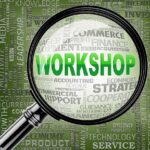
Exercise 1.1: Elephant vs Giraffe Perspective
https://www.youtube.com/watch?v=pHrjDMW-Dng
Course Manual 1 directly aligns with the course objective and the overall program title by emphasizing the critical skill of shifting viewpoints to gain a comprehensive understanding of an organization’s context. By exploring the concepts of perspective, perception, and cognitive biases, this manual equips participants with the ability to step outside their immediate roles and consider the broader implications of their decisions within the organizational ecosystem.
This approach is fundamental to strategic thinking as defined by Petitpas and Marcadet, where the ability to take a global, integrated view is essential for making informed, strategic decisions that align with the organization’s vision. Understanding how individual actions impact the wider business landscape, and being able to anticipate challenges and opportunities from multiple perspectives, is crucial for HR and people management professionals who must navigate complex internal and external ecosystems to support strategy implementation and drive value creation. This manual thus serves as a foundational step in developing the strategic thinking skills necessary for understanding and influencing the organizational landscape.

Course Manual 2: The Evolution of Strategy
The concept of strategy has a long and storied history, marked by significant transformations as it has been adapted and refined to meet the needs of various contexts. Originating in the ancient military arenas, strategy was initially focused on survival and the tactical maneuvers necessary to outwit and defeat enemies on the battlefield. The term itself is derived from the Greek word “strategos,” which refers to the art of the general, emphasizing leadership, planning, and the calculated use of resources to achieve victory. In its earliest forms, strategy involved meticulous planning, understanding the terrain, knowing one’s enemy, and deploying forces in a manner that maximized the chances of success while minimizing risks.
As civilization progressed and societies became more complex, the principles of strategy began to transcend the military domain and permeate other areas of human endeavor, particularly in governance and statecraft. Leaders recognized that the strategic principles used in warfare could also be applied to managing state affairs, influencing politics, and expanding empires. However, it was not until the 20th century that these ideas were systematically introduced into the business world, marking the beginning of a profound evolution in how organizations approached competition, growth, and sustainability.
In the business context, strategy evolved to address the challenges of operating within dynamic and complex markets. Unlike the static nature of military conflicts, where the objectives were often clear and the environment relatively contained, businesses had to navigate constantly changing market conditions, technological advancements, and shifting consumer preferences. This required a more flexible and adaptive approach to strategy, one that could not only guide day-to-day operations but also position organizations for long-term success.
The introduction of strategic thinking into business marked a departure from the ad-hoc, reactive approaches that had previously dominated the corporate world. It brought a level of rigor and foresight to the management of companies, encouraging leaders to think proactively about how to leverage their resources, exploit opportunities, and mitigate risks. This shift was catalyzed by thinkers like H. Igor Ansoff, who introduced frameworks such as the Ansoff Matrix to help businesses systematically analyze their environment and make informed decisions about growth and risk management.
Over time, business strategy has continued to evolve, incorporating new theories, tools, and approaches to address the increasing complexity of the global marketplace. The rise of technology, the expansion of global trade, and the growing importance of sustainability have all influenced how strategies are developed and implemented. Today, strategy is no longer just about beating the competition; it is about creating value, driving innovation, and ensuring the long-term viability of the organization.
This course manual delves into the evolution of strategy, tracing its journey from its military roots to its modern application in business. By understanding this historical progression, participants will gain insights into how strategic thinking has shaped the way organizations navigate the complexities of the contemporary business environment.
The Military Origins of Strategy
Strategy, in its earliest form, was a term used almost exclusively in military contexts. Derived from the Greek word “strategos,” meaning “generalship,” strategy was fundamentally about planning and executing maneuvers to outwit and defeat opponents in warfare. The key elements of military strategy included understanding the terrain, knowing the enemy, and deploying resources effectively to achieve victory. The focus was on survival, dominance, and achieving specific objectives through calculated actions.
These military strategies were characterized by meticulous planning, the allocation of resources, and the coordination of large-scale operations, often over extended periods. The principles of deception, surprise, and the strategic use of force were central to military success, and these ideas would later influence the development of business strategy.

The Introduction of Strategy to Business
The transition of strategy from the battlefield to the boardroom began in the mid-20th century. One of the pivotal figures in this transition was H. Igor Ansoff, often referred to as the “father of strategic management.” Ansoff introduced the concept of strategy to the business community, framing it as a tool for helping organizations adapt to their environments and achieve long-term success.
Ansoff’s most notable contribution was the development of the Ansoff Matrix, a strategic planning tool that helps organizations determine their growth strategies. The matrix focuses on four key strategies: market penetration, market development, product development, and diversification. Each of these strategies involves varying levels of risk and potential reward, guiding businesses in choosing the appropriate approach based on their current market position and future goals.
• Market Penetration: Involves increasing market share within existing markets using existing products.
Market penetration is a strategic approach focused on increasing a company’s market share within its existing markets by leveraging its current products or services. This strategy involves intensifying efforts to attract more customers or increasing the usage frequency among existing customers within the markets the company already operates. To achieve market penetration, companies often employ a variety of tactics, such as competitive pricing, marketing campaigns, promotions, and enhancing product features or services to make them more appealing to the target audience.
The goal is to outpace competitors and capture a larger portion of the market by encouraging consumers to choose their products over others. This strategy is typically considered low-risk compared to other growth strategies because it does not require entering new markets or developing new products. Instead, it focuses on making the most of the existing customer base and market conditions. However, it also requires a deep understanding of the market dynamics, customer preferences, and competitive landscape to ensure that the strategies employed effectively increase market share without eroding profit margins. Market penetration is often a company’s first step in a broader growth strategy, laying the groundwork for more ambitious moves such as market development or product diversification.
• Market Development: Entails entering new markets with existing products.
Market development is a growth strategy that involves expanding a company’s reach by entering new markets with its existing products or services. This approach is pursued when a company seeks to leverage the success of its current offerings by introducing them to new customer segments, geographic regions, or demographic groups that were previously untapped. The core idea behind market development is to identify new opportunities where the company’s products can meet the needs of a different audience, thus driving growth beyond the limitations of the existing market.
To successfully implement a market development strategy, companies must conduct thorough market research to understand the characteristics, needs, and preferences of the new target market. This may involve adapting marketing strategies to resonate with the local culture, adjusting distribution channels to reach customers effectively, or even making slight modifications to the product to better suit local tastes or regulations. Market development can also include expanding into international markets, where companies must navigate different legal, economic, and competitive landscapes.
While market development offers the potential for significant growth, it also carries a higher level of risk compared to strategies like market penetration. Entering a new market requires a deep understanding of the competitive environment and the challenges associated with operating in an unfamiliar territory. However, when executed effectively, market development can open up substantial new revenue streams and significantly enhance a company’s market position, helping it achieve sustainable long-term growth.
• Product Development: Focuses on creating new products for existing markets.
Product development is a strategic growth approach that centers on creating and introducing new products or significantly enhancing existing ones to serve the current markets where the company already operates. This strategy is pursued when a company aims to meet the evolving needs and preferences of its existing customer base, ensuring continued engagement and loyalty while also potentially attracting new customers within the same market. The process of product development involves innovating and expanding the company’s product portfolio, which can include launching entirely new products, improving product features, updating designs, or incorporating the latest technology to better meet market demands.
The rationale behind product development is to deepen the company’s market presence by offering customers more choices or better solutions, thereby increasing sales and market share. For instance, a technology company might develop a new version of a smartphone with enhanced features or introduce a complementary product, like a smartwatch, to capitalize on its existing market of tech-savvy consumers. By continually offering new and improved products, companies can differentiate themselves from competitors, maintain their relevance in the market, and prevent customer attrition.
While product development offers significant opportunities for growth, it also requires substantial investment in research and development (R&D), market research, and product testing. Companies must ensure that the new products align with customer expectations and add real value, as failure to do so can result in wasted resources and damage to the brand’s reputation. Nonetheless, when done successfully, product development can lead to increased customer satisfaction, stronger brand loyalty, and sustained revenue growth within existing markets.
• Diversification: Involves developing new products for new markets, carrying the highest level of risk.
Diversification is a high-risk growth strategy that involves a company developing new products and entering entirely new markets. Unlike other growth strategies, diversification requires a company to step outside its existing market and product boundaries, venturing into areas where it may have little or no prior experience. This approach is considered the most challenging and risky because it requires the company to succeed on two fronts: creating a product that resonates with a new market and simultaneously understanding and penetrating that new market with its distinct dynamics, customer needs, and competitive landscape.
There are two main types of diversification: related and unrelated. Related diversification occurs when a company expands into a market that is somewhat connected to its existing business, allowing it to leverage synergies, such as similar technologies or distribution channels. Unrelated diversification, on the other hand, involves moving into entirely new industries, which can be more difficult because it requires building new expertise and capabilities from the ground up.
The rewards of diversification can be substantial if executed successfully. It offers the potential for significant growth by tapping into new revenue streams, reducing reliance on existing markets, and spreading risk across different areas. For instance, a company that traditionally manufactures clothing might diversify by developing a line of fitness equipment, entering a new market that aligns with the growing trend of health and wellness. However, the risks are equally significant, as the company must manage the uncertainties of both product development and market entry, including understanding customer behavior, regulatory challenges, and competition in the new market. Despite these challenges, diversification can be a powerful strategy for companies looking to reinvent themselves, explore new opportunities, and achieve long-term growth by expanding their horizons beyond their established markets and product lines.
Ansoff’s framework provided a structured approach to strategic planning, helping businesses align their resources and capabilities with market opportunities. His work laid the foundation for the systematic study of strategy in the business context, introducing vocabulary and concepts that continue to shape strategic thinking today.
Ansoff’s framework, often referred to as the Ansoff Matrix, revolutionized the field of strategic planning by offering a clear and structured approach to aligning a company’s resources and capabilities with potential market opportunities. By categorizing growth strategies into four distinct types—market penetration, market development, product development, and diversification—Ansoff provided businesses with a practical tool to assess and choose the most appropriate strategy based on their current market position and future objectives. This framework not only guided companies in identifying the best paths for growth but also emphasized the importance of understanding the associated risks and required resources for each strategy. Ansoff’s work laid the groundwork for the systematic study of strategy within the business context, introducing key concepts and a strategic vocabulary that have since become integral to the field. His matrix remains a foundational tool in strategic management, widely used by businesses to make informed decisions about how to expand and adapt in a competitive marketplace. Through his contributions, Ansoff has left a lasting impact on how organizations approach growth, manage risk, and plan for the future, ensuring that strategic thinking remains a core element of business success.

The Evolution of Business Strategy
As businesses embraced the principles of strategic planning, they sought to develop and refine various approaches and tools to enhance the effectiveness and precision of their strategies. This period marked a significant shift in how organizations approached long-term planning, moving away from reactive, ad-hoc decision-making toward more deliberate, goal-oriented strategies that sought to align resources and capabilities with market opportunities. To support this shift, businesses began to implement a range of efficiency-driven approaches, such as SWOT analysis, the Balanced Scorecard, and Porter’s Five Forces, all designed to provide a structured way to evaluate internal and external factors, set objectives, and measure progress.
These tools helped organizations break down complex strategic goals into manageable components, making it easier to identify key priorities and allocate resources effectively. As a result, strategic planning became more systematic, with detailed analyses guiding decision-making and helping businesses navigate the increasingly competitive and globalized market landscape. However, the growing complexity of these tools and frameworks also led to new challenges. Over time, strategic planning began to evolve into a specialized field within organizations, often led by dedicated teams or consultants who were experts in the methodologies but perhaps less connected to the day-to-day realities of the business.
This increasing specialization created a potential disconnect between the strategic plans developed at the executive level and the operational execution carried out by different departments within the organization. Strategic plans, while meticulously crafted, often became lengthy and complex, making them difficult to translate into actionable steps for those responsible for implementation. The result was that employees on the front lines sometimes struggled to see how their daily tasks and responsibilities aligned with the broader strategic objectives, leading to gaps in execution.
The highly analytical nature of strategic planning sometimes led to an overemphasis on data and models, at the expense of flexibility and adaptability. As markets and technologies evolved more rapidly, some organizations found themselves locked into rigid strategic plans that were difficult to adjust in response to new challenges or opportunities. This rigidity could stifle innovation and limit the organization’s ability to respond effectively to unforeseen changes in the business environment.
While the evolution of business strategy brought about significant advancements in how organizations approached planning and growth, it also introduced new complexities and challenges. The specialization of strategy as a discipline sometimes created a divide between planning and execution, highlighting the need for a more integrated approach that ensures strategic plans are not only well-conceived but also effectively implemented throughout the organization. As businesses continue to evolve, the challenge remains to develop strategies that are both robust and flexible, capable of guiding long-term success while remaining adaptable to changing circumstances.

Challenges in Strategic Implementation
One of the major challenges that emerged was the meticulous and highly detailed nature of strategic analysis, which often led to the development of comprehensive but unwieldy strategic plans. These plans, while thorough and well-researched, frequently became overly complex, filled with dense data, projections, and detailed frameworks that were difficult to break down into clear, actionable steps. The creation of such plans was typically the domain of top executives or specialized strategy teams, who were highly skilled in the theoretical aspects of strategic planning but might not have been as closely connected to the operational realities of the organization.
This disconnection between strategic planning and day-to-day operations posed significant challenges. Because the strategic plans were developed at a high level, with limited input from those involved in the execution, there was often a gap in understanding and communication. Employees who were responsible for carrying out the strategies on the ground level were not always included in the planning process, leading to a lack of clarity about how their specific roles and tasks contributed to the overarching goals of the organization.
Without clear guidance on how to translate strategic objectives into concrete actions, employees struggled to align their daily work with the broader goals. This misalignment often resulted in inefficiencies, as teams might focus on tasks that did not directly contribute to the strategic priorities, or they might not understand the importance of certain initiatives, leading to a lack of engagement or motivation. Furthermore, the absence of a clear connection between strategy and execution could lead to missed opportunities, as employees might overlook innovative solutions or fail to respond swiftly to emerging challenges because they did not see how these actions fit within the strategic framework.
Additionally, the complexity of the strategic plans could create a sense of overwhelm among employees. Faced with lengthy documents filled with industry jargon, complex models, and abstract goals, employees might find it difficult to grasp the strategic vision and their role within it. This confusion could lead to a lack of ownership and accountability, as employees might defer decision-making to higher levels of management, rather than taking initiative to drive the strategy forward.
The top-down approach to strategic planning often failed to leverage the insights and expertise of those on the front lines, who had a more nuanced understanding of the operational challenges and opportunities. Without their input, strategic plans could lack practical relevance, making them difficult to implement effectively. This disconnect could also result in resistance to change, as employees might feel that the strategies imposed upon them did not reflect the realities of their work environment or address the specific challenges they faced.
The meticulous nature of strategic analysis, while valuable for creating thorough and informed plans, often led to challenges in strategic implementation. The lack of involvement from all levels of the organization, combined with the complexity of the plans, created gaps between the strategic vision and the day-to-day activities needed to achieve it. Overcoming these challenges requires a more integrated approach to strategic planning—one that involves input from across the organization, translates high-level goals into actionable steps, and ensures that everyone understands and is committed to the strategic objectives.

Emerging Trends in Strategic Thinking
During this period, several trends began to shape the evolution of business strategy:
• Diversification: Companies began to expand their product lines and enter new markets to spread risk and capitalize on growth opportunities. While diversification offered potential rewards, it also required businesses to manage more complex operations and mitigate the risks associated with venturing into unfamiliar territories.
• Globalization and Offshoring: As markets became increasingly interconnected, businesses sought to expand globally to tap into new customer bases and reduce costs through offshoring. This trend introduced new strategic challenges, including managing cross-cultural differences, navigating international regulations, and maintaining quality control across dispersed operations.
• Reengineering: The drive for efficiency led many organizations to reengineer their processes, focusing on streamlining operations, reducing waste, and improving productivity. While reengineering could lead to significant cost savings, it also required careful consideration of how changes would impact employees, customers, and overall organizational culture.
• Technology Integration: The rapid advancement of technology revolutionized the way businesses operated, introducing new tools for communication, data analysis, and process automation. Integrating technology into strategic planning became essential for staying competitive, but it also required businesses to continuously adapt to technological advancements and manage the risks associated with digital transformation.

Paradoxes in Strategic Decision-Making
As strategic thinking evolved, several paradoxes emerged in the realm of business strategy. These paradoxes highlight the inherent tensions and challenges that organizations face when developing and implementing strategies:
• The Crowded Market Paradox: The easiest routes to reach potential customers are often the most crowded, making it difficult for businesses to stand out. In saturated markets, the potential for differentiation is limited, and companies must find innovative ways to distinguish themselves. This paradox underscores the importance of creativity and innovation in strategy, as businesses must explore unconventional approaches to gain a competitive edge.
• The Challenge of New Opportunities: While new opportunities can open doors to growth, they often require businesses to adopt a different perspective and rethink their strategies. Creating or reinventing products, services, or business models involves significant risk and uncertainty. This paradox highlights the need for flexibility and adaptability in strategic thinking, as well as the willingness to embrace change and take calculated risks.
• The Control vs. Flexibility Paradox: In an effort to limit risks, organizations often implement strict controls and procedures. However, excessive control can stifle movement, creativity, and innovation, ultimately creating new risks. This paradox illustrates the delicate balance between maintaining control and allowing flexibility. Strategic leaders must ensure that their organizations are agile enough to respond to changing circumstances while still maintaining a clear direction.
• Clarity vs. Adaptability: While clarity about goals and rules is essential for guiding an organization, adaptability is equally important in facing changing circumstances and unforeseen opportunities. Organizations that are too rigid in their adherence to established plans may miss out on valuable opportunities or fail to respond effectively to emerging threats. This paradox emphasizes the need for strategies that are both clear and adaptable, allowing organizations to pivot when necessary while maintaining a focus on their overarching objectives.

Case Study: The Rise and Fall of Blockbuster
Blockbuster’s story is a classic example of how failing to adapt strategic thinking to changing market conditions can lead to an organization’s downfall. At its peak, Blockbuster was the leading video rental company in the United States, with thousands of stores across the country. However, the company’s rigid strategic approach and inability to recognize and adapt to emerging trends ultimately led to its decline.
Blockbuster was founded in 1985 and quickly became a dominant player in the video rental industry. The company’s strategy was built on a vast network of physical stores, where customers could rent movies and video games. Blockbuster’s success was largely due to its convenience, extensive inventory, and well-known brand.
In the late 1990s and early 2000s, the landscape of the video rental industry began to change. The rise of the internet and advancements in digital technology introduced new ways for consumers to access media. Companies like Netflix emerged, offering mail-order DVD rentals and, later, streaming services that allowed customers to watch movies and TV shows online.
Despite these changes, Blockbuster remained committed to its traditional business model. The company’s leadership believed that customers would continue to prefer the experience of visiting physical stores to browse and rent movies. This fixed perspective prevented Blockbuster from fully embracing the digital revolution and exploring new business models.
By the time Blockbuster realized the threat posed by digital competitors, it was too late. The company attempted to launch its own streaming service, but it was unable to compete with Netflix, which had already established itself as the leader in the market. Additionally, Blockbuster’s financial struggles, resulting from its high operating costs and declining revenue, made it difficult to invest in new technologies and strategic initiatives.
In 2010, Blockbuster filed for bankruptcy, and its remaining stores were eventually closed or sold. The company’s downfall serves as a cautionary tale about the risks of failing to adapt strategy to changing market conditions and the importance of being open to new perspectives and innovations.

Exercise 1.2: Paradoxes
Course Manual 2 is intrinsically linked to the overarching course objective as it delves into the historical and conceptual development of strategic thinking, a key component in navigating the complexities of modern organizations. By tracing the transformation of strategy from its military origins to its contemporary business applications, this manual provides participants with a deeper understanding of how strategic decisions are formulated and implemented within various organizational contexts. This foundational knowledge is crucial for HR and people management professionals, as they play a pivotal role in supporting and driving strategic initiatives that align with the broader goals of the organization.
The manual emphasizes the importance of recognizing the interconnected ecosystems—both internal and external—that influence strategic outcomes, aligning closely with Petitpas and Marcadet’s definition of strategic thinking. By encouraging participants to adopt a global, integrated perspective, and to consider both short-term and long-term implications, the manual prepares them to make informed decisions that contribute to the sustainability and success of their organizations.

Course Manual 3: What is Strategic Thinking?
As businesses face increasing complexity, uncertainty, and competition, the ability to think strategically has become essential for navigating these challenges with foresight and agility. Strategic thinking differs significantly from traditional approaches to strategy, which often emphasize meticulous planning and execution within a predetermined, rigid framework. While traditional strategy relies on detailed analysis and structured plans to guide organizational actions, strategic thinking is a more fluid and dynamic process that values flexibility, creativity, and continuous adaptation.
At its core, strategic thinking is about seeing the bigger picture—understanding not just the immediate goals and challenges but also the broader context in which an organization operates. This involves recognizing trends, anticipating changes in the market, and being prepared to pivot when circumstances shift unexpectedly. Strategic thinking requires leaders to move beyond the limitations of predefined plans, embracing a mindset that is open to new ideas, willing to question assumptions, and capable of envisioning multiple scenarios for the future. It is about making decisions that are informed not just by current conditions, but also by a deep understanding of potential long-term impacts and opportunities.
One of the key strengths of strategic thinking is its emphasis on adaptability. In a world where technological advancements, global events, and shifting consumer behaviors can dramatically alter the business landscape, rigid adherence to a fixed strategy can be a liability. Strategic thinking, on the other hand, equips organizations with the tools to remain agile, adjusting their strategies as needed to respond effectively to unforeseen challenges and opportunities. This adaptability is crucial for fostering resilience, enabling organizations to not only survive but thrive in the face of change.
Strategic thinking is inherently inclusive and collaborative. It encourages the involvement of diverse perspectives within the organization, recognizing that insights from different levels and functions can contribute to more robust and innovative strategies. By fostering a culture of strategic thinking, organizations can tap into the collective intelligence of their teams, ensuring that decisions are well-rounded and consider the full spectrum of internal and external factors.
This course manual delves into the concept of strategic thinking by exploring its evolution, identifying its key components, and examining the critical role it plays in building organizational resilience and success. The manual highlights how strategic thinking has evolved from traditional strategy, emphasizing the need for a more dynamic approach that integrates foresight, creativity, and adaptability. It also discusses the importance of aligning strategic thinking with organizational goals, fostering collaboration, and driving innovation to create value and impact.
Strategic thinking is not just a skill but a fundamental approach to leadership and decision-making in the modern organizational landscape. It provides leaders with the ability to navigate complexity with confidence, ensuring that their organizations are prepared for the challenges and opportunities that lie ahead. By embracing strategic thinking, organizations can develop the resilience and agility needed to achieve sustained success in an ever-changing world.
The Evolution of Strategic Thinking
The notion of strategic thinking has undergone significant evolution, reflecting the changing demands of the business world. Initially, strategy was primarily a planning exercise, aimed at achieving specific outputs through systematic work at all organizational levels. This approach relied heavily on analysis, detailed planning, and acting within the strict confines of established plans. Adaptation to changing circumstances was typically the responsibility of top leadership, who made decisions based on the information available at that time.
However, as the business environment became increasingly volatile and complex, the limitations of this traditional approach became apparent. Organizations began to experience disillusionment with rigid strategic models that were ill-equipped to support sustained success in a rapidly changing world. It became clear that a more agile and inclusive approach to strategy was needed—one that allowed for broader participation in decision-making and enabled organizations to respond swiftly to emerging challenges.
This shift gave rise to the concept of strategic thinking, which emphasizes the importance of flexibility, continuous learning, and the ability to see beyond immediate operational realities. Strategic thinking encourages leaders and teams to consider the broader context in which they operate, to anticipate potential disruptions, and to innovate in ways that drive long-term value creation. Unlike traditional strategy, which is often top-down, strategic thinking involves multiple levels of the organization, fostering a culture of adaptability and resilience.
Key Components of Strategic Thinking
Strategic thinking is built upon several interrelated components that together form a comprehensive approach to navigating the complexities of the modern business environment. These components include creating meaning and alignment, fostering collaboration, and driving innovation and impact.
1. Creating Meaning and Alignment:
At the heart of strategic thinking is the ability to create meaning and alignment within the organization. This involves taking a bird’s-eye view of the landscape, understanding the broader environment in which the organization operates, and defining a clear vision that guides decision-making. Perspective and vision are crucial in this process, as they allow leaders to look beyond the day-to-day operational realities and consider the long-term implications of their actions.
Creating alignment means ensuring that all levels of the organization are working towards the same goals, with a shared understanding of the organization’s purpose and strategic direction. This requires not only clear communication but also the development of strategic abilities within the organization, enabling teams to interpret and implement the vision in ways that are relevant to their specific roles.
The process of creating meaning and alignment also involves questioning assumptions, challenging the status quo, and being open to new perspectives. It requires leaders to cultivate a deep understanding of the internal and external factors that influence the organization’s success, from market trends and competitive dynamics to cultural shifts and technological advancements. By aligning the organization’s efforts with a well-defined vision, strategic thinking helps to ensure that all activities contribute to the long-term sustainability and success of the organization.
2. Collaboration and Ecosystems:
Collaboration is a fundamental aspect of strategic thinking, encompassing interactions and partnerships both within the organization and with external stakeholders. The concept of ecosystems plays a central role here, as organizations are increasingly recognized as part of a larger network of interconnected entities, including customers, suppliers, regulators, and communities.
Effective collaboration requires an understanding of these ecosystems and the ability to engage with them in ways that create mutual value. This involves building strong relationships with internal teams, fostering a culture of open communication, and ensuring that all parts of the organization are aligned with the strategic goals. Externally, it means working closely with partners, understanding the needs and expectations of customers, and navigating the complexities of regulatory environments.
Strategic thinking recognizes the importance of collaboration across multiple levels and sectors, encouraging leaders to leverage the collective intelligence and capabilities of their ecosystems. This approach not only enhances the organization’s ability to achieve its strategic objectives but also increases its resilience by building a network of support and resources that can be mobilized in times of change or crisis.
3. Innovation and Impact:
Innovation is at the core of strategic thinking, driving organizations to continually reinvent themselves and create value in new and impactful ways. In a rapidly changing business environment, the ability to innovate is crucial for staying ahead of the competition and meeting the evolving needs of customers.
Strategic thinking encourages organizations to dare to see and act differently, challenging conventional wisdom and exploring new ideas that can lead to breakthrough innovations. This requires a willingness to take risks, experiment with new approaches, and embrace failure as a learning opportunity. Innovation is not just about developing new products or services; it also involves rethinking business models, processes, and strategies to better align with the changing landscape.
The impact of innovation is measured not only in financial terms but also in how it contributes to the organization’s broader goals, including sustainability, social responsibility, and long-term growth. Strategic thinking integrates innovation with the organization’s vision and values, ensuring that new initiatives are aligned with the overall direction and contribute to meaningful, lasting change.

Model of Strategic Thinking
The strategic thinking model introduced in this course manual is grounded in three interconnected pillars: defining and communicating a unified vision, leveraging internal and external relationships, and fostering a culture of innovation that drives meaningful outcomes. These pillars together form a holistic framework that enables organizations to not only withstand the pressures of a dynamic environment but also to prosper by maintaining a proactive and forward-looking approach.
The first pillar emphasizes the importance of establishing a clear and cohesive vision that acts as a guiding star for the entire organization. This vision must be well-articulated and deeply understood at every level of the organization, ensuring that all efforts are focused on the same overarching goals. Strategic thinking involves looking beyond the immediate operational activities to understand the broader strategic landscape. It requires leaders to craft a vision that reflects the organization’s core values, long-term objectives, and the realities of the external environment. The success of this vision hinges on effective communication, where every member of the organization is not only aware of the vision but also understands how their role contributes to its realization. This collective alignment fosters a strong sense of purpose and direction, making it easier to coordinate actions and resources across the organization.
The second pillar of strategic thinking focuses on the strategic use of relationships and networks, both within and outside the organization. In today’s interconnected world, the ability to effectively manage and leverage relationships is crucial for achieving strategic objectives. This includes fostering a culture of collaboration where knowledge and resources are shared freely across teams and departments, breaking down silos that can hinder innovation and agility. Externally, it involves building strong partnerships with key stakeholders, such as customers, suppliers, industry peers, and regulatory bodies. Strategic thinking requires an awareness of how these relationships can be harnessed to create synergies, unlock new opportunities, and mitigate risks. By actively managing these networks, organizations can enhance their capacity to respond to external changes and position themselves advantageously within their broader ecosystem.
The third pillar centers on embedding innovation deeply within the organizational culture, where it becomes a natural and ongoing process rather than an isolated effort. Strategic thinking encourages a mindset that is open to new ideas, embraces change, and seeks out opportunities for improvement and differentiation. This involves creating an environment where experimentation is encouraged, and failure is viewed as a learning opportunity rather than a setback. To drive meaningful impact, innovation must be aligned with the organization’s strategic vision, ensuring that new ideas and initiatives contribute to the overall goals of the organization. It’s not just about creating new products or services, but also about rethinking processes, business models, and customer engagement strategies in ways that add value and drive the organization forward. By cultivating a culture of innovation, organizations can remain agile and resilient, continuously adapting to the evolving needs of their customers and the competitive landscape.
According to Petitpas and Marcadet, strategic thinking is about adopting a holistic, integrated perspective that balances immediate concerns with long-term aspirations. This approach involves synthesizing information from various sources, considering both the known and the unknown, and making decisions that reflect the complex interplay between the organization’s internal dynamics and external forces. Strategic thinking is not the sole responsibility of top leadership; it’s a capability that should be nurtured throughout the organization. When all employees are empowered to think strategically, the organization as a whole becomes more adept at navigating uncertainty, seizing opportunities, and driving sustained success.
This model of strategic thinking provides a robust framework for organizations aiming to thrive in today’s complex and fast-paced environment. By focusing on a unified vision, leveraging relationships, and fostering a culture of innovation, organizations can develop strategies that are not only effective in the short term but also sustainable in the long run. This integrated approach ensures that the organization is well-prepared to achieve its long-term goals while remaining adaptable to the challenges and opportunities that arise along the way.

Case Study: Apple’s Strategic Thinking and Innovation
Apple Inc. is a prime example of a company that has consistently applied strategic thinking to drive innovation and achieve long-term success. From its inception, Apple has focused on creating products that not only meet customer needs but also anticipate future trends and set new standards in the industry.
Apple’s strategic thinking has been evident in its approach to product development, marketing, and ecosystem creation. The company’s ability to create meaning and alignment is reflected in its clear vision of simplicity, elegance, and user experience. This vision has guided the development of iconic products like the iPhone, iPad, and MacBook, which have revolutionized the technology industry.
Apple has also excelled in fostering collaboration, both internally and externally. The company’s internal teams work closely together to ensure that every aspect of product design, from hardware to software to user interface, is perfectly integrated. Externally, Apple has built a powerful ecosystem of partners, developers, and suppliers who contribute to the company’s success. The App Store, for instance, has created a vibrant community of developers who innovate and create value within Apple’s ecosystem.
Innovation has been at the heart of Apple’s strategy, driving the company to continuously reinvent itself and lead the industry. Apple’s willingness to take risks and challenge conventional thinking has resulted in groundbreaking products that have reshaped entire markets. The impact of these innovations extends beyond financial success; Apple has set new standards for design, usability, and customer experience, influencing the direction of the technology industry as a whole.
Apple’s strategic thinking model, which integrates meaning and alignment, collaboration, and innovation, has allowed the company to maintain its position as a global leader in technology. By continuously applying these principles, Apple has not only achieved remarkable success but has also built a resilient organization capable of adapting to change and driving long-term growth.

Exercise 1.3: Strategic Thinking in Action
Course Manual 3 directly aligns with the course objective by providing a comprehensive framework for how strategic thinking can empower HR and people management to transcend their traditional roles and become key drivers of organizational success. By focusing on creating meaning and alignment, fostering collaboration, and driving innovation, this manual emphasizes the importance of understanding both internal and external ecosystems that influence strategic initiatives.
It links closely to the program title by underscoring the need for a global, integrated approach to decision-making, as defined by Petitpas and Marcadet. Strategic thinking is presented as a crucial skill that enables individuals at all levels of the organization to make informed decisions that align with the long-term vision, while also considering the immediate and broader contexts. This course manual reinforces the idea that strategic thinking is not confined to top leadership but is a critical competency for all employees, especially in a teleworking context, where understanding the needs of the organization and its stakeholders is vital for effective collaboration and successful strategy implementation.

Course Manual 4: What Do We Mean by Focusing on the Human Element?
The human element is an essential yet frequently underestimated aspect of achieving strategic success within an organization. While well-crafted strategic plans and clearly defined goals provide the necessary blueprint for organizational direction, the execution of these strategies is entirely dependent on the people within the organization. It is the employees—at all levels—who carry out the day-to-day tasks, make critical decisions, and engage with customers and stakeholders. Their ability to understand, commit to, and effectively implement the strategy is what ultimately determines whether the organization will achieve its objectives.
Organizations often invest significant resources in developing comprehensive strategic plans, focusing on market analysis, financial projections, and competitive positioning. However, these efforts can fall short if the human element is neglected. The success of any strategy hinges on how well an organization manages, engages, and empowers its workforce. This means not only having the right people in the right roles but also ensuring that they are motivated, aligned with the organization’s goals, and equipped with the necessary skills and resources to execute the strategy effectively.
The human element encompasses a wide range of factors, including leadership, organizational culture, employee engagement, communication, and change management. Leaders must recognize that these factors are not peripheral to strategy but central to its success. A strategy that fails to account for the human element risks being disconnected from the realities of the workforce, leading to poor implementation, resistance to change, and ultimately, failure to achieve desired outcomes.
This course manual delves into the critical role of the human element in strategic thinking. It emphasizes the importance of viewing employees as active participants in the strategic process rather than mere executors of predefined plans. By focusing on the human element, organizations can create a more inclusive, adaptable, and resilient approach to strategy that aligns the efforts of the entire workforce with the organization’s long-term objectives.
The manual will explore both successes and failures in strategic execution where the human element played a decisive role. Through these case studies, we will gain valuable insights into how organizations can better align their human resources with their strategic goals, ensuring that people are not just a component of strategy but a driving force behind its success. By understanding and integrating the human element into strategic thinking, organizations can unlock the full potential of their workforce, fostering a culture of engagement, innovation, and shared purpose that is essential for long-term success.
The Importance of the Human Element in Strategy
The human element is often the critical factor that determines whether an organization’s strategic objectives are met or missed. While strategies may be meticulously planned and based on sound analysis, their success ultimately hinges on the people responsible for bringing them to life. It is not uncommon for organizations to fall short of their strategic targets, sometimes even losing sight of these targets altogether until they are forced to evaluate their progress. In many cases, the underlying cause of such failures can be traced back to the neglect of the human element—an oversight that can derail even the most well-conceived strategies.
To understand the importance of the human element in strategy, it is essential to recognize that strategies are executed by people. This execution depends on how well the organization aligns its employees’ skills, motivations, and efforts with its strategic objectives. Simply put, no strategy can succeed without the active and effective participation of the workforce. This alignment is not a one-time task but an ongoing process that requires continuous attention and adjustment as the organization evolves and as external conditions change.
Focusing on the human element goes beyond the traditional scope of human resources management, which often concentrates on recruitment, training, and compliance. Instead, it involves a deeper understanding of how the attitudes, behaviors, and interactions of employees influence the successful implementation of strategic plans. This includes recognizing the diverse motivations that drive individual performance, the impact of organizational culture on behavior, and the importance of communication and collaboration in aligning individual actions with broader strategic goals.
One of the key aspects of integrating the human element into strategy is the development of strategic thinking skills among leaders and decision-makers. Strategic thinking enables leaders to take a holistic view of their goals within the context of the organization and its environment. It allows them to anticipate potential obstacles, recognize opportunities for improvement, and make informed decisions that align with the organization’s long-term vision. By cultivating these skills, leaders can better understand how their strategies will be received and implemented by the workforce, and they can make the necessary adjustments to ensure that efforts are focused where they are most needed.
This broader perspective also allows leaders to track what truly matters in the execution of their strategies. Rather than getting bogged down in metrics and short-term outcomes, they can maintain a focus on the underlying drivers of success, such as employee engagement, morale, and alignment with the organizational mission. By prioritizing the human element, leaders can create an environment where employees are not only aware of the strategic objectives but are also committed to achieving them. This commitment is fostered by ensuring that employees see the connection between their work and the organization’s goals, and by empowering them to contribute meaningfully to the strategy’s success.
Focus on the human element fosters a more engaged and motivated workforce, which is crucial for achieving long-term success. When employees feel valued, understood, and aligned with the organization’s goals, they are more likely to go above and beyond in their roles. This leads to higher levels of productivity, innovation, and collaboration, all of which are essential.
The human element is not just a component of strategy—it is the engine that drives its execution. By placing a strong emphasis on understanding and aligning the human aspects of the organization with its strategic goals, leaders can significantly enhance the likelihood of achieving their desired outcomes.

When the Human Element Leads to Failure
Despite being a critical factor in the success of any strategy, the human element is often overlooked or underestimated, leading to significant strategic failures. When organizations fail to consider the complexities of human behavior, culture, and interpersonal dynamics, even the most well-designed strategies can unravel. The human dimension encompasses everything from employee engagement and leadership effectiveness to communication and organizational culture. Neglecting these aspects can create misalignment, resistance, and breakdowns in execution that undermine strategic goals. The following examples provide a stark reminder of how disregarding the human element can derail initiatives that otherwise hold great promise. These cases highlight the dangers of not adequately addressing the human factors that are essential to successfully implementing and sustaining strategic initiatives.

Case Study: Kodak – A Failure to Adapt to Digital Technology
Kodak’s story is one of the most prominent examples of how a failure to adapt to technological advancements and changing market dynamics can lead to the downfall of a once-dominant industry leader. Founded in 1888, Kodak became synonymous with photography, pioneering innovations such as the handheld camera and the iconic “Kodak moment” that made photography accessible to the masses. For much of the 20th century, Kodak enjoyed a near-monopoly in the photographic film industry, with its products becoming a staple in households and businesses worldwide.
However, the seeds of Kodak’s eventual decline were sown in the late 20th century as the industry began to shift toward digital technology. Despite being a pioneer in the development of digital photography—Kodak invented the first digital camera in 1975—the company failed to capitalize on its innovation. Instead of embracing digital technology as the future of photography, Kodak’s leadership clung to its profitable film business, believing that consumers would continue to prefer traditional film for years to come.
This reluctance to fully embrace digital technology was driven by a combination of factors, including fear of cannibalizing its film business, a deeply entrenched corporate culture resistant to change, and a leadership mindset that underestimated the speed and impact of digital disruption. Kodak’s leadership believed that the high margins and established revenue streams from film would continue to sustain the company, even as digital photography began to gain traction among consumers.
As digital cameras became more popular and affordable, the demand for traditional film rapidly declined. Competitors such as Canon, Sony, and Nikon quickly seized the digital market, offering consumers innovative products that met their evolving needs. Meanwhile, Kodak remained focused on protecting its film business, investing in incremental improvements to film technology rather than shifting its resources toward digital. This strategic misalignment between the company’s capabilities and the market’s direction ultimately led to a significant loss of market share.
The human element played a critical role in Kodak’s failure to adapt. The company’s leadership, rooted in a traditional mindset, struggled to recognize the magnitude of the digital revolution. This mindset permeated the organization, leading to a culture that was resistant to change and slow to innovate. Employees who recognized the potential of digital technology often found their ideas dismissed or deprioritized in favor of preserving the status quo. As a result, Kodak failed to leverage the full potential of its workforce, missing out on opportunities to innovate and stay competitive.
By the time Kodak attempted to pivot to digital, it was too late. The company’s late entry into the digital market was marked by a series of missteps, including the introduction of digital products that were poorly received and a business model that failed to compete effectively with more agile and innovative competitors. Kodak’s inability to align its people, processes, and resources with the new strategic direction led to declining revenues, mounting losses, and ultimately, bankruptcy in 2012.
Kodak’s decline serves as a powerful lesson in the importance of aligning the human element with strategic goals. It highlights the dangers of clinging to outdated business models and failing to recognize and respond to changing customer needs and market trends. Kodak’s story underscores the need for organizations to foster a culture of adaptability, where leaders and employees alike are encouraged to embrace change, innovate, and align their efforts with the evolving landscape.

Case Study: HP and Compaq – A Cultural Mismatch
The merger between Hewlett-Packard (HP) and Compaq in 2002 is one of the most cited examples of how cultural differences can undermine the success of even the most well-intentioned strategic initiatives. At the time, the merger was the largest in the history of the technology sector, valued at approximately $25 billion. The rationale behind the merger was to create a combined entity that could compete more effectively with industry giants like IBM and Dell by leveraging economies of scale, expanding the product portfolio, and enhancing market share in the highly competitive PC and server markets.
From a business perspective, the merger seemed to make sense. Both companies brought complementary strengths to the table: HP had a strong presence in printers and high-end computing, while Compaq was a leading player in the personal computer market. The merger was expected to create synergies that would drive cost efficiencies, innovation, and growth. However, despite these promising prospects, the merger ultimately failed to deliver the expected benefits, and much of the blame can be attributed to the clash of corporate cultures.
HP, founded in 1939 by Bill Hewlett and Dave Packard, had developed a strong organizational culture known as “The HP Way.” This culture was characterized by a commitment to integrity, respect for employees, innovation, and a focus on long-term growth over short-term profits. The HP Way emphasized collaboration, open communication, and decentralized decision-making, which fostered a strong sense of loyalty and pride among employees. HP’s culture was deeply ingrained and had been a key factor in the company’s success for decades.
On the other hand, Compaq, founded in 1982, had a very different corporate culture. Compaq was known for its aggressive, sales-driven approach, with a focus on rapid growth and market share. The company had a more hierarchical structure, with top-down decision-making and a strong emphasis on performance metrics and results. This culture had served Compaq well during its early years as it quickly grew to become one of the leading PC manufacturers in the world.
When the two companies merged, these cultural differences quickly became apparent and created significant challenges in integrating the organizations. The HP Way, with its emphasis on collaboration and long-term thinking, often clashed with Compaq’s more aggressive, results-oriented culture. Employees from both companies found it difficult to work together, as their values, work styles, and expectations were often at odds. This cultural divide led to internal conflicts, low morale, and a lack of cohesion across the combined organization.
One of the most significant issues was the lack of effective communication and change management during the integration process. Leaders at HP and Compaq underestimated the importance of addressing cultural differences and failed to create a unified vision for the merged company. Employees were often left in the dark about the direction of the company and how the merger would impact their roles. This lack of clarity and communication led to confusion, uncertainty, and resistance to the changes being implemented.
Furthermore, the cultural clash extended to the management teams of the two companies. The leadership styles of HP’s Carly Fiorina and Compaq’s Michael Capellas were very different, and their inability to reconcile these differences exacerbated the challenges of the merger. Fiorina, who led the merger, faced criticism for her top-down approach and for not doing enough to preserve the values of The HP Way, which many employees felt were being eroded in favor of Compaq’s more aggressive style.
The HP-Compaq merger also faced external challenges, including skepticism from investors and customers. Many stakeholders questioned the strategic logic of the merger and were concerned about the potential for cultural and operational integration issues. These concerns were validated as the company struggled to achieve the synergies that had been promised. Instead of becoming a stronger competitor, HP saw declining profits, internal turmoil, and a loss of market confidence.
In the years following the merger, HP was forced to undergo several restructurings and leadership changes to try to recover from the fallout. The failure to effectively integrate the two cultures ultimately led to a loss of talent, a decline in employee engagement, and a weakening of HP’s competitive position in the market.
The HP-Compaq merger serves as a cautionary tale of how even the most strategically sound business moves can falter if the human element is not adequately considered. It highlights the critical importance of cultural alignment in mergers and acquisitions and underscores the need for effective communication, change management, and leadership in navigating such complex transitions. The case of HP and Compaq demonstrates that when corporate cultures clash without proper integration and respect for the values and practices of both entities, the resulting discord can have lasting negative impacts on organizational performance and success.

When the Human Element Leads to Innovation and Success
The human element, while sometimes a source of challenges and setbacks, is also an incredibly powerful catalyst for innovation and success. When organizations harness the creativity, adaptability, and diverse perspectives of their people, they unlock the potential for transformative breakthroughs that can redefine industries and drive strategic victories. Human ingenuity, when nurtured and channeled effectively, becomes the bedrock of innovation, allowing companies to turn obstacles into opportunities and to pioneer new paths in the marketplace. The following examples vividly illustrate how, by placing the human element at the core of their strategic efforts, organizations have achieved remarkable success, creating lasting value and reshaping their industries in the process. These stories highlight the importance of fostering an environment where creativity is encouraged, adaptability is embraced, and every individual is empowered to contribute to the organization’s strategic goals.

Case Study: Post-its – Innovation from a Mistake
The story of the Post-it note is a powerful testament to the idea that innovation can often arise from unexpected sources, including failures. It illustrates how a culture of creativity and openness to experimentation can turn setbacks into opportunities, ultimately leading to the development of products that have a lasting impact.
The journey of the Post-it note began in the laboratories of 3M, a company well-known for its emphasis on innovation and the development of new technologies. In 1968, Dr. Spencer Silver, a scientist at 3M, was attempting to create a super-strong adhesive for use in the aerospace industry. However, the result was far from what he intended: instead of a strong adhesive, Silver ended up with a glue that barely stuck to surfaces. This adhesive was characterized by its low tack, meaning it could stick lightly to surfaces without bonding permanently, and could be easily peeled off without leaving a residue.
At first glance, the adhesive seemed like a failure. It did not meet the criteria for the original project, and by conventional standards, it might have been discarded. However, Dr. Silver was intrigued by its unique properties and believed it could have potential uses, even if they were not immediately obvious. He began promoting his “low-tack” adhesive within 3M, presenting it as a “solution without a problem.” Despite his efforts, the company struggled to find a practical application for the adhesive, and it remained largely unused for several years.
The breakthrough came in 1974 when Art Fry, another 3M scientist, attended one of Dr. Silver’s seminars on the low-tack adhesive. Fry was also a member of his church choir and had a recurring problem: he would use small pieces of paper to mark the pages of his hymnal, but they would often fall out, causing frustration. Fry realized that Dr. Silver’s adhesive could be the perfect solution to his problem—an adhesive that could stick to the paper but be easily removed without damaging the pages.
Fry began experimenting by applying the adhesive to small pieces of paper, which he used as bookmarks that stayed in place without slipping out. He quickly realized the potential of this concept as a useful tool not only for marking pages but also for leaving notes that could be easily repositioned. Fry’s innovation was simple but effective: he had discovered a new product that could revolutionize the way people communicated in offices and homes.
Fry and Silver pitched the idea to 3M’s management, who were initially skeptical about the marketability of the product. However, 3M’s culture of innovation encouraged further experimentation and consumer testing. In 1977, the product, initially called “Press ‘n Peel,” was test-marketed in select cities with lukewarm results. Undeterred, the team refined the product and its marketing strategy, and in 1980, it was rebranded as “Post-it Notes” and launched nationwide.
The product quickly became a sensation. Consumers loved the convenience of a sticky note that could be easily repositioned without leaving residue, and Post-its soon became an indispensable tool in offices, schools, and homes around the world. The product’s success was not just due to its utility, but also to the fact that it solved a problem that people didn’t even know they had—until they experienced the solution.
The Post-it note’s journey from a failed adhesive to a global phenomenon underscores several important lessons about innovation. First, it highlights the importance of maintaining a creative and open mindset in the face of failure. Rather than viewing the adhesive as a dead-end, Dr. Silver and Art Fry saw potential where others might have seen only a mistake. Their willingness to think outside the box and explore unconventional uses for the adhesive was key to transforming it into a successful product.
Second, the story of Post-its exemplifies the value of fostering a culture within an organization that encourages experimentation and risk-taking. 3M’s commitment to innovation allowed its employees to pursue ideas that were not immediately profitable but had the potential to lead to breakthrough products. This culture of experimentation was instrumental in turning what could have been a forgotten failure into one of the most popular office products in history.
Finally, the Post-it note’s success demonstrates the importance of perseverance in innovation. The product was not an instant hit—it required refinement, rebranding, and persistent efforts to win over consumers. However, the eventual success of Post-its is a reminder that innovation is often a process of trial and error, where persistence and belief in an idea can ultimately lead to great rewards.
Today, Post-it notes are sold in over 150 countries and have expanded into a wide range of products, from traditional sticky notes to digital Post-its. The story of their creation continues to inspire innovators around the world, serving as a powerful example of how creativity, perseverance, and a positive perspective can turn even the most unlikely ideas into enduring success.

Case Study: Nintendo – Reinventing the Business
Nintendo’s evolution from a small playing card company into a global leader in the video game industry is a remarkable story of strategic reinvention, innovation, and human adaptability. Founded in 1889 in Kyoto, Japan, by Fusajiro Yamauchi, Nintendo began as a company producing handmade playing cards for a traditional Japanese game called Hanafuda. For several decades, the company thrived in this niche market, becoming well-known in Japan for its quality products.
However, as the 20th century progressed, the demand for playing cards began to wane, prompting Nintendo to explore new business opportunities. The company’s journey of reinvention was significantly influenced by Hiroshi Yamauchi, the grandson of the founder, who took over the company in 1949 after his grandfather suffered a stroke. Hiroshi Yamauchi proved to be a visionary leader with a bold approach to business, and under his leadership, Nintendo embarked on a series of experiments with various products and services in an effort to find new avenues for growth.
During the 1960s and 1970s, Nintendo diversified into several industries, some of which were far removed from its original playing card business. The company ventured into the food industry, producing instant rice, and even operated a chain of love hotels. Additionally, Nintendo explored the transportation industry by running a taxi service. These ventures were part of Yamauchi’s broader strategy to diversify Nintendo’s revenue streams and reduce its reliance on the declining playing card market. However, many of these experiments were short-lived and ultimately unsuccessful, leading the company to continue searching for its next big opportunity.
The turning point for Nintendo came when it began to focus on the burgeoning field of electronic entertainment. In the early 1970s, Nintendo entered the toy industry and started producing electronic toys and games. One of its early successes was the “Ultra Hand,” an extendable arm toy that sold over a million units. Building on this success, Nintendo developed other electronic toys, which laid the groundwork for its future in video gaming.
In 1977, Nintendo made a significant leap into the video game industry with the release of its first home video game console, the Color TV-Game. This product marked the beginning of Nintendo’s transformation into a video game company, but it was the subsequent introduction of the arcade game “Donkey Kong” in 1981 that truly catapulted the company into the global spotlight. Created by Shigeru Miyamoto, who would go on to become one of the most influential figures in the gaming industry, “Donkey Kong” was a massive success and introduced the world to one of Nintendo’s most iconic characters, Mario.
Building on the success of “Donkey Kong,” Nintendo launched the Nintendo Entertainment System (NES) in 1985, which revolutionized the home video game market. The NES was a groundbreaking product that helped revive the video game industry after the crash of 1983, and it became a cultural phenomenon, selling millions of units worldwide. The success of the NES established Nintendo as a dominant force in the video game industry and set the stage for the company’s continued innovation in gaming.
Nintendo’s journey of reinvention was not just a strategic pivot; it was also a cultural transformation. The company embraced change and innovation as core elements of its identity, fostering a corporate culture that encouraged creativity, risk-taking, and the continuous exploration of new ideas. This cultural shift was essential to Nintendo’s ability to adapt to changing market trends and consumer preferences, allowing it to stay ahead of competitors and remain relevant in a rapidly evolving industry.
One of the most significant examples of Nintendo’s innovative spirit is the creation of the Game Boy in 1989, the first handheld gaming console to achieve widespread success. The Game Boy was a game-changer in the industry, popularizing portable gaming and further solidifying Nintendo’s position as a leader in the gaming world. The console’s success was followed by the development of other groundbreaking products, such as the Super Nintendo Entertainment System (SNES), the Nintendo 64, and the Nintendo DS, each of which pushed the boundaries of gaming technology and design.
Nintendo’s ability to reinvent itself continued into the 21st century with the introduction of the Wii in 2006, a console that revolutionized gaming by making it more accessible and appealing to a broader audience. The Wii’s innovative motion-sensing controls attracted a diverse range of players, from casual gamers to families, and became one of the best-selling consoles of all time. This success demonstrated Nintendo’s ongoing commitment to innovation and its ability to anticipate and respond to shifts in consumer behavior.
In recent years, Nintendo has continued to innovate with products like the Nintendo Switch, a hybrid console that combines home and portable gaming. The Switch’s versatility and strong library of games have made it a major success, further cementing Nintendo’s legacy as a pioneer in the video game industry.
Nintendo’s journey from a playing card company to a global gaming powerhouse is a testament to the power of strategic thinking and human adaptability. The company’s willingness to explore new markets, embrace change, and foster a culture of innovation allowed it to navigate challenges and seize opportunities in ways that few other companies have. Nintendo’s story highlights the critical role of the human element in driving strategic success—demonstrating that with vision, leadership, and a commitment to innovation, even the most traditional businesses can reinvent themselves and thrive in the face of change.

Integrating the Human Element into Strategic Thinking
The cases of Kodak, HP-Compaq, Post-its, and Nintendo provide valuable lessons on the importance of integrating the human element into strategic thinking. Organizations that succeed in aligning their people with their strategic goals are more likely to achieve sustainable success, while those that neglect the human dimension risk failure.
To effectively integrate the human element into strategic thinking, organizations should consider the following approaches:
• Fostering a Culture of Adaptability and Innovation: Encourage a culture where employees are empowered to think creatively, take risks, and view challenges as opportunities. This can be achieved through leadership that models innovative thinking, provides resources for experimentation, and rewards initiative and problem-solving.
• Ensuring Cultural Alignment in Strategic Initiatives: When embarking on major strategic initiatives, such as mergers or acquisitions, it is crucial to assess and address cultural differences. This involves not only aligning values and behaviors but also ensuring that communication channels are open and that all stakeholders are engaged in the process.
• Developing Strategic Thinking Skills Across the Organization: Equip employees at all levels with the skills and knowledge needed to understand how their work contributes to the organization’s strategic objectives. This can be achieved through training programs, workshops, and ongoing communication that reinforces the importance of strategic alignment.
• Recognizing and Leveraging Human Potential: Organizations should recognize the unique strengths and perspectives of their employees and leverage these to drive innovation and achieve strategic goals. This includes creating opportunities for cross-functional collaboration, encouraging diverse viewpoints, and providing platforms for employees to share their ideas.

Exercise 1.4: Reflection and Evaluation
Course Manual 4 directly aligns with the course objective by emphasizing the critical role that HR and people management play in the successful implementation of strategic plans. It highlights that organizations do not operate in a vacuum, and the human element is fundamental to both supporting existing strategies and driving change and value creation.
This manual explores how understanding the human dynamics within an organization—such as culture, engagement, and innovation—enables leaders to better align their workforce with strategic goals, thus enhancing the organization’s ability to adapt and thrive within its internal and external ecosystems. This focus ties directly into the program title as it reinforces Petitpas and Marcadet’s definition of strategic thinking, which calls for a global, integrated approach that considers both the individual and the broader organizational context. By cultivating strategic thinking across all levels, and understanding the vital role of the human element, organizations can make informed decisions that align with their long-term vision, ensuring resilience and sustainability.
Course Manual 5: About Strategic Plans
Strategic plans are fundamental to any organization’s long-term success, acting as the backbone that supports the alignment of resources, efforts, and actions towards achieving defined objectives. At its core, a strategic plan serves as a blueprint that outlines the organization’s vision, mission, and the specific steps needed to realize its goals. These plans are not merely documents; they are comprehensive frameworks that guide decision-making processes, prioritize initiatives, and ensure that all members of the organization are working in concert towards common objectives.
Over time, the nature and scope of strategic planning have evolved significantly. Traditionally, strategic plans were developed with long-term horizons, often spanning 10 years or more. These plans were built on the assumption that the business environment would remain relatively stable, allowing organizations to follow a fixed path to achieve their goals. However, as the pace of change in the business world has accelerated—driven by technological advancements, globalization, and shifting consumer behaviors—organizations have had to adapt their approach to strategic planning. The result has been a shift towards shorter, more flexible planning periods, typically ranging from 18 to 24 months. This evolution reflects the need for organizations to remain agile and responsive in an increasingly volatile and complex environment.
The purpose of a strategic plan extends beyond simply setting goals. It serves as a critical tool for aligning the organization’s efforts across various functions and departments. By clearly articulating the organization’s vision and priorities, a strategic plan ensures that everyone—from top executives to frontline employees—understands what the organization is striving to achieve and how their individual roles contribute to these broader objectives. This alignment is essential for fostering a sense of purpose and direction within the organization, which in turn drives engagement, motivation, and performance.
Strategic plans play a crucial role in facilitating communication within the organization and with external stakeholders. A well-crafted strategic plan serves as a communication tool that conveys the organization’s priorities, strategies, and expectations to all relevant parties, including employees, investors, partners, and customers. This transparency helps build trust and ensures that all stakeholders are on the same page, which is vital for coordinated action and the successful implementation of the plan.
Strategic planning is also instrumental in helping organizations navigate the complexities of their external environment. By conducting thorough environmental scans and SWOT analyses (assessing strengths, weaknesses, opportunities, and threats), organizations can identify the key factors that will impact their success. This understanding allows them to anticipate challenges, capitalize on opportunities, and make informed decisions that are aligned with their long-term vision. In this way, strategic plans enable organizations to proactively shape their future rather than merely reacting to external forces.
In addition to guiding current actions, strategic plans are forward-looking, providing a roadmap for future growth and development. They outline the strategic initiatives that the organization will pursue, the resources that will be allocated to these initiatives, and the metrics that will be used to measure success. By setting clear objectives and timelines, strategic plans create a structured approach to achieving the organization’s goals, while also allowing for flexibility to adjust the course as needed.
As organizations increasingly operate in dynamic and competitive markets, the ability to adapt and revise strategic plans has become more critical than ever. A strategic plan is no longer a static document but a living framework that evolves in response to changing circumstances. This adaptability is crucial for maintaining organizational resilience and ensuring that the strategy remains relevant and effective over time.
In this course manual, we will delve into the various aspects of strategic planning, including its purpose, process, and content. We will explore how strategic plans are developed, approved, and implemented, and examine the different approaches organizations can take depending on their unique needs and contexts. By gaining a deeper understanding of the intricacies of strategic planning, organizations can enhance their ability to navigate the complexities of their environment and achieve sustainable success in the long term. Through this exploration, we aim to equip organizations with the tools and knowledge needed to create robust strategic plans that not only define their path forward but also empower them to thrive.
Purpose of Strategic Plans
A strategic plan is essentially a roadmap that outlines the desired outcomes of an organization’s efforts over a specified period. It provides a clear direction for the organization, identifying key objectives and the actions needed to achieve them. The purpose of a strategic plan can be distilled into several core functions:
1. Defining Strategic Objectives: The primary purpose of a strategic plan is to define the desired results of the organization’s efforts. These objectives typically focus on three to seven key areas or “axes,” which represent the critical components of the organization’s strategy. These areas might include market expansion, innovation, customer engagement, operational efficiency, and financial performance.
2. Guiding Organizational Actions: Strategic plans serve as a blueprint for action, outlining what needs to be done, by whom, and within what timeframe. By clearly delineating roles, responsibilities, and timelines, strategic plans ensure that all parts of the organization are aligned and working toward the same goals.
3. Facilitating Adaptation and Flexibility: As the business environment becomes increasingly dynamic, strategic plans have evolved to be more flexible. The traditional 10-year plans have been replaced by shorter-term plans that typically span 18 to 24 months. This allows organizations to remain agile, quickly adapting to changes in the market, technology, and other external factors.
4. Communication Tool: Strategic plans are also vital communication tools. They convey the organization’s priorities and direction to all stakeholders, including employees, board members, investors, and external partners. A well-articulated strategic plan helps ensure that everyone is on the same page and understands their role in achieving the organization’s objectives.
5. Monitoring and Evaluation: Strategic plans provide a framework for monitoring progress and evaluating outcomes. By setting clear objectives and success indicators, organizations can track their performance over time, making adjustments as necessary to stay on course.

The Process of Strategic Planning
The process of developing a strategic plan involves multiple stages and can vary depending on the organization’s structure, culture, and goals. Generally, the process includes the following steps:
1. Initial Assessment and Environmental Scanning: Before a strategic plan is developed, organizations must conduct a thorough assessment of their current situation. This involves gathering data on the internal and external environment, including market trends, competitive landscape, regulatory requirements, and internal capabilities. This stage often involves a SWOT analysis (Strengths, Weaknesses, Opportunities, Threats) to identify the factors that will influence the organization’s strategy.
The first step in developing a strategic plan is the initial assessment and environmental scanning, a critical process that sets the foundation for informed decision-making. This stage requires organizations to gather comprehensive data on both their internal and external environments. Internally, this includes evaluating the organization’s strengths, weaknesses, resources, and capabilities, as well as understanding the existing organizational culture and operational efficiency. Externally, the focus is on analyzing market trends, understanding the competitive landscape, identifying regulatory requirements, and recognizing broader economic, social, and technological forces that could impact the organization. A key tool used during this stage is the SWOT analysis, which helps identify the Strengths, Weaknesses, Opportunities, and Threats facing the organization.
By systematically assessing these factors, the organization can gain a clearer picture of the challenges and opportunities it faces, allowing leaders to craft a strategic plan that is not only ambitious but also realistic and aligned with the organization’s current circumstances and future potential. This thorough assessment ensures that the strategic plan is grounded in an accurate understanding of the environment in which the organization operates, providing a solid basis for subsequent decision-making and strategic actions.
2. Strategy Formulation: Once the assessment is complete, the next step is to formulate the strategy. This involves setting the organization’s long-term vision and defining specific objectives that align with this vision. During this stage, leaders consider various strategic options, weighing the potential risks and benefits of each before selecting the most viable path forward. This stage is critical in ensuring that the strategy is both ambitious and realistic, taking into account the organization’s resources and capabilities.
Following the initial assessment and environmental scanning, the next crucial step in the strategic planning process is strategy formulation. This stage involves setting the organization’s long-term vision, which serves as the guiding principle for all strategic decisions. Leaders then define specific objectives that align with this vision, ensuring that every goal supports the overall direction of the organization. During strategy formulation, various strategic options are carefully considered, with leaders evaluating the potential risks and benefits associated with each path.
This involves not only envisioning the desired future state of the organization but also assessing the feasibility of achieving these goals within the context of the organization’s resources, capabilities, and external environment. The objective is to select a strategy that is both ambitious, driving the organization towards growth and innovation, and realistic, acknowledging the constraints and challenges that may arise. By carefully balancing these factors, leaders can craft a strategic plan that is robust, actionable, and aligned with the organization’s long-term vision, setting the stage for successful implementation and sustainable success.
3. Strategic Plan Development: The strategic plan is then developed based on the chosen strategy. This document outlines the key areas of focus, specific objectives, action plans, success indicators, and timelines. It also identifies the resources required to implement the plan, including financial, human, and technological resources.
After the strategy has been formulated, the next step is the detailed development of the strategic plan. This involves creating a comprehensive document that translates the chosen strategy into a clear and actionable roadmap. The strategic plan outlines the key areas of focus, specifying the critical objectives that the organization aims to achieve. It breaks down these objectives into concrete action plans, detailing the specific steps that need to be taken, who is responsible for each task, and the timelines for completion.
Additionally, the plan includes success indicators—measurable benchmarks that will be used to track progress and assess whether the objectives are being met. A crucial part of this development stage is identifying the resources necessary for implementation. This includes not only financial resources but also the human and technological assets required to execute the plan effectively. By thoroughly outlining these elements, the strategic plan ensures that the organization is well-prepared to move from planning to action, with a clear understanding of what is needed to achieve its strategic goals and how success will be measured.
4. Approval and Alignment: Once the plan is drafted, it typically requires approval from the Board of Administrators or, in the absence of a formal board, the organization’s owner. In this stage, top leaders present the plan for approval, often engaging with key stakeholders to ensure that the plan reflects the organization’s collective knowledge and priorities. Depending on the organization, this process may involve different levels of input and review, ranging from top-down approval to more inclusive approaches that involve a broader range of employees and stakeholders.
After the strategic plan has been developed, the next crucial step is obtaining approval and ensuring alignment across the organization. This stage typically involves presenting the drafted plan to the Board of Administrators or, if a formal board does not exist, to the organization’s owner for final approval. This is a pivotal moment where top leaders must clearly articulate the strategic vision, objectives, and action plans, demonstrating how they align with the organization’s overall mission and long-term goals. To ensure the plan reflects the organization’s collective knowledge and priorities, leaders often engage with key stakeholders during this approval process. This may include gathering feedback, addressing concerns, and making necessary adjustments to the plan.
Depending on the organization’s culture and structure, the approval process can vary from a top-down approach, where decisions are made primarily by senior executives, to more inclusive methods that involve input and review from a broader range of employees and stakeholders. This inclusive approach can foster greater buy-in and alignment, ensuring that the strategic plan is not only approved at the top but also understood and supported throughout the organization. This alignment is critical for successful implementation, as it ensures that everyone is working towards the same goals with a shared understanding of the strategic priorities.
5. Implementation: After approval, the strategic plan is implemented across the organization. This stage involves translating the high-level objectives and action plans into specific tasks and projects, assigning responsibilities, and setting deadlines. Implementation requires effective communication and coordination among various departments and teams to ensure that everyone is working toward the same goals.
Once the strategic plan receives approval, the focus shifts to implementation, where the high-level objectives and action plans outlined in the plan are put into action across the organization. This stage involves breaking down the broad goals into specific tasks and projects, with clearly defined responsibilities assigned to individuals and teams. Deadlines are established to ensure that these tasks are completed in a timely manner, keeping the organization on track to meet its strategic objectives.
Implementation is a complex process that requires seamless communication and coordination among various departments and teams. It is essential that everyone understands their role in the larger strategy and how their efforts contribute to the organization’s goals. Effective implementation also involves monitoring progress, addressing challenges as they arise, and making adjustments to ensure that the strategy is executed efficiently and effectively. This stage is where the strategic plan moves from theory to practice, translating the organization’s vision into tangible results through coordinated and focused effort.
6. Monitoring and Adjustment: Strategic plans are living documents that require ongoing monitoring and adjustment. Organizations must regularly review their progress against the plan’s objectives, using key performance indicators (KPIs) to assess whether they are on track. If necessary, adjustments are made to the plan to respond to new challenges or opportunities. This iterative process ensures that the strategy remains relevant and effective over time.
Strategic plans are dynamic, living documents that necessitate continuous monitoring and adjustment to remain effective in the face of changing circumstances. Once implementation is underway, organizations must regularly assess their progress by reviewing their performance against the objectives laid out in the strategic plan. This involves the use of key performance indicators (KPIs), which provide measurable benchmarks to determine whether the organization is on track to achieve its goals. Regular monitoring allows leaders to identify any deviations from the plan or emerging challenges that may require a strategic shift.
When such issues arise, it is crucial to make timely adjustments to the plan—whether that involves reallocating resources, revising timelines, or even altering strategic priorities—to respond to new opportunities or threats in the environment. This iterative process of monitoring and adjustment ensures that the strategy remains aligned with the organization’s objectives and responsive to both internal and external changes, thereby maintaining its relevance and effectiveness over time.

Approaches to Strategic Planning
Different organizations may adopt different approaches to strategic planning, depending on their culture, industry, and specific needs. The three most common approaches include:
Top-Down Approach: In the top-down approach, strategic planning is primarily the responsibility of the organization’s top leaders. These executives, often in consultation with the board, develop the strategic plan based on their understanding of the organization’s environment, capabilities, and goals. The plan is then communicated to the rest of the organization for implementation. This approach assumes that the leaders have a comprehensive understanding of the organization’s needs and that their decisions will guide the organization to success.
Specialist-Driven Approach: Some organizations involve specialists or experts in the strategic planning process. In this approach, top leaders collaborate with specialists in areas such as market analysis, financial forecasting, and organizational development to develop a more informed and data-driven strategy. These specialists provide insights that help refine the strategy, ensuring that it is grounded in a deep understanding of the organization’s internal and external environment.
Inclusive Approach: The inclusive approach to strategic planning involves a broader range of participants, including employees at various levels of the organization and external stakeholders. This approach is more common in the non-profit sector, where the input of different stakeholders is essential to ensure that the strategy reflects the organization’s mission and values. In the for-profit sector, the use of an inclusive approach depends on the organization’s culture and the leadership’s commitment to fostering collaboration and engagement.

Contents of a Strategic Plan
A strategic plan typically covers several key topics, each of which is essential for guiding the organization’s efforts and measuring success. These topics include:
Market and Customers: An analysis of the organization’s target market, customer needs, and competitive landscape. This section outlines how the organization plans to differentiate itself and capture market share.
External Constraints: Identification of regulatory, economic, and technological factors that could impact the organization’s strategy. This includes an assessment of potential risks and opportunities in the external environment.
Stakeholders: An overview of the organization’s key stakeholders, including employees, customers, suppliers, investors, and community partners. The plan should address how the organization will engage with these stakeholders to achieve its strategic objectives.
Organizational Priorities: A clear articulation of the organization’s top priorities for the planning period. These priorities should align with the organization’s mission and vision and be supported by specific objectives and action plans.
Objectives, Success Indicators, and Deadlines: For each priority, the plan should specify measurable objectives, success indicators, and deadlines. This ensures that progress can be tracked and evaluated over time.
Functional Support: Each function within the organization (e.g., marketing, operations, finance) should outline how it will contribute to the achievement of the corporate strategic objectives. This section ensures that all parts of the organization are aligned and working toward common goals.

Case Study: Google’s Strategic Planning Process
Google, one of the world’s most successful and innovative companies, provides a compelling example of how strategic planning can be effectively implemented to drive growth and maintain a competitive edge. Google’s approach to strategic planning is characterized by its focus on flexibility, innovation, and inclusivity.
Google’s mission is to “organize the world’s information and make it universally accessible and useful.” To achieve this mission, Google has developed a strategic planning process that allows it to remain agile and responsive to changes in the technology industry while staying true to its core values.
Google’s strategic planning process begins with a thorough assessment of the technology landscape, including trends in search, advertising, and emerging technologies such as artificial intelligence and machine learning. Google’s leadership team, including its co-founders and senior executives, plays a central role in formulating the company’s strategy. However, Google’s approach is also highly inclusive, involving input from employees at various levels of the organization.
Google’s strategic plan is characterized by its focus on key areas of innovation, such as search algorithms, advertising platforms, and new product development. The plan includes specific objectives, such as improving search accuracy, increasing ad revenue, and launching new products, all of which are aligned with Google’s mission.
Google’s strategic plan is implemented through a series of cross-functional initiatives, with teams across the organization working together to achieve the plan’s objectives. Google places a strong emphasis on data-driven decision-making, using metrics and analytics to monitor progress and make adjustments as needed.
One of the key features of Google’s strategic planning process is its commitment to flexibility. Google’s leadership recognizes that the technology industry is constantly evolving, and the company’s strategic plan is designed to be adaptable. This flexibility allows Google to pivot quickly in response to new opportunities or challenges, ensuring that the company remains at the forefront of innovation.
Google’s strategic planning process has been instrumental in driving the company’s growth and maintaining its position as a leader in the technology industry. The company’s ability to balance long-term vision with short-term agility has enabled it to successfully navigate the challenges of a rapidly changing environment.

Exercise 1.5: Strategic Planning Reflection and Analysis
Course Manual 5 directly aligns with the course objective by providing a comprehensive framework for developing and implementing strategic plans that effectively guide an organization’s actions and objectives. It emphasizes the importance of aligning strategic planning with the broader business environment, considering both internal and external ecosystems that influence the success of strategic initiatives. This manual illustrates how strategic planning is not just a top-down process but involves understanding the organization’s unique circumstances, market dynamics, and the critical value drivers that ensure sustainability and growth.
In the context of the program title, this course manual highlights the importance of integrating human elements into the strategic planning process. It underscores Petitpas and Marcadet’s definition of strategic thinking, emphasizing the need for a global, integrated perspective that balances short-term goals with long-term vision. By focusing on inclusive and flexible strategic planning approaches, the manual encourages all levels of the organization to contribute to strategic thinking, fostering a culture where every individual is empowered to make decisions that align with the organization’s vision and adapt to changing conditions. This approach is crucial in today’s interconnected and teleworking environments, where understanding the needs of internal and external customers and collaborating across hierarchical levels are key to successful strategy implementation.

Course Manual 6: Who is My Organization?
Understanding an organization’s identity is fundamental to its ability to align its actions, decisions, and overall culture with its strategic goals. Organizational identity is not just a superficial label or branding effort; it is the essence of what the organization stands for and how it perceives itself within its environment. This identity is built upon three fundamental pillars: mission, vision, and values. Together, these elements form the foundation upon which the organization’s strategies, operations, and relationships are constructed.
The mission of an organization articulates its core purpose—why it exists and what it seeks to contribute to society, its industry, and its stakeholders. It provides clarity and focus, ensuring that all decisions and actions are rooted in a common purpose. A well-defined mission serves as a guiding star, helping the organization navigate through challenges and opportunities with a clear sense of direction.
The vision, on the other hand, is forward-looking. It describes what the organization aspires to become in the future and what it aims to achieve over a defined period, often aligning with the strategic planning horizon. The vision inspires and motivates, setting a long-term goal that challenges the organization to strive for excellence and innovation. It acts as a beacon, guiding the organization’s growth and transformation as it adapts to changes in the market, technology, and societal expectations.
Values are the principles and beliefs that underpin the organization’s culture. They define the ethical standards and behaviors that are expected within the organization and influence how decisions are made, how people work together, and how the organization interacts with its stakeholders. Values are the moral compass that guides the organization’s actions, ensuring that it operates with integrity, respect, and social responsibility. They are critical for building trust and credibility, both within the organization and with external partners and customers.
Together, these three elements—mission, vision, and values—create a cohesive and integrated framework that defines who the organization is at its core. This framework is not static; it evolves as the organization grows and as the external environment changes. However, the underlying principles remain consistent, providing stability and continuity that help the organization maintain its identity over time.
In this course manual, we delve into the significance of these components, exploring how they influence the organization’s strategic direction and long-term success. We examine how a strong, well-articulated organizational identity can drive alignment across all levels of the organization, foster a positive and cohesive culture, and enhance the organization’s ability to achieve its strategic objectives. By gaining a deeper understanding of the mission, vision, and values, organizations can ensure that their identity is not only clear and consistent but also aligned with their goals and adaptable to future challenges.
The Mission: Defining Purpose
The mission of an organization serves as its foundational purpose—the core reason for its existence. It is the bedrock upon which all other elements of the organization are built, defining what the organization was created to do, the impact it seeks to have on the world, and the unique value it provides to its stakeholders. A mission statement is a succinct, yet powerful, declaration that encapsulates these ideas, serving as a guiding principle for every decision, action, and strategy within the organization.
At its essence, the mission answers fundamental questions: Why does this organization exist? What needs or problems is it addressing? What role does it play in the broader society or industry? By providing clear answers to these questions, the mission statement helps to align the organization’s efforts and focus its resources on activities that are truly meaningful and aligned with its core purpose.
The mission also serves as a critical communication tool. It informs employees about the overarching goals they are working towards and helps them understand how their individual roles contribute to the organization’s larger objectives. For external stakeholders, including customers, partners, investors, and the broader community, the mission statement conveys the organization’s identity and aspirations, building trust and establishing a sense of shared purpose.
A well-crafted mission statement is more than just a description of what the organization does; it reflects its commitment to certain principles and values. It provides clarity and focus, ensuring that the organization’s activities are coherent and aligned with its long-term goals. For instance, an organization with a mission centered on innovation will prioritize creativity, research, and development in its operations. Conversely, an organization with a mission focused on community service will direct its efforts toward initiatives that benefit society.
The mission plays a crucial role in strategic planning and decision-making. It acts as a touchstone that leaders and employees can return to when making important decisions, ensuring that those decisions are in line with the organization’s core purpose. In times of change or uncertainty, the mission provides stability, reminding the organization of its fundamental goals and helping to navigate challenges while staying true to its core values.
The mission of an organization is its defining purpose—the cornerstone of its identity and operations. It is a clear and concise statement that communicates what the organization stands for, what it seeks to achieve, and why it matters. By articulating this foundational purpose, the mission guides the organization’s strategic direction, shapes its culture, and aligns its actions with its long-term goals, ensuring that every effort contributes to the realization of its broader purpose.

The Role of the Mission
A well-defined mission plays a pivotal role in the life of an organization, acting as a guiding star that ensures every decision made and action taken is aligned with the organization’s core purpose. The mission is far more than a statement of intent; it is a fundamental tool that shapes every aspect of the organization’s strategy, culture, and operations. It provides a clear, overarching framework that influences how the organization sets its goals, prioritizes its initiatives, and allocates its resources.
By offering a clear sense of direction, the mission serves as a unifying force within the organization. It connects employees, leaders, and stakeholders to a shared purpose, fostering a sense of collective identity and commitment. This alignment is crucial for creating coherence and consistency across the organization, ensuring that all efforts are directed towards achieving the same overarching goals. Whether in times of growth, stability, or crisis, the mission provides a constant point of reference that keeps the organization grounded in its core values and focused on its long-term objectives.
The mission also plays a critical role in shaping organizational culture. It sets the tone for the organization’s ethos, influencing how people within the organization behave, interact, and make decisions. A mission that emphasizes innovation, for example, will encourage a culture of creativity and risk-taking, while a mission focused on customer service will prioritize empathy, responsiveness, and excellence in interactions with clients. The mission, therefore, not only guides what the organization aims to achieve but also how it goes about achieving it.
The mission has a significant impact on the organization’s strategic planning process. It acts as the foundation upon which strategic objectives are built, ensuring that the organization’s plans are rooted in its core purpose. When setting strategic goals, leaders look to the mission to determine which initiatives will best advance the organization’s purpose and which should be deprioritized or avoided altogether. This alignment between mission and strategy is essential for maintaining focus and coherence in the organization’s efforts, preventing resources from being spread too thinly across unrelated or conflicting initiatives.
In addition to guiding internal decision-making, the mission also plays a vital role in external communication. It signals to customers, partners, investors, and the broader community what the organization stands for and what it seeks to achieve. This transparency helps to build trust and credibility, as stakeholders can clearly see the organization’s commitments and values reflected in its actions. A strong, well-communicated mission can also differentiate the organization from its competitors, highlighting its unique value proposition and attracting stakeholders who share its values and objectives.
The mission is a tool that shapes every facet of an organization’s existence. It aligns strategy, culture, and operations with a clear, shared purpose, ensuring that all efforts are coordinated and focused on achieving the organization’s core objectives.
Examples of Mission Statements
Mission statements vary widely depending on the organization’s focus and objectives. For instance:
• IKEA: “To offer a wide range of well-designed, functional home furnishing products at prices so low that as many people as possible will be able to afford them.”
IKEA’s mission reflects its commitment to providing affordable, quality products, emphasizing inclusivity and accessibility.
• Google: “Google’s mission is to organize the world’s information and make it universally accessible and useful.”
Google’s mission highlights its focus on innovation and accessibility, striving to make vast amounts of information available to everyone.
The Impact of the Mission on Organizational Behavior
The mission influences every aspect of an organization’s behavior. It guides decision-making at all levels, from strategic planning to daily operations. A strong mission statement ensures that all employees understand the organization’s purpose and are motivated to contribute to its achievement. When decisions and actions are consistently aligned with the mission, the organization is more likely to achieve its strategic goals and maintain a cohesive, purpose-driven culture.

The Vision: Aspiring for the Future
While the mission defines an organization’s present purpose and the reason for its existence, the vision reaches forward, outlining what the organization aspires to become in the future. The vision is a powerful, forward-looking statement that articulates the organization’s long-term aspirations and the impact it seeks to make on the world. It is not confined to the present or immediate future but instead paints a picture of the organization’s desired state in the years to come, often aligned with the strategic planning horizon.
A vision statement serves as a beacon, guiding the organization’s growth and evolution by providing a clear, compelling picture of its future. This vision encapsulates the organization’s hopes and dreams, setting ambitious goals that inspire and motivate everyone within the organization to strive for excellence. By outlining what the organization wants to achieve and the changes it seeks to bring about, the vision statement helps to align the organization’s efforts and resources with its long-term objectives.
The role of the vision is multifaceted. Firstly, it provides a long-term perspective that helps the organization navigate through short-term challenges and decisions. While day-to-day operations and immediate goals are important, the vision ensures that these activities are always directed toward the organization’s broader, long-term ambitions. This prevents the organization from becoming too focused on short-term gains at the expense of its future potential.
Secondly, the vision acts as a source of inspiration and motivation for employees and stakeholders. It serves as a rallying cry that unites people around a common future, encouraging them to contribute their best efforts towards achieving this shared goal. When employees understand and believe in the vision, they are more likely to be engaged, committed, and innovative, as they see their work as part of a larger purpose. This sense of collective effort and shared destiny is crucial for building a strong organizational culture that is resilient and adaptable in the face of change.
The vision statement provides a benchmark for measuring progress and success. By setting clear and ambitious goals for the future, the organization can track its progress over time and evaluate whether it is on the right path to achieving its desired outcomes. This allows for continuous improvement and adjustment, ensuring that the organization remains aligned with its long-term objectives and can respond to new opportunities or challenges as they arise.
The vision also plays a critical role in shaping the organization’s strategic decisions and priorities. It influences how resources are allocated, which projects and initiatives are pursued, and how the organization positions itself in the market. A strong vision can help the organization differentiate itself from competitors by clearly articulating its unique value proposition and the impact it seeks to make in its industry or community. This can attract customers, partners, and investors who share the organization’s vision and are motivated to support its journey toward realizing its future state.
The vision is a vital component of an organization’s identity, providing a long-term perspective that outlines what the organization aspires to become. It serves as a guide for strategic decision-making, a source of inspiration and motivation, and a benchmark for measuring progress. By clearly articulating its desired future state, the vision helps the organization navigate the complexities of growth and change, ensuring that it remains focused, cohesive, and forward-looking as it pursues its long-term goals.

The Role of the Vision
The vision of an organization plays a critical role in shaping its trajectory and influencing its success. It acts as a powerful source of inspiration and motivation, driving the organization to strive for excellence and reach beyond the ordinary. The vision paints a vivid picture of what success looks like, providing a clear and compelling image of the organization’s future state. This forward-looking statement not only defines what the organization aspires to achieve but also communicates the broader impact it seeks to have on its industry, community, and stakeholders.
By articulating a vision that is both ambitious and attainable, leaders can inspire their teams to pursue challenging goals with enthusiasm and dedication. A strong vision taps into the intrinsic motivation of employees, aligning their personal and professional aspirations with the organization’s broader objectives. When employees see how their individual efforts contribute to the realization of the vision, they are more likely to be engaged, committed, and innovative in their work. This collective drive towards a shared future fosters a sense of unity and purpose, which is essential for building a cohesive and resilient organizational culture.
The vision also serves as a strategic guidepost, helping the organization navigate its journey toward its long-term goals. As the organization progresses, the vision provides a benchmark for evaluating success and making necessary adjustments along the way. By regularly assessing how well the organization’s actions align with its vision, leaders can ensure that the organization remains on course, even in the face of challenges or changes in the external environment. This continuous alignment between day-to-day activities and long-term aspirations is crucial for maintaining momentum and achieving sustainable growth.
The vision plays a crucial role in external communication, positioning the organization within its broader ecosystem. A well-crafted vision statement can differentiate the organization from its competitors, attract like-minded partners and investors, and build trust with customers who share the organization’s values and goals. It signals to the world what the organization stands for and what it is committed to achieving, thereby enhancing its reputation and influence.
By serving as both a strategic compass and a benchmark for progress, the vision ensures that the organization remains focused, aligned, and driven to achieve its highest potential.
Examples of Vision Statements
Vision statements are often bold and forward-looking, capturing the organization’s aspirations:
• Tesla: “To create the most compelling car company of the 21st century by driving the world’s transition to electric vehicles.”
Tesla’s vision emphasizes its role as a leader in innovation and sustainability, aiming to revolutionize the automotive industry.
• Amazon: “To be Earth’s most customer-centric company; to build a place where people can come to find and discover anything they might want to buy online.”
Amazon’s vision reflects its commitment to customer satisfaction and its ambition to be a comprehensive global marketplace.
Vision as a Strategic Compass
The vision acts as a strategic compass, guiding the organization’s decisions and actions as it moves towards its desired future state. It helps to prioritize initiatives, allocate resources, and drive innovation. A well-crafted vision statement challenges the organization to think creatively and strive for continuous improvement, ensuring that it remains competitive and relevant in a rapidly changing environment.

Values: The Core of Organizational Culture
Values are the basis upon which an organization’s culture is built, representing the fundamental principles and beliefs that guide its operations and interactions with stakeholders. These values are not just abstract concepts; they are the lived convictions that permeate every aspect of the organization, from decision-making processes to daily interactions between employees, customers, and partners. Values define what the organization stands for and serve as the moral compass that influences behavior and establishes standards for what is considered acceptable or desirable within the organization.
At the heart of an organization’s identity, values play a critical role in shaping its culture—the collective behaviors, attitudes, and norms that characterize how work is done. They influence everything from how decisions are made to how conflicts are resolved, how employees collaborate, and how the organization responds to challenges and opportunities. When values are deeply embedded and consistently reinforced, they create a strong, cohesive culture that supports the organization’s mission and vision, ensuring that all actions are aligned with its core principles.
Values are also crucial in defining “how things are done here.” They set the tone for the organizational environment, guiding how employees interact with one another and with external stakeholders. For example, an organization that values innovation will encourage creativity, risk-taking, and continuous learning, creating a culture where new ideas are welcomed and explored. On the other hand, an organization that values customer service will prioritize empathy, responsiveness, and excellence in every interaction with clients, fostering a culture of attentiveness and care.
Values serve as a key driver of organizational consistency and integrity. When values are clearly defined and shared across the organization, they provide a common framework that helps individuals navigate complex decisions and situations. This consistency ensures that, regardless of the challenges the organization faces, it remains true to its core principles and can maintain trust and credibility with stakeholders. Values also play a crucial role in fostering employee engagement and loyalty, as they give employees a sense of purpose and belonging, making them feel connected to something larger than themselves.
The influence of values extends beyond internal operations to the organization’s reputation and relationships with external stakeholders. Values communicate to the outside world what the organization stands for, influencing how it is perceived by customers, partners, investors, and the broader community. Organizations with strong, positive values are often seen as more trustworthy and reliable, which can enhance their competitive advantage and attract stakeholders who share similar beliefs and aspirations.

The Role of Values in Organizational Identity
Values are the cornerstone of an organization’s identity, serving as the ethical standards and behavioral norms that all members are expected to uphold. They are not just a set of abstract principles; values are the living, breathing essence of an organization’s culture, shaping how it operates on a daily basis. From the way employees collaborate and communicate to the methods they use to make decisions and solve problems, values are the guiding force that ensures consistency and alignment across the organization.
At the heart of organizational culture, values provide the foundation for how the organization conducts itself both internally and externally. They define what is considered right and wrong within the organization, setting the moral and ethical boundaries that guide behavior. For instance, a value of integrity means that employees are expected to act honestly and transparently, even when facing difficult situations. A value of respect ensures that all interactions within the organization, regardless of hierarchy, are conducted with consideration and fairness.
Values also play a critical role in decision-making processes. In situations where there may be multiple possible courses of action, values provide a framework for choosing the path that best aligns with the organization’s identity and goals. For example, an organization that values innovation might prioritize bold, creative solutions even when they carry higher risks, while an organization that values stability might opt for more cautious, measured approaches. By ensuring that decisions are made in accordance with the organization’s values, leaders can maintain consistency and integrity across all levels of the organization.
Values are essential in fostering collaboration and communication within the organization. They set expectations for how employees should work together, creating an environment where teamwork, mutual respect, and open dialogue are encouraged and valued. When employees share a common set of values, they are more likely to trust each other, communicate effectively, and work towards shared goals. This sense of unity and purpose is crucial for building a strong, cohesive culture that drives collective success.
The role of values extends beyond internal interactions to influence how the organization is perceived by external stakeholders. When values are clearly defined and consistently reinforced, they build the organization’s reputation and credibility in the eyes of customers, partners, investors, and the broader community. Stakeholders are more likely to engage with an organization whose values they align with, leading to stronger relationships and increased loyalty. This alignment between internal culture and external perception is key to building a sustainable, long-lasting organizational identity.
Furthermore, values are instrumental in supporting the organization’s mission and vision. While the mission defines the organization’s purpose and the vision outlines its future aspirations, values provide the ethical and cultural framework that supports these goals. When values are consistently upheld, they create a stable and supportive environment that enables the organization to pursue its mission and achieve its vision. For instance, a company with a mission focused on environmental sustainability must have values that reflect this commitment, such as responsibility, innovation, and stewardship, to effectively pursue its goals.
Values are integral to the formation and maintenance of an organization’s identity. They define the ethical standards and behavioral norms that guide every aspect of the organization’s operations, from decision-making to communication and problem-solving. By embedding these values into the fabric of the organization, leaders can create a strong, cohesive culture that not only supports the organization’s mission and vision but also enhances its reputation and relationships with external stakeholders. When values are clearly defined and consistently reinforced, they serve as the backbone of a resilient, purpose-driven organization.
Examples of Value Statements
Value statements articulate the core principles that an organization stands for. Examples include:
• Adidas: “At Adidas, we are rebellious optimists driven by action, with a desire to shape a better future together.”
Adidas emphasizes a culture of optimism, action, and collective effort to drive positive change.
• Canva: “Make complex things simple.”
Canva’s values highlight simplicity, ambition, social responsibility, and empowerment, reflecting its commitment to making a positive impact.
Values as a Cultural Foundation
Values are more than just statements—they are the foundation of the organization’s culture. When values are truly lived and integrated into daily operations, they foster a positive, ethical, and inclusive work environment. This, in turn, enhances employee engagement, builds trust with stakeholders, and strengthens the organization’s reputation. However, if values are not upheld or are perceived as mere lip service, they can lead to cynicism, disengagement, and a disconnect between the organization’s stated principles and its actual behavior.

The Interconnection of Mission, Vision, and Values
The mission, vision, and values of an organization are not isolated elements; rather, they are deeply interconnected and mutually reinforcing components that together form the bedrock of the organization’s identity. This triad is essential in shaping the strategic direction, culture, and operations of the organization, ensuring that all actions and decisions are aligned with its core purpose and long-term aspirations.
Mission serves as the foundation, defining the organization’s fundamental purpose—why it exists, what it seeks to achieve, and the impact it intends to have on its stakeholders and society at large. It is the starting point from which all strategic planning and decision-making flow, providing a clear and enduring statement of what the organization stands for.
Vision builds upon this foundation, articulating the organization’s aspirations for the future. It provides a forward-looking perspective, setting ambitious goals and outlining what the organization hopes to become. The vision is the organization’s dream, a vivid picture of success that motivates and inspires everyone within the organization to strive toward a common future. It serves as a strategic guidepost, ensuring that short-term actions are consistent with long-term objectives.
Values complement the mission and vision by providing the ethical and cultural framework that guides behavior within the organization. They are the principles that define how the organization operates, how decisions are made, and how employees interact with each other and with external stakeholders. Values ensure that the pursuit of the mission and vision is conducted with integrity, respect, and social responsibility.
When mission, vision, and values are aligned and consistently reinforced, they create a strong, cohesive identity that permeates every level of the organization. This alignment ensures that all actions, from high-level strategic decisions to day-to-day operations, are driven by a common purpose and a shared set of principles. The result is a unified organization where everyone is working towards the same goals, guided by the same ethical standards. This coherence is crucial for maintaining focus, driving engagement, and achieving long-term success.
The interconnection of mission, vision, and values also plays a vital role in shaping organizational culture. A well-defined mission and vision, supported by clear values, foster a positive and consistent culture that reflects the organization’s identity. This culture becomes the lens through which employees view their work, influencing their behavior, attitudes, and interactions. A strong culture, rooted in the organization’s mission, vision, and values, enhances employee engagement, loyalty, and productivity, leading to better performance and a more resilient organization.
Conversely, when there is a disconnect between these elements, it can lead to confusion, misalignment, and even strategic failure. For example, if an organization’s vision is ambitious but its values do not support the behaviors needed to achieve that vision, employees may struggle to align their actions with the organization’s goals. Similarly, if the mission is not clearly communicated or understood, it can result in misaligned efforts and wasted resources. A lack of alignment can create internal conflicts, reduce morale, and ultimately undermine the organization’s ability to achieve its objectives.
In summary, the interconnection of mission, vision, and values is critical to the success of any organization. These elements work together to define the organization’s identity, guide its strategic direction, shape its culture, and influence its operations. When they are aligned and consistently reinforced, they create a strong, cohesive identity that drives the organization’s success. However, any disconnect between these elements can lead to confusion, misalignment, and strategic failure, highlighting the importance of ensuring that mission, vision, and values are always in harmony.

Case Study: Patagonia’s Mission, Vision, and Values
Patagonia, an outdoor apparel company, is renowned not only for its high-quality products but also for its strong commitment to environmental sustainability and social responsibility. The company’s mission, vision, and values are deeply intertwined, guiding every aspect of its operations and strategy.
Patagonia’s mission is “We’re in business to save our home planet.” This mission reflects the company’s dedication to environmental activism and its belief that business can be a force for good. Patagonia has consistently aligned its actions with this mission, from using sustainable materials in its products to donating a percentage of its profits to environmental causes.
Patagonia’s vision is to create a sustainable and ethical business model that inspires others to follow suit. The company aspires to lead by example, demonstrating that profitability and environmental stewardship can go hand in hand. Patagonia’s vision challenges the conventional wisdom of the business world, pushing the boundaries of what a successful company can achieve.
Patagonia’s values are centered around environmental responsibility, integrity, and innovation. The company’s value statement emphasizes the importance of taking action to protect the planet, being transparent and honest in all dealings, and continuously seeking new ways to reduce its environmental footprint. These values are not just aspirational—they are embedded in Patagonia’s culture and drive its strategic decisions.
Patagonia’s commitment to its mission, vision, and values has earned it a loyal customer base and a strong reputation as a socially responsible company. The company’s strategic decisions, such as its “Worn Wear” program that encourages customers to repair and reuse their products, are directly aligned with its mission to reduce environmental impact. Patagonia’s success demonstrates the power of a clear and cohesive organizational identity in driving strategic success and building a sustainable business.

Exercise 1.6: Integrating Mission, Vision, and Values into Team Dynamics
Course Manual 6 directly aligns with the course objective by emphasizing the critical role that an organization’s mission, vision, and values play in shaping its strategic direction and operational effectiveness. These elements form the foundation of an organization’s identity, guiding how it navigates both internal and external ecosystems. Understanding and clearly defining these components allow HR and people management to align their efforts with the organization’s broader strategic goals, supporting effective implementation and driving value creation.
In the context of the program title and Petitpas and Marcadet’s definition of strategic thinking, this manual underscores the importance of taking a global, integrated view by ensuring that all decisions and actions are aligned with the organization’s core identity. By doing so, the organization can make informed, timely decisions that consider both immediate and long-term impacts across all levels and ecosystems. This manual also highlights the need for strategic thinking to permeate all roles within the organization, encouraging every individual to act in a way that supports the mission, vision, and values, thereby fostering a cohesive and resilient organizational culture.

Course Manual 7: My Organization’s Industry
Industry analysis is a fundamental aspect of strategic planning that allows organizations to gain a comprehensive understanding of the environment in which they operate. At its core, an industry comprises a group of businesses that engage in similar activities and offer comparable products or services. These businesses share common challenges, opportunities, and regulatory frameworks, which can significantly influence their operations and strategic decisions. By thoroughly analyzing their industry, organizations can identify key factors that impact their success and develop strategies to navigate these influences effectively.
Understanding the industry is crucial for several reasons. First, it provides organizations with a clearer picture of the competitive landscape. In any industry, businesses must contend with competitors that offer similar products or services. Industry analysis helps organizations identify who these competitors are, understand their strengths and weaknesses, and assess the level of competition they face. This understanding enables organizations to position themselves effectively within the market, capitalize on their unique strengths, and mitigate potential threats.
Second, industry analysis helps organizations anticipate changes in the market. Industries are not static; they evolve over time due to technological advancements, shifts in consumer preferences, regulatory changes, and other external factors. By keeping a close eye on these trends, organizations can adapt their strategies proactively, ensuring that they remain relevant and competitive in a rapidly changing environment. For example, a company in the tech industry must continuously monitor developments in technology to stay ahead of the curve and meet the evolving needs of its customers.
Third, industry analysis aids in understanding the broader economic and regulatory conditions that affect businesses within the industry. Industries often operate under specific regulations, tax policies, and economic conditions that can impact profitability and operational efficiency. By analyzing these external factors, organizations can ensure compliance, avoid legal issues, and optimize their operations to align with industry standards.
The importance of industry analysis is further underscored by the existence of industry classification systems, such as the North American Industry Classification System (NAICS). These systems categorize industries into sectors based on their activities, making it easier for organizations to identify where they fit within the broader economy and to benchmark their performance against industry standards.
One of the most widely used tools for industry analysis is Porter’s Five Forces model. This model examines five key forces that shape the competitive dynamics within an industry: competitive rivalry, the threat of new entrants, the threat of substitution, supplier power, and buyer power. By analyzing these forces, organizations can gain insights into the attractiveness of their industry, identify potential challenges, and develop strategies to enhance their competitive position.
In summary, industry analysis is an essential component of strategic planning that provides organizations with the knowledge they need to make informed decisions, anticipate changes, and achieve long-term success. By understanding the nature of their industry, using classification systems like NAICS, and applying tools like Porter’s Five Forces, organizations can better navigate the complexities of their environment, seize opportunities, and position themselves for sustainable growth. This course manual will explore these concepts in detail, offering a comprehensive framework for analyzing and understanding the industry in which your organization operates.
Defining an Industry
An industry is a broad categorization that groups together businesses based on the similarities in their core activities, products, or services. This classification allows for a systematic and standardized approach to analyzing and understanding the unique challenges, opportunities, and competitive dynamics that businesses within the same industry encounter. By grouping businesses with comparable operational characteristics, industry classification provides a framework that helps organizations and stakeholders make sense of complex market environments and develop targeted strategies that are relevant to their specific sector.
One of the most widely recognized systems for industry classification is the North American Industry Classification System (NAICS). NAICS was developed by the statistical agencies of the United States, Canada, and Mexico to provide a consistent framework for collecting, analyzing, and publishing statistical data related to the North American economy. NAICS classifies industries into hierarchical sectors and sub-sectors based on the type of economic activity they perform. Each industry is assigned a unique code that reflects its primary business activities, which can range from manufacturing to professional services, to retail trade.
For example, within the NAICS framework, the manufacturing sector is further divided into various sub-sectors such as industrial machinery manufacturing, semiconductor and electronic component manufacturing, and food manufacturing, among others. Each of these sub-sectors encompasses businesses that produce similar types of goods or services, face comparable regulatory environments, and contend with similar market pressures.
The use of standardized industry classifications like NAICS is crucial for several reasons. Firstly, it facilitates easier analysis and comparison across businesses and industries. By categorizing businesses into specific sectors, organizations can benchmark their performance against industry standards, identify trends, and assess their competitive position relative to peers. This standardized approach also aids policymakers, researchers, and investors in conducting industry-specific analyses, thereby supporting more informed decision-making.
Secondly, industry classification systems provide a common language that enhances communication across different stakeholders. Whether it’s for regulatory purposes, market research, or economic reporting, standardized industry classifications ensure that everyone is on the same page when discussing industry-related topics. This uniformity reduces ambiguity and ensures that analyses and comparisons are accurate and meaningful.
Furthermore, understanding industry classifications allows organizations to better navigate regulatory and compliance requirements. Many regulations and government policies are tailored to specific industries, taking into account the unique risks, challenges, and economic contributions of each sector. By knowing how their business is classified, organizations can more effectively comply with relevant laws and regulations, mitigate risks, and capitalize on government support programs designed for their industry.
Industry classification is a vital tool for understanding the similarities and differences among businesses engaged in similar activities. Systems like NAICS enable businesses, analysts, and stakeholders to approach industry-related challenges and opportunities in a structured and standardized way, enhancing the clarity, consistency, and accuracy of industry analysis. By grouping businesses based on their activities, products, or services, industry classifications provide a critical framework for making informed strategic decisions and fostering a deeper understanding of the market landscape in which an organization operates.
Examples of Sectors and Corresponding Industries
Professional, Scientific, and Technical Services Sector:
• Legal services
• Engineering services
• Management consulting services
• Computer systems design and related services
• Advertising agencies
Manufacturing Sector:
• Industrial machinery manufacturing
• Semiconductor and other electronic component manufacturing
• Navigational, measuring, medical, and control instruments manufacturing
• Dairy product manufacturing
These examples illustrate how industries are classified within broader sectors, each with its unique characteristics, challenges, and market dynamics. Understanding the specific industry an organization operates in is the first step toward identifying the factors that influence its success.

The Importance of Industry Understanding
An in-depth understanding of the industry is vital for several reasons. First, it provides insights into the common challenges and opportunities that businesses within the same industry typically encounter. This understanding allows organizations to benchmark their performance against industry standards and identify areas where they can improve or differentiate themselves.
Second, industry knowledge helps organizations navigate regulatory environments, as businesses within the same industry are often subject to similar regulations, taxes, and government policies. Being aware of these regulations enables organizations to ensure compliance and avoid legal pitfalls.
Third, understanding the industry helps organizations identify key trends and shifts in the market. This knowledge is essential for making strategic decisions about product development, market entry, and competitive positioning. For example, a company in the semiconductor industry must stay informed about advancements in technology and changes in global supply chains to remain competitive.
Finally, industry analysis provides insights into the types of behaviors and values that are prevalent within the industry. For instance, the values of innovation and quality might be highly prized in the tech industry, while reliability and efficiency may be more critical in manufacturing. Recognizing these industry-specific values can help organizations align their culture and practices with industry norms, thereby enhancing their competitive edge.

Market vs. Industry
While the terms “market” and “industry” are often used interchangeably, they represent distinct concepts that play different roles in the business landscape. Understanding the difference between these two concepts is essential for organizations to effectively analyze their operating environment and develop targeted strategies that address both broad industry-wide challenges and specific market dynamics.
An industry is a broad classification that groups together businesses engaged in similar activities or producing similar products and services. It is a macro-level category that defines the overarching sector within which businesses operate. For instance, the travel industry encompasses a wide range of businesses that provide travel-related services, such as transportation, accommodation, and tourism. The classification of businesses into industries allows for a more organized understanding of the various sectors of the economy, facilitating the analysis of common trends, regulatory environments, and economic conditions that impact all businesses within the same industry.
In contrast, a market refers to the place, system, or environment where transactions between companies and individuals or other organizations occur. It is within markets that buyers and sellers interact to exchange products and services. Markets are more granular than industries, often focusing on specific segments of customers and the products or services they demand. Markets are defined by the characteristics of the products or services being exchanged, the customers involved, and the competitive dynamics within that specific context.
To illustrate the distinction, consider the travel industry. This industry is broad, encompassing various types of businesses related to travel. Within this industry, there are multiple markets, each with its own dynamics and customer segments. For example:
• The Tour Operators Market: This market involves businesses that organize and sell travel packages, including transportation, accommodations, and guided tours. The competitive pressures in this market may include the availability of destinations, seasonal demand, and pricing strategies.
• The Accommodations Market: This market focuses on businesses that provide lodging options, such as hotels, resorts, and vacation rentals. Factors such as location, amenities, and customer service play significant roles in shaping the dynamics of this market.
• The Food and Beverage Market: Within the travel industry, this market includes restaurants, cafes, and other establishments that cater to travelers’ dining needs. Customer preferences, cultural influences, and pricing are key factors that influence this market.
Each of these markets operates within the broader travel industry but has its own unique characteristics, customer segments, and competitive pressures. For example, while the overall travel industry might be affected by global economic trends or changes in consumer confidence, specific markets like accommodations or food and beverage might experience different impacts based on location, seasonality, or consumer preferences.
Understanding both the industry and the specific markets in which an organization operates is crucial for crafting effective strategies. At the industry level, businesses can identify overarching trends, regulatory challenges, and technological advancements that affect all players. This broader perspective allows organizations to position themselves effectively within the industry and anticipate major shifts that could impact their long-term viability.
At the market level, organizations must delve deeper into the nuances of customer behavior, competitive dynamics, and specific challenges that influence their particular market segment. By tailoring strategies to meet the demands of their specific market, businesses can differentiate themselves from competitors, capture market share, and respond more agilely to changes in consumer preferences or market conditions.
While industries provide the broad context within which businesses operate, markets define the specific environments where transactions occur. Both concepts are essential for strategic planning, with industries offering a macro-level view of the business landscape and markets providing the micro-level details needed for targeted decision-making. Understanding the interplay between these two concepts enables organizations to develop comprehensive strategies that address both industry-wide challenges and market-specific needs, ultimately driving success in a competitive environment.
Tools for Industry Analysis
One of the most widely used frameworks for industry analysis is Porter’s Five Forces model. This tool helps organizations assess the competitive dynamics within their industry by examining five key forces that shape industry profitability and attractiveness.
Porter’s Five Forces Model:
1. Competitive Rivalry: This force examines the intensity of competition within the industry. The level of rivalry is often determined by the number of competitors, the rate of industry growth, and the differentiation between products. In industries where products are highly similar, competition tends to be more intense, as businesses must compete primarily on price and service.
2. Threat of New Entry: The ease or difficulty with which new competitors can enter the industry is another critical force. High entry barriers, such as significant capital requirements, economies of scale, and strong brand loyalty, can protect existing businesses from new entrants. Conversely, low entry barriers can lead to increased competition and reduced profitability.
3. Threat of Substitution: This force considers the likelihood that customers will switch to alternative products or services. The presence of viable substitutes can limit the pricing power of businesses within the industry, as customers may choose a different option if prices rise too high.
4. Supplier Power: Supplier power refers to the ability of suppliers to influence the prices and terms of supply. When there are few suppliers or when suppliers offer unique resources, they can exert significant power over businesses in the industry, potentially driving up costs.
5. Buyer Power: Buyer power is the influence that customers have over pricing and quality. When customers are few but purchase in large volumes, they can demand lower prices or higher quality, putting pressure on businesses to meet their demands. Conversely, when there are many buyers, each with limited purchasing power, businesses may have more control over pricing.
Using Porter’s Five Forces for Strategic Decision-Making
Understanding these five forces enables organizations to make more informed strategic decisions. For instance, by recognizing the threat of new entrants, a company might invest in building strong brand loyalty or creating barriers to entry through patents or exclusive distribution agreements. Similarly, understanding the power of suppliers and buyers can help businesses negotiate better terms or diversify their supply chain to reduce dependency on a single source.

Case Study: The Pharmaceutical Industry and Porter’s Five Forces
The pharmaceutical industry is one of the most heavily regulated and competitive industries globally. Companies in this industry face high entry barriers due to the significant capital investment required for research and development, the lengthy and costly process of clinical trials, and stringent regulatory approvals.
Application of Porter’s Five Forces:
• Competitive Rivalry: The pharmaceutical industry is characterized by intense competition among a few large players, each investing heavily in R&D to bring new drugs to market. The rivalry is further fueled by the patent expiration of blockbuster drugs, leading to increased competition from generic manufacturers.
• Threat of New Entry: High entry barriers protect established companies from new competitors. The need for substantial investment in R&D, coupled with regulatory hurdles, makes it difficult for new entrants to gain a foothold in the market.
• Threat of Substitution: The threat of substitution is relatively low in the pharmaceutical industry, as patented drugs often have unique formulations with no close substitutes. However, once patents expire, the threat from generic alternatives increases.
• Supplier Power: Supplier power in the pharmaceutical industry is moderate. While raw materials are often sourced from specialized suppliers, large pharmaceutical companies typically have the purchasing power to negotiate favorable terms.
• Buyer Power: Buyer power varies across different markets. In the consumer market, individual buyers have little power, but in institutional markets, such as healthcare providers and government agencies, buyers can exert significant influence over pricing and distribution.
By understanding the dynamics of Porter’s Five Forces within the pharmaceutical industry, companies can develop strategies that leverage their strengths and mitigate risks. For example, investing in R&D to create innovative drugs with strong patent protection can reduce the threat of competition and substitution, while building strong relationships with suppliers and buyers can enhance bargaining power.

Exercise 1.7: Applying Porter’s Five Forces to Your Industry
Course Manual 7 directly supports the course objective by providing participants with the tools and frameworks necessary to gain a comprehensive understanding of the industry in which their organization operates. By analyzing industry characteristics, competitive dynamics, and market forces, participants can better understand the external environment that shapes their organization’s strategic decisions. This knowledge is crucial for HR and people management to effectively support and implement strategies that align with the organization’s goals and adapt to changing circumstances.
In the context of the program title and Petitpas and Marcadet’s definition of strategic thinking, this manual emphasizes the importance of taking a global and integrated view of the industry landscape. It encourages participants to think beyond their immediate roles and consider how their organization fits within the broader ecosystem, enabling them to make informed decisions that contribute to the sustainability and success of the organization. By understanding the industry, participants can better anticipate challenges, identify opportunities, and align their actions with the organization’s long-term vision.

Course Manual 8: Value Drivers
Value drivers are critical components that play a pivotal role in an organization’s ability to generate and sustain value over time. These elements serve as the building blocks that enhance the overall worth of an organization’s products, services, employee contributions, customer relationships, and business model. By increasing the organization’s appeal to shareholders, customers, and other stakeholders, value drivers directly influence the organization’s financial performance, market positioning, and long-term success.
The concept of value drivers extends beyond financial metrics. While revenue growth and profitability are vital, value drivers also encompass non-financial aspects such as innovation, brand reputation, employee engagement, and customer satisfaction. These intangible factors are often the underlying forces that differentiate a successful organization from its competitors. For instance, a company that fosters a culture of innovation may consistently develop new products that meet changing customer needs, thereby driving growth and maintaining a competitive edge in the marketplace.
Understanding and effectively managing value drivers is crucial for any organization striving to achieve its strategic objectives. This involves recognizing the elements that contribute most significantly to value creation and ensuring that they are aligned with the organization’s long-term goals. For example, if an organization’s strategy focuses on expanding market share, its key value drivers might include customer acquisition, product innovation, and operational efficiency. By focusing on these drivers, the organization can optimize its performance and enhance its ability to compete in a dynamic business environment.
In this course manual, we will delve into the concept of value drivers, exploring their strategic importance and the ways in which they contribute to the overall success of an organization. We will examine how organizations can identify and select the most impactful value drivers, with an emphasis on aligning these drivers with corporate goals and strategies. This alignment is essential for creating synergy across different business units and ensuring that all efforts contribute to the organization’s overarching objectives.
Understanding Value Drivers
Value drivers are the key factors that directly impact the ability of an organization to generate and sustain value. These drivers can be tangible, such as products, services, and financial performance, or intangible, such as brand reputation, intellectual property, and employee engagement. The value created by these drivers can be expressed financially, through metrics like revenue and profitability, or through non-financial measures, such as customer satisfaction, market share, and employee retention.
Financial vs. Non-Financial Value Drivers
• Financial Value Drivers: These include elements that directly impact the organization’s bottom line, such as revenue growth, cost efficiency, and asset utilization. For example, an organization might focus on improving its sales processes to increase revenue or implementing cost-saving initiatives to enhance profitability. However, it’s important to note that an increase in revenue does not always translate into higher profitability, as expenses and inefficiencies can erode the financial benefits.
Financial value drivers are key factors that have a direct and measurable impact on an organization’s bottom line. These drivers are typically associated with the organization’s ability to generate revenue, control costs, and efficiently utilize assets, all of which are crucial for maintaining financial health and achieving long-term profitability.
One of the primary financial value drivers is revenue growth. This refers to the organization’s ability to increase its income from the sale of products or services over time. Revenue growth can be achieved through various strategies, such as expanding into new markets, launching new products, enhancing sales and marketing efforts, or improving customer retention. By driving top-line growth, organizations can enhance their market position and generate more resources for reinvestment into the business. However, revenue growth alone does not guarantee financial success; it must be accompanied by careful management of costs to ensure that increased revenue translates into higher profitability.
Cost efficiency is another critical financial value driver, focusing on the organization’s ability to minimize expenses while maintaining or improving the quality of its products or services. Effective cost management involves identifying and eliminating waste, optimizing processes, and leveraging economies of scale. For example, an organization might implement automation technologies to reduce labor costs or renegotiate supplier contracts to lower the cost of raw materials. By improving cost efficiency, organizations can protect their margins, even in highly competitive markets where pricing power may be limited.
Asset utilization refers to how effectively an organization uses its assets, such as equipment, inventory, and facilities, to generate revenue. High asset utilization means that the organization is maximizing the productivity of its resources, thereby improving overall efficiency and return on investment. For example, a manufacturing company might focus on optimizing its production schedule to ensure that its machinery is used to its full capacity, reducing idle time and increasing output. Effective asset management not only enhances profitability but also supports sustainability by reducing the need for additional capital expenditures.
While revenue growth and cost efficiency are both vital financial value drivers, it’s important to recognize that they must be balanced to achieve sustainable profitability. An organization that focuses solely on revenue growth without managing costs may find that its increased income is offset by rising expenses, leading to lower profit margins. Conversely, an excessive focus on cost-cutting can hinder the organization’s ability to grow, innovate, and respond to market opportunities. For instance, reducing research and development expenses may save money in the short term, but it could also limit the organization’s ability to develop new products and stay competitive in the long run.
To maximize the impact of financial value drivers, organizations must ensure that these drivers are aligned with their overall strategic objectives. For example, if the organization’s strategy is focused on growth through innovation, then financial value drivers should include investments in research and development as well as initiatives to improve the efficiency of bringing new products to market. On the other hand, if the strategy emphasizes market expansion, the organization might prioritize value drivers related to sales force effectiveness, market penetration, and customer acquisition costs.
Financial value drivers such as revenue growth, cost efficiency, and asset utilization are fundamental to an organization’s financial performance and long-term success. However, these drivers must be carefully managed and strategically aligned to ensure that they contribute to sustainable profitability. By balancing the pursuit of revenue growth with cost management and optimizing asset utilization, organizations can enhance their financial stability, improve competitiveness, and achieve their strategic goals.
• Non-Financial Value Drivers: These drivers focus on aspects that may not have an immediate financial impact but are crucial for long-term success. Examples include employee engagement, customer loyalty, innovation, and brand reputation. Non-financial value drivers often support financial outcomes indirectly by enhancing the organization’s competitive position and ensuring long-term sustainability.
Non-financial value drivers are critical elements that, while not directly tied to immediate financial metrics, play a vital role in ensuring an organization’s long-term success and sustainability. These drivers are often intangible assets that influence the organization’s ability to maintain a competitive edge, foster innovation, and build strong relationships with stakeholders. By focusing on non-financial value drivers, organizations can create a foundation for enduring success that goes beyond short-term financial performance.
Employee engagement is a key non-financial value driver that refers to the level of commitment, motivation, and enthusiasm employees have towards their work and the organization. Engaged employees are more productive, deliver higher-quality work, and are more likely to stay with the organization, reducing turnover costs and preserving institutional knowledge. High levels of engagement contribute to a positive organizational culture, enhance collaboration, and drive innovation, all of which are essential for long-term success. Moreover, engaged employees often act as brand ambassadors, enhancing the organization’s reputation and attracting top talent.
Customer loyalty is another crucial non-financial value driver that focuses on the strength and longevity of the organization’s relationships with its customers. Loyal customers are more likely to make repeat purchases, recommend the organization to others, and provide valuable feedback that can be used to improve products and services. Building customer loyalty involves consistently meeting or exceeding customer expectations, delivering exceptional service, and fostering trust. Although customer loyalty does not generate immediate financial returns, it contributes significantly to long-term revenue stability, reduces customer acquisition costs, and provides a buffer against competitive pressures.
Innovation is a powerful non-financial value driver that enables organizations to stay ahead of the competition by continuously developing new products, services, and processes. Innovation fosters creativity and experimentation, allowing organizations to respond to changing market demands, explore new opportunities, and solve complex problems. An innovative organization is better positioned to disrupt the market, differentiate itself from competitors, and create new value for customers. While the financial benefits of innovation may not be immediately apparent, its impact on long-term growth and competitiveness is profound. Organizations that prioritize innovation are more likely to achieve sustained success and adapt to evolving industry landscapes.
Brand reputation is a non-financial value driver that reflects the perception of the organization among its stakeholders, including customers, employees, investors, and the broader community. A strong brand reputation is built on trust, reliability, and consistent delivery of value. It enhances customer loyalty, attracts top talent, and increases the organization’s resilience in the face of challenges. A positive brand reputation also enables the organization to command premium pricing, negotiate better terms with suppliers, and access new markets more easily. While it may take years to build, a strong brand reputation can be a significant competitive advantage that supports long-term financial performance.
Although non-financial value drivers do not have an immediate impact on financial metrics, they often support financial outcomes indirectly. For example, engaged employees are more productive and less likely to leave the organization, leading to lower recruitment and training costs. Similarly, customer loyalty reduces the need for expensive marketing campaigns to attract new customers, and a strong brand reputation can lead to higher sales and better margins. Innovation, while requiring upfront investment, can result in breakthrough products that drive revenue growth and market share. In this way, non-financial value drivers are essential for creating a sustainable business model that supports long-term financial success.
To maximize the benefits of non-financial value drivers, organizations must integrate them into their overall strategic planning. This involves recognizing the importance of these drivers, setting clear objectives for their development, and measuring their impact over time. For instance, organizations can track employee engagement through regular surveys, monitor customer loyalty with net promoter scores (NPS), and assess brand reputation through public perception studies. By aligning non-financial value drivers with the organization’s mission, vision, and values, leaders can create a cohesive strategy that supports both short-term performance and long-term growth.
Non-financial value drivers such as employee engagement, customer loyalty, innovation, and brand reputation are crucial for an organization’s long-term success and sustainability. While they may not generate immediate financial returns, these drivers enhance the organization’s competitive position, foster innovation, and ensure resilience in a rapidly changing market. By strategically managing and integrating non-financial value drivers, organizations can build a strong foundation for sustained success, ultimately supporting their financial goals in the long run.

Strategic Importance of Value Drivers
Value drivers are integral to the successful execution of an organization’s strategy, serving as the key levers that enable the achievement of corporate strategic objectives. When properly identified and managed, these drivers not only enhance the organization’s ability to create value but also ensure that all efforts across different business units and functions are harmonized, driving a cohesive approach to achieving long-term goals.
For value drivers to be truly effective, they must align closely with the organization’s overarching strategy. This alignment ensures that the activities, investments, and initiatives undertaken by various departments are all contributing towards the same strategic objectives. For instance, if an organization’s strategy is centered on innovation and market leadership, the value drivers might include research and development capabilities, intellectual property management, and a culture of continuous improvement. By focusing on these areas, the organization can ensure that its resources are being used in ways that directly support its strategic goals.
Strategic value drivers also play a crucial role in driving focus within the organization. In a business environment where resources are often limited, it is essential for organizations to concentrate their efforts on the areas that will yield the most significant impact. Value drivers help to prioritize these areas, ensuring that the organization does not spread itself too thin across numerous initiatives. This focused approach allows for more efficient use of resources, better decision-making, and higher levels of execution.
When value drivers are aligned with the organization’s strategy, they create synergy across different business units and functions. Synergy occurs when the combined efforts of various parts of the organization produce a greater outcome than if those efforts were conducted in isolation. For example, if the value driver of customer satisfaction is a strategic priority, the marketing, sales, and customer service teams might collaborate more closely to ensure a consistent and positive customer experience across all touchpoints. This collaboration not only enhances the effectiveness of each department but also amplifies the overall impact on the organization’s strategic goals.
The process of identifying strategic value drivers involves a thorough analysis of the organization’s internal and external environments. This includes assessing the organization’s strengths, weaknesses, opportunities, and threats (SWOT analysis) to determine which factors have the greatest potential to contribute to value creation. Strategic value drivers are typically those that leverage the organization’s strengths, capitalize on market opportunities, and mitigate potential risks. They are the elements that, if managed effectively, can provide a competitive advantage and drive long-term success.
For instance, in a highly competitive industry, a strategic value driver might be the organization’s ability to innovate rapidly and bring new products to market. Alternatively, in a cost-sensitive industry, operational efficiency and cost control might be the critical value drivers. The key is to identify those factors that align with the organization’s strategic objectives and have the highest potential to contribute to value creation.
Once strategic value drivers are identified, it is crucial to ensure that they remain aligned with the organization’s long-term goals. This involves regularly reviewing and adjusting the value drivers in response to changes in the business environment, market conditions, and organizational priorities. For example, as an organization grows and its strategy evolves, the importance of certain value drivers may increase or decrease. A startup might initially focus on innovation and market penetration as its primary value drivers, but as it matures, operational efficiency and customer retention might become more critical.
Effective management of value drivers also requires ongoing measurement and assessment. Organizations should establish key performance indicators (KPIs) to track the performance of their value drivers and ensure they are contributing to the desired outcomes. This continuous monitoring allows organizations to make data-driven decisions, adjust their strategies as needed, and ensure that their value drivers remain relevant and impactful.

Focus and Synergy with Strategies
Effective value drivers are those that do more than just create value in isolation—they are deeply intertwined with the organization’s strategic objectives, ensuring that every effort and resource allocation contributes directly to the achievement of the organization’s long-term goals. The alignment of value drivers with strategic objectives is essential for creating a cohesive and focused approach to business operations, where every part of the organization works in harmony to maximize impact and drive success.
The first step in leveraging value drivers effectively is ensuring they are aligned with the organization’s strategic objectives. This alignment involves identifying the key areas where the organization needs to excel in order to achieve its goals and then focusing on the value drivers that support these areas. For example, if an organization’s strategy is centered on becoming a leader in innovation, the relevant value drivers might include strong research and development (R&D) capabilities, a robust pipeline of intellectual property, and a culture that encourages creativity and risk-taking. By aligning its efforts with these drivers, the organization can ensure that its resources are being deployed in ways that directly support its strategic ambitions.
When value drivers are aligned with strategic objectives, they create synergy across different parts of the organization. Synergy occurs when the combined efforts of various departments or business units produce a result that is greater than the sum of their individual contributions. This happens because each part of the organization is not only focused on its own objectives but is also contributing to the broader strategic goals.
For instance, consider an organization that has identified innovation as a core strategic objective. In this case, the R&D department might focus on developing new technologies, while the marketing department works on building a brand that emphasizes cutting-edge products, and the human resources department recruits and retains top talent with the skills and mindset needed for innovation. Each department is contributing to the overall strategy, and their combined efforts create a powerful synergy that drives the organization towards its goal of market leadership in innovation.
Focus is another critical aspect of leveraging value drivers effectively. By concentrating on the most important value drivers, organizations can ensure that their efforts are not diluted across too many initiatives. This focused approach allows the organization to allocate resources—such as time, talent, and capital—towards the areas that will have the most significant impact on its strategic outcomes.
For example, in a technology company where innovation is a key strategic objective, focusing on value drivers such as R&D and intellectual property management ensures that these areas receive the necessary investment and attention. This focus helps to drive innovation, leading to the development of new products and technologies that can secure the company’s position as an industry leader. Moreover, by prioritizing these value drivers, the company can avoid spreading itself too thin across less critical areas, thereby maximizing the return on its investments.
When value drivers are aligned with strategic objectives and focused on with precision, they can significantly amplify the organization’s impact on its strategic outcomes. This amplification occurs because the organization’s efforts are not only synergized across different departments but are also directed towards achieving the same overarching goals. The result is a more efficient, effective, and powerful approach to strategy execution.
For example, if an organization’s strategy includes expanding into new markets, the relevant value drivers might include market research capabilities, a strong sales force, and a robust supply chain. By focusing on these drivers, the organization can create a well-coordinated effort that accelerates its market expansion efforts. Market research provides the insights needed to identify and target new opportunities, the sales force executes the strategy on the ground, and the supply chain ensures that the organization can meet demand in new markets. Together, these value drivers create a seamless and powerful approach to achieving the strategic objective of market expansion.
The focus and synergy created by aligning value drivers with strategic objectives are essential for maximizing the impact of an organization’s efforts. By concentrating on the most critical drivers and ensuring that every part of the organization is working towards the same goals, companies can amplify their ability to achieve strategic outcomes, drive long-term success, and maintain a competitive edge in the marketplace. This alignment not only ensures that resources are used efficiently but also creates a unified, cohesive approach that enhances overall organizational performance.

Choosing and Managing Value Drivers
The process of selecting and managing value drivers involves a careful analysis of the organization’s strengths, weaknesses, opportunities, and threats (SWOT analysis). By understanding these factors, management can identify which elements should be prioritized as value drivers to support the achievement of corporate goals.
Identifying Potential Value Drivers
• Strengths: These are the internal capabilities and resources that give the organization a competitive advantage. Strengths that are conducive to value creation, such as a strong brand, a loyal customer base, or advanced technological capabilities, should be considered as potential value drivers.
• Weaknesses and Threats: These are areas where the organization may be vulnerable or at risk. By understanding these weaknesses and threats, organizations can anticipate challenges and identify opportunities for improvement. Potential value drivers may emerge from addressing these areas, such as enhancing operational efficiency or improving customer service.
Growth Drivers
Growth drivers are a specific type of value driver that focuses on expanding the organization’s market presence, increasing revenue, and achieving long-term growth. Organizations that successfully adopt growth drivers often outperform their competitors by consistently pursuing new opportunities and scaling their operations. However, the effectiveness of growth drivers depends on how well they are integrated into the organization’s overall strategy and managed over time.
Criteria for Effective Management of Value Drivers
For value drivers to be effective, they must meet two critical criteria:
1. Management Influence: The organization’s management must have a significant degree of control or influence over the value drivers. This ensures that management can make necessary adjustments and decisions to optimize the drivers’ impact on value creation.
2. Impact on Value Creation: The value drivers must have a substantial impact on the organization’s ability to create value. This impact should be measurable, whether through financial metrics or other key performance indicators (KPIs) that align with the organization’s strategic objectives.

Case Study: Apple Inc. and Innovation as a Value Driver
Apple Inc. is a prime example of a company that has successfully leveraged innovation as a core value driver to achieve sustained growth and market leadership. From its inception, Apple has focused on creating innovative products that redefine industries, such as the iPhone, iPad, and Mac. Innovation at Apple is not just about product development; it extends to design, customer experience, and business model innovation.
Apple’s commitment to innovation aligns with its broader corporate strategy of differentiation. By consistently introducing groundbreaking products that offer unique value to customers, Apple has built a strong brand reputation and a loyal customer base. This focus on innovation has allowed Apple to command premium pricing, achieve high margins, and maintain a competitive edge in the technology industry.
Apple’s management has a high degree of influence over its innovation capabilities. The company invests heavily in research and development, recruits top talent, and fosters a culture of creativity and experimentation. Additionally, Apple’s innovation efforts are closely monitored and aligned with its strategic goals, ensuring that new products and services contribute to long-term value creation.
As a result of its focus on innovation, Apple has achieved remarkable financial success, becoming one of the most valuable companies in the world. The company’s ability to consistently introduce new and exciting products has driven revenue growth, enhanced customer loyalty, and solidified its position as a market leader.

Exercise 1.8: Identifying and Leveraging Value Drivers
Course Manual 8 directly supports the course objective by focusing on the critical elements that drive value within an organization. Understanding and managing value drivers is essential for aligning HR and people management with the broader strategic goals of the organization. This manual highlights how value drivers, both financial and non-financial, contribute to the organization’s overall success and how they must be strategically aligned with corporate objectives to create and sustain value.
In the context of the program title, this manual reinforces the importance of taking a global and integrated approach to strategic thinking, as defined by Petitpas and Marcadet. It emphasizes the need to consider not only the internal and external ecosystems in which the organization operates but also the key factors that drive value within these environments. By understanding and leveraging value drivers, participants are better equipped to make informed, strategic decisions that support the long-term sustainability and success of their organization. This approach aligns with the broader goal of developing a holistic understanding of the business landscape, enabling participants to contribute effectively to the implementation of strategies and the creation of value.

Course Manual 9: Stakeholders
Stakeholders are fundamental to the functioning, success, and sustainability of any organization. They represent a diverse group of individuals, organizations, and entities that have a vested interest in the organization’s activities, decisions, and overall performance. Stakeholders can influence, and be influenced by, the organization’s operations, making their management a critical aspect of strategic planning and execution.
Stakeholders can be broadly categorized into two types: internal and external. Internal stakeholders are those who are directly involved in the organization’s day-to-day operations and decision-making processes. These typically include shareholders, management, and employees. Their interests are closely tied to the organization’s immediate success and long-term sustainability, as their roles and livelihoods are directly impacted by the organization’s performance.
On the other hand, external stakeholders are those who do not participate directly in the organization’s internal processes but still have a significant impact on, or are affected by, the organization’s actions. These can include customers, suppliers, government and regulatory bodies, financial institutions, community groups, and the broader public. External stakeholders often have varying degrees of influence over the organization, and their expectations can shape the organization’s strategies and operations.
The relationship between an organization and its stakeholders is dynamic and multifaceted. Each stakeholder group has its own set of interests, expectations, and levels of influence, which can sometimes align or conflict with the interests of other stakeholders. For example, shareholders might prioritize financial returns, while employees may be more concerned with job security and working conditions. Similarly, customers might demand high-quality products at competitive prices, while regulatory bodies focus on compliance and ethical practices.
Understanding these varying interests and the power dynamics among stakeholders is crucial for effective strategic management. Organizations must carefully balance these interests to maintain stakeholder satisfaction and support, which are essential for long-term success. This involves not only recognizing the different roles that stakeholders play but also actively managing relationships with them to align their expectations with the organization’s goals.
Effective stakeholder management goes beyond simply responding to stakeholder demands; it requires proactive engagement, transparent communication, and the integration of stakeholder feedback into strategic decision-making. This approach helps to build trust, foster collaboration, and mitigate potential conflicts that could hinder the organization’s progress.
In this course manual, we will delve deeper into the types of stakeholders that organizations typically interact with, examining their roles, expectations, and the challenges they present. We will also explore strategies for managing stakeholder relationships in a way that supports the organization’s objectives and contributes to its overall success.
Internal Stakeholders
Internal stakeholders are those who are directly involved in the decision-making processes and daily operations of the organization. They are integral to the functioning of the organization and include:
• Shareholders: Shareholders are individuals or entities that own shares in the organization. They have a vested interest in the financial performance of the organization, as their returns are directly linked to the organization’s profitability and growth. Shareholders may be institutional investors, financial institutions, individual investors, employees, or even government agencies. Their primary focus is on financial returns, but they also have a stake in the long-term sustainability of the organization.
Shareholders are critical stakeholders in any organization, as they are the individuals or entities that own a portion of the company through the purchase of shares. Their involvement and influence are rooted in their financial investment in the organization, making them particularly concerned with the company’s profitability, growth, and overall financial performance. Shareholders’ returns, which can come in the form of dividends and stock price appreciation, are directly tied to how well the organization performs financially.
Shareholders can be broadly categorized into different types, each with its own interests and influence. Institutional investors such as pension funds, mutual funds, and insurance companies, often hold large blocks of shares, giving them significant influence over organizational decisions. These entities typically have a long-term investment horizon and are concerned with both the immediate financial returns and the long-term sustainability of the organization. Their influence can be seen in their ability to sway decisions on corporate governance, executive compensation, and strategic direction during shareholder meetings.
Financial institutions, which may own shares or provide loans and other financial services to the organization, are also important shareholders. Their interests often extend beyond just financial returns; they are concerned with the organization’s creditworthiness, risk management practices, and ability to meet financial obligations. As both shareholders and creditors, financial institutions play a dual role in influencing the organization’s strategy, particularly in areas related to financial stability and growth.
Individual investors represent another significant group of shareholders. These can include retail investors who purchase shares through stock exchanges, as well as employees who may own shares through stock ownership plans or employee stock purchase programs. While individual investors may not hold as much sway as institutional investors, collectively, they represent a substantial portion of the shareholder base. Their interests often include both financial returns and the long-term success of the organization. For employee shareholders, there is an added layer of interest as their livelihoods are directly tied to the organization’s performance, making them particularly invested in the company’s success.
In some cases, government agencies may also hold shares in organizations, particularly in sectors that are strategically important or where public ownership is deemed necessary. Government shareholders might prioritize broader economic or social goals over purely financial returns. For instance, in industries such as energy, transportation, or healthcare, government ownership may focus on ensuring stability, accessibility, and public welfare, influencing the strategic direction of the organization accordingly.
While the primary focus of shareholders is on financial returns, they also have a vested interest in the long-term sustainability of the organization. This is because long-term profitability is closely tied to the organization’s ability to adapt to changing market conditions, manage risks effectively, and maintain strong relationships with other stakeholders such as customers, employees, and regulators. Shareholders, therefore, are not just passive recipients of dividends but active participants in the governance and strategic direction of the organization. Their interests can shape decisions on everything from mergers and acquisitions to corporate social responsibility initiatives, making them a powerful force in the organization’s journey towards sustainable success.
Understanding the diverse interests and influence of shareholders is crucial for organizations, as their support is essential for securing the capital needed for growth, innovation, and stability. Organizations must engage with shareholders transparently and proactively, ensuring that their strategies align with shareholder expectations while also balancing the needs of other stakeholders.
• Management: Management includes the executives and leaders who are responsible for making strategic decisions and overseeing the organization’s operations. They play a critical role in setting the direction of the organization, implementing strategies, and ensuring that the organization meets its objectives. Management’s interests are closely aligned with the success of the organization, as their performance is often tied to the organization’s outcomes.
Management comprises the executives and leaders within an organization who are entrusted with the responsibility of making strategic decisions, guiding day-to-day operations, and driving the organization towards its goals. This group typically includes senior executives such as the CEO, CFO, COO, and other top-level managers, as well as department heads and other leadership roles that oversee various functional areas within the organization.
The role of management is multifaceted, encompassing both strategic and operational responsibilities. At the strategic level, management is tasked with setting the long-term direction of the organization. This involves defining the organization’s vision and mission, setting strategic objectives, and developing comprehensive plans to achieve these goals. Management must consider a wide array of factors, including market trends, competitive dynamics, technological advancements, and internal capabilities, to craft strategies that position the organization for success.
In addition to strategic planning, management plays a crucial role in implementing these strategies. This involves translating high-level goals into actionable plans, allocating resources effectively, and ensuring that various departments and teams are aligned with the organization’s strategic direction. Management must also monitor the progress of these initiatives, making adjustments as necessary to respond to changing circumstances or to correct course if the organization is not meeting its objectives.
A key aspect of management’s role is to act as the bridge between the organization’s strategic goals and its operational activities. This requires a deep understanding of both the external environment in which the organization operates and the internal processes that drive day-to-day operations. By overseeing and coordinating these activities, management ensures that the organization’s resources are used efficiently and that all efforts are directed towards achieving the desired outcomes.
Management’s interests are closely aligned with the success of the organization, as their performance is often directly tied to the organization’s results. This alignment is reflected in various ways, such as performance-based compensation structures, where bonuses, stock options, and other incentives are linked to the achievement of specific financial and operational targets. As a result, management is highly motivated to drive the organization’s success, not only to meet the expectations of shareholders and other stakeholders but also to secure their own professional and financial rewards.
Moreover, effective management is essential for fostering a positive organizational culture. Leaders set the tone for how employees work, collaborate, and engage with the organization’s mission. Through their actions and decisions, managers can inspire trust, loyalty, and commitment among employees, which are critical factors in achieving high levels of productivity and innovation. Management is also responsible for ensuring that the organization attracts, develops, and retains top talent, which is vital for maintaining a competitive edge in the marketplace.
Management’s role also involves navigating the complexities of stakeholder relationships. This includes balancing the often-competing interests of shareholders, employees, customers, suppliers, and other stakeholders. Effective managers are those who can build and maintain strong relationships with these groups, ensuring that their needs are addressed while keeping the organization on track to meet its strategic objectives.
Management is the driving force behind an organization’s success. By setting the strategic direction, implementing plans, and overseeing operations, management ensures that the organization meets its objectives and creates value for all stakeholders. Their performance is intrinsically linked to the outcomes of the organization, making them both accountable for and motivated by the organization’s success. Understanding the critical role that management plays in an organization highlights the importance of strong leadership in navigating the challenges of the business environment and achieving sustainable growth.
• Employees: Employees are essential internal stakeholders who contribute to the day-to-day operations of the organization. Their interests include job security, fair compensation, opportunities for growth, and a positive work environment. Employees are often the organization’s most valuable asset, as their skills, knowledge, and dedication drive the organization’s success. Engaging and retaining motivated employees is crucial for maintaining operational efficiency and achieving strategic goals.
Employees are fundamental internal stakeholders who play a crucial role in the day-to-day operations of an organization. They are the ones who execute the strategies devised by management, drive innovation, and ensure that the organization functions smoothly and effectively. Employees operate across all levels of the organization, from frontline workers to middle management, and each role is integral to the overall success of the business.
The interests of employees are multifaceted and deeply tied to their well-being and satisfaction within the workplace. Job security is a primary concern for employees, as it provides them with the stability needed to plan for their future. Knowing that their position is secure allows employees to focus on their work without the constant worry of unemployment, which can significantly impact their performance and engagement.
Fair compensation is another critical interest. Employees expect to be paid fairly for the work they do, in line with industry standards and reflective of their skills, experience, and contributions to the organization. Compensation is not just about salary; it also includes benefits such as health insurance, retirement plans, bonuses, and other incentives that contribute to the overall financial well-being of employees. When employees feel they are compensated fairly, they are more likely to be motivated, productive, and loyal to the organization.
Opportunities for growth are equally important to employees. Career development is a key factor in employee satisfaction and retention. Employees seek opportunities to learn new skills, advance in their careers, and take on more responsibility within the organization. Organizations that invest in employee development through training programs, mentorship, and clear career progression paths are more likely to retain top talent and maintain a competitive edge in the market. Growth opportunities not only benefit employees by enhancing their skills and advancing their careers but also benefit the organization by creating a more skilled and capable workforce.
A positive work environment is essential for employee satisfaction and overall organizational health. This includes a supportive culture where employees feel valued, respected, and part of a team. A positive work environment fosters collaboration, creativity, and open communication, allowing employees to thrive and contribute their best efforts. It also includes ensuring a healthy work-life balance, where employees can manage their personal and professional responsibilities without undue stress. Organizations that prioritize a positive work environment often see higher levels of employee engagement, lower turnover rates, and improved productivity.
Employees are often considered the organization’s most valuable asset because their skills, knowledge, and dedication are what drive the organization’s success. It is the employees who execute the day-to-day tasks that keep the organization running, from delivering products and services to customers to managing internal processes and innovating new solutions. The collective effort of the workforce directly impacts the organization’s ability to meet its goals and achieve long-term success.
Engaging and retaining motivated employees is therefore crucial for maintaining operational efficiency and achieving strategic goals. Employee engagement refers to the emotional commitment that employees have towards their organization and its goals. Engaged employees are more likely to go above and beyond in their roles, showing greater initiative, creativity, and dedication. Retention is equally important, as high turnover rates can disrupt operations, increase costs, and result in the loss of valuable knowledge and skills. By fostering a work environment that meets the needs and expectations of employees, organizations can ensure that their workforce remains motivated, productive, and aligned with the organization’s strategic objectives.
Employees are a cornerstone of organizational success. Their interests in job security, fair compensation, growth opportunities, and a positive work environment are fundamental to their engagement and performance. Organizations that prioritize these aspects are better positioned to harness the full potential of their workforce, driving operational efficiency, innovation, and the achievement of strategic goals. Understanding and addressing the needs of employees is essential for any organization seeking to build a strong, resilient, and successful business.

External Stakeholders
External stakeholders are those who are not directly involved in the organization’s daily operations but have a significant influence on its actions and decisions. These stakeholders include:
• Customers: Customers are one of the most critical external stakeholders, as they directly impact the organization’s revenue. Their needs, preferences, and satisfaction levels dictate the organization’s product and service offerings. Building strong relationships with customers and understanding their expectations is essential for maintaining customer loyalty and driving growth.
Customers are among the most critical external stakeholders for any organization, as they are the primary source of revenue. The success of a business hinges on its ability to attract, satisfy, and retain customers. Without a loyal customer base, even the most well-designed products or services would fail to generate the necessary income to sustain and grow the business. Thus, understanding and prioritizing customer needs and preferences is fundamental to the organization’s strategy and operations.
The needs and preferences of customers directly influence the organization’s product and service offerings. Customers seek products or services that fulfill specific needs, solve problems, or enhance their lives in some way. Organizations must continuously gather insights into these needs through market research, customer feedback, and trends analysis to ensure that their offerings remain relevant and competitive. This customer-centric approach is vital in an ever-changing market where customer expectations can shift rapidly due to technological advancements, societal changes, or new market entrants.
Customer satisfaction is a key determinant of a business’s ability to maintain and grow its customer base. Satisfaction arises when a customer’s experience with a product or service meets or exceeds their expectations. High levels of customer satisfaction lead to repeat business, positive word-of-mouth referrals, and a strong brand reputation, all of which are crucial for sustaining revenue and achieving long-term growth. On the other hand, dissatisfaction can quickly lead to customer churn, negative reviews, and a damaged reputation, which can be costly to recover from.
To achieve and maintain high levels of customer satisfaction, organizations must be attuned to the expectations of their customers. These expectations encompass various factors, including product quality, value for money, customer service, and the overall customer experience. For example, in a highly competitive market, customers may expect not only a high-quality product but also excellent after-sales support, easy return policies, and seamless online shopping experiences. Meeting or exceeding these expectations requires organizations to invest in quality control, customer support systems, and continuous improvement processes.
Building strong relationships with customers is essential for fostering customer loyalty, which is the foundation for long-term business success. Loyal customers are more likely to make repeat purchases, try new products, and advocate for the brand within their networks. Developing these strong relationships involves more than just delivering a good product; it requires consistent and meaningful engagement with customers. Organizations can build loyalty by personalizing interactions, rewarding repeat business, and creating a sense of community around the brand.
Social media platforms, email marketing, customer relationship management (CRM) systems, and loyalty programs are just a few of the ways organizations can connect with their customers, understand their needs, and create a sense of belonging. However, these tools must be used effectively to truly understand and respond to customer needs, preferences, and feedback.
Furthermore, understanding customer expectations is not a one-time effort but an ongoing process. As markets evolve and new trends emerge, organizations must continuously adapt to meet changing customer demands. This requires agility in product development, marketing, and customer service strategies. For example, as customers increasingly prioritize sustainability, organizations may need to shift their focus towards eco-friendly products and practices to meet these new expectations.
Ultimately, customers are the driving force behind an organization’s revenue and growth. Their satisfaction and loyalty are critical to the organization’s success, and therefore, understanding and meeting their needs must be a top priority. Organizations that excel in customer engagement, continuously adapt to customer expectations, and build strong relationships will be better positioned to achieve sustainable growth and maintain a competitive edge in the market. By placing customers at the center of their strategy, organizations can ensure that they not only meet current demands but also anticipate and respond to future market changes.
• Suppliers: Suppliers provide the goods and services that the organization needs to operate. Their reliability, quality, and pricing directly affect the organization’s ability to deliver its products and services. Maintaining positive relationships with suppliers is important for ensuring a consistent supply chain and minimizing disruptions.
Suppliers are vital external stakeholders that provide the essential goods and services an organization needs to operate efficiently. The role of suppliers extends beyond merely delivering raw materials or components; they are key partners in the organization’s supply chain, directly influencing the quality, cost, and timeliness of the organization’s products and services. The relationship between an organization and its suppliers can significantly impact its ability to meet customer demands, maintain product quality, and achieve financial goals.
The reliability of suppliers is crucial to the smooth functioning of the organization’s operations. Reliable suppliers ensure that materials and components are delivered on time, in the correct quantities, and meet the required specifications. Any delays, shortages, or quality issues from suppliers can lead to production halts, increased costs, and missed deadlines, ultimately affecting the organization’s ability to fulfill customer orders and maintain its market reputation. Therefore, organizations must carefully select suppliers that have a proven track record of reliability and performance.
Quality is another critical factor in the supplier relationship. The quality of the materials and services provided by suppliers directly impacts the final product or service offered by the organization. High-quality inputs lead to high-quality outputs, which are essential for meeting customer expectations and maintaining brand integrity. Conversely, poor-quality materials can result in defective products, increased returns, and customer dissatisfaction. To ensure consistent quality, organizations often establish stringent quality control standards and work closely with suppliers to ensure these standards are met.
Pricing is also a significant consideration in supplier relationships. The cost of goods and services provided by suppliers directly affects the organization’s overall cost structure and pricing strategy. Competitive pricing from suppliers allows organizations to maintain healthy profit margins while offering their products or services at attractive prices to customers. However, it’s important to note that the lowest price is not always the best option. Organizations must balance cost with quality and reliability, ensuring that cost savings do not come at the expense of quality or operational efficiency.
Maintaining positive relationships with suppliers is essential for ensuring a consistent and efficient supply chain. A strong supplier relationship is built on mutual trust, open communication, and collaboration. When organizations cultivate positive relationships with their suppliers, they are more likely to receive favorable terms, priority service, and flexibility in times of need. For example, in the event of a sudden increase in demand or a supply chain disruption, a well-established relationship with suppliers can help the organization secure the necessary materials quickly and minimize any potential impact on operations.
Positive supplier relationships also facilitate innovation and continuous improvement. Suppliers often possess specialized knowledge and expertise in their respective fields, which can be leveraged to drive innovation within the organization. By collaborating closely with suppliers, organizations can develop new products, improve existing processes, and explore cost-saving opportunities. For instance, a supplier might introduce a new material or technology that enhances product performance or reduces manufacturing costs, giving the organization a competitive edge in the market.
In addition to direct collaboration, organizations can also engage in supplier development programs to improve supplier capabilities and align them more closely with the organization’s strategic goals. These programs may include training, technical assistance, and shared investments in technology or process improvements. By investing in their suppliers, organizations can strengthen their supply chain, improve quality and efficiency, and build long-term partnerships that support mutual growth and success.
Suppliers are more than just providers of goods and services; they are strategic partners that play a crucial role in the organization’s success. Ensuring operational continuity and minimizing disruptions requires a proactive approach to supplier management, including careful selection, ongoing performance monitoring, and the cultivation of strong, collaborative relationships. By prioritizing supplier reliability, quality, and pricing, organizations can create a resilient supply chain that supports their strategic objectives, enhances customer satisfaction, and drives long-term growth.
• Government and Regulatory Bodies: These stakeholders set the legal and regulatory framework within which the organization operates. Compliance with laws and regulations is mandatory, and failure to do so can result in fines, legal action, or reputational damage. Government agencies also influence the organization through policies, taxes, and incentives that can impact its operations.
Government and regulatory bodies are crucial external stakeholders that establish the legal and regulatory framework within which organizations must operate. These entities play a significant role in shaping the business environment, as they set the rules, standards, and guidelines that govern various aspects of organizational conduct. Compliance with these laws and regulations is not optional but mandatory, making government and regulatory bodies powerful influencers of organizational behavior and strategy.
Compliance with laws and regulations is a fundamental requirement for any organization. These regulations cover a wide range of areas, including labor laws, environmental standards, health and safety protocols, financial reporting, and data protection, among others. Failure to adhere to these legal requirements can result in severe consequences, such as fines, sanctions, legal action, and even the suspension of business operations. Beyond the immediate financial penalties, non-compliance can also lead to significant reputational damage, eroding trust with customers, investors, and other stakeholders. In extreme cases, it can jeopardize the organization’s license to operate, leading to long-term business risks.
Government and regulatory bodies are not only enforcers of compliance but also shapers of industry standards. They establish the minimum benchmarks for product quality, safety, and ethical conduct that organizations must meet to operate legally. For example, in the pharmaceutical industry, regulatory agencies like the FDA (Food and Drug Administration) in the United States set rigorous standards for drug testing, approval, and marketing. In the financial sector, bodies like the SEC (Securities and Exchange Commission) oversee compliance with securities laws and protect investors from fraud. Organizations must stay abreast of these regulations and ensure that their products, services, and operations align with the established standards to avoid penalties and maintain their market position.
Beyond compliance, government agencies also influence organizations through policies, taxes, and incentives that can have a significant impact on operations. Tax policies are one of the most direct ways in which governments affect businesses. Corporate tax rates, tax credits, and deductions influence an organization’s profitability and cash flow. For instance, higher corporate tax rates can reduce net profits, while tax incentives for research and development (R&D) can encourage innovation by reducing the financial burden of investing in new technologies.
Incentives and subsidies offered by governments can also play a critical role in shaping organizational strategies. For example, governments may provide grants, low-interest loans, or tax breaks to organizations that invest in renewable energy, contribute to job creation, or engage in other activities that align with public policy goals. These incentives can make certain investments more attractive and feasible, driving organizations to pursue initiatives that might not have been viable without government support. In this way, government policies can guide the direction of corporate strategy, encouraging businesses to align their operations with broader economic and social objectives.
In addition to direct financial impacts, government policies can also create indirect operational challenges or opportunities. For example, changes in environmental regulations may require organizations to invest in cleaner technologies or alter their supply chain practices to reduce carbon emissions. On the other hand, favorable trade policies or deregulation in certain industries can open up new markets or reduce barriers to entry, providing growth opportunities for organizations.
Organizations must engage in active government relations and advocacy to navigate the complex landscape of laws, regulations, and policies. This involves maintaining open lines of communication with government officials, participating in industry associations, and staying informed about legislative developments that could impact the business. By doing so, organizations can anticipate regulatory changes, influence policy-making, and ensure that their interests are represented in government decision-making processes.
Government and regulatory bodies are pivotal stakeholders that define the legal and regulatory environment in which organizations operate. Compliance with their mandates is essential for avoiding legal and financial repercussions, while their policies and incentives can significantly influence organizational strategy and operations. By understanding and effectively managing their relationship with these stakeholders, organizations can ensure they meet legal requirements, capitalize on government incentives, and align their operations with broader societal goals, thereby securing their long-term success and sustainability.
• Financial Institutions and Creditors: These stakeholders provide the organization with the financial resources it needs to grow and operate. Their interests include the organization’s financial stability, creditworthiness, and ability to repay loans. Maintaining transparent and positive relationships with financial institutions is crucial for securing financing and managing debt.
Financial institutions and creditors are essential external stakeholders that provide organizations with the necessary financial resources to fund operations, expand business activities, and pursue strategic initiatives. This group encompasses a wide range of entities, including banks, credit unions, investment firms, venture capitalists, bondholders, and other lending organizations. Their involvement is critical for businesses at various stages, from startups seeking initial capital to established companies aiming to finance growth, manage cash flow, or navigate financial challenges.
The primary interest of financial institutions and creditors lies in the financial stability, creditworthiness, and repayment capability of the organizations they support. Lenders provide funds with the expectation that these resources will be managed responsibly and that the borrower will meet all repayment obligations, including principal and interest, according to agreed-upon terms. Ensuring that borrowers maintain strong financial health is crucial for lenders to minimize risk and secure returns on their investments.
Financial stability refers to an organization’s ability to sustain its operations and meet financial obligations consistently over time. Lenders assess stability by examining various financial metrics such as revenue streams, profit margins, cash flow, debt levels, and liquidity ratios. A stable financial position indicates that the organization can manage its expenses, withstand economic fluctuations, and continue generating income, thereby reducing the risk of default.
Creditworthiness is a measure of an organization’s reliability and likelihood to repay debts as scheduled. Financial institutions evaluate creditworthiness through credit ratings, financial statements, past repayment history, and overall financial performance. A high credit rating enables organizations to access funding more easily and often at lower interest rates, while a poor credit rating can limit financing options and result in higher borrowing costs.
The ability to repay loans is a critical concern for creditors. Lenders conduct thorough due diligence before extending credit, analyzing the organization’s business model, market position, competitive landscape, and management effectiveness. They also consider external factors such as economic conditions and industry trends that could impact the organization’s capacity to generate sufficient revenue for debt repayment.
Maintaining transparent and positive relationships with financial institutions and creditors is paramount for organizations seeking to secure and manage financing effectively. Transparency involves providing accurate and timely information about the organization’s financial performance, operational activities, and strategic plans. Regular communication and disclosure help build trust and demonstrate the organization’s commitment to responsible financial management. This openness allows lenders to assess risks accurately and feel confident in their investment decisions.
Positive relationships with financial institutions can lead to favorable financing terms, such as lower interest rates, flexible repayment schedules, and access to larger credit lines. These advantages provide organizations with the financial flexibility needed to invest in growth opportunities, navigate economic downturns, and respond to unexpected expenses or market changes. Additionally, strong relationships can facilitate quicker and smoother financing processes, enabling organizations to capitalize on time-sensitive opportunities.
Conversely, strained relationships with creditors can have significant negative consequences. Lack of transparency, missed payments, or financial mismanagement can erode trust and lead to stricter lending conditions, higher interest rates, or denial of future credit requests. In severe cases, defaulting on loans can result in legal action, asset seizures, and bankruptcy, severely damaging the organization’s reputation and viability.
To foster and maintain healthy relationships with financial institutions, organizations should engage in prudent financial planning and management. This includes developing robust budgeting and forecasting processes, implementing effective internal controls, and ensuring compliance with all financial regulations and covenants outlined in lending agreements. Regular financial reporting and proactive communication about potential challenges or changes in the organization’s financial condition are also essential practices.
Furthermore, organizations can enhance their appeal to creditors by demonstrating strong governance and strategic direction. Effective leadership, clear business strategies, and evidence of sustainable competitive advantages reassure lenders of the organization’s long-term prospects and management competency. Engaging with lenders as strategic partners rather than mere sources of capital can also lead to more collaborative and supportive relationships, where financial institutions may provide additional resources such as financial advice, networking opportunities, and market insights.
Financial institutions and creditors play a critical role in enabling organizations to achieve growth and maintain operational stability. Their support provides the necessary capital for various business activities, while their oversight encourages disciplined financial management. By prioritizing transparency, fulfilling financial obligations diligently, and maintaining open and positive communication, organizations can build strong relationships with these stakeholders, ensuring continued access to essential financial resources and contributing to long-term success.
• Communities: The local communities where the organization operates are also important stakeholders. These communities can be affected by the organization’s operations, both positively (through job creation and economic contributions) and negatively (through environmental impact or social issues). Engaging with and supporting local communities is essential for maintaining the organization’s social license to operate.
Communities are vital external stakeholders that encompass the local populations and environments in which an organization operates. These communities are directly impacted by the organization’s activities, and their well-being is closely tied to the social and environmental practices of the business. Understanding and managing the relationship with local communities is crucial for maintaining an organization’s social license to operate—the ongoing approval and acceptance of a company’s presence and activities by the local population and its broader stakeholder network.
The influence of an organization on its local community can manifest in both positive and negative ways. On the positive side, organizations contribute to the economic development of their communities through job creation, infrastructure development, and local spending. By employing local residents, companies not only provide income and financial stability to families but also stimulate economic activity as employees spend their earnings on local goods and services. Additionally, organizations often contribute to the community by sourcing products and services from local suppliers, thus supporting small businesses and fostering a robust local economy.
Beyond economic contributions, organizations can also have a socially positive impact by engaging in corporate social responsibility (CSR) initiatives. These may include supporting local education, healthcare, and cultural programs, as well as investing in community development projects such as building schools, hospitals, or recreational facilities. By contributing to the social infrastructure, organizations can enhance the quality of life for community members, strengthening their ties to the local area and building goodwill.
However, the presence and activities of organizations can also have negative impacts on local communities, particularly in the areas of environmental degradation, social disruption, and resource depletion. For instance, industrial operations may result in pollution, waste production, and the overuse of local resources such as water and energy. These environmental impacts can harm local ecosystems, reduce the quality of life for residents, and lead to long-term health issues for the population. Socially, large organizations can disrupt traditional ways of life, displace local populations, or contribute to inequality if the benefits of economic growth are not equitably distributed.
Given these potential impacts, it is crucial for organizations to engage in meaningful dialogue and collaboration with local communities. Engaging with the community involves understanding their needs, concerns, and expectations, and then incorporating this feedback into the organization’s decision-making processes. This engagement can take many forms, such as community consultations, public meetings, partnerships with local NGOs, or the establishment of community advisory panels. By proactively involving the community in discussions about the organization’s operations and potential impacts, companies can build trust and demonstrate their commitment to being a responsible corporate citizen.
One of the key concepts in managing relationships with local communities is the social license to operate. Unlike formal regulatory licenses issued by government authorities, a social license is granted by the community itself and reflects the level of acceptance or approval the community has for the organization’s presence and activities. Maintaining this social license is essential for the organization’s long-term viability, as it ensures community support, reduces the risk of conflicts, and enhances the company’s reputation.
To secure and maintain a social license to operate, organizations must demonstrate that they are responsible stewards of local resources and are committed to minimizing any negative impacts of their operations. This includes implementing sustainable practices that protect the environment, such as reducing emissions, conserving water, and managing waste responsibly. Organizations must also address social issues by ensuring fair labor practices, respecting local cultures and traditions, and contributing to the overall well-being of the community.
Moreover, organizations that actively engage with and support local communities often find that this investment pays off in multiple ways. A positive relationship with the community can lead to increased local support, which can be crucial in times of crisis or when seeking expansion or regulatory approvals. Additionally, a strong community connection can enhance the organization’s brand image and reputation, attract top talent who want to work for a socially responsible company, and even lead to increased customer loyalty among socially-conscious consumers.
Communities are critical stakeholders that influence and are influenced by an organization’s operations. By acknowledging the dual impact—both positive and negative—of their activities on local communities, organizations can take steps to enhance their positive contributions while mitigating any adverse effects. This balanced approach not only helps in securing the social license to operate but also ensures that the organization can thrive in a supportive and sustainable community environment, ultimately contributing to its long-term success and reputation.
• Others: Other external stakeholders can include media organizations, trade unions, not-for-profit organizations, and advocacy groups. These stakeholders may not have direct control over the organization’s operations, but they can influence public perception, employee relations, and regulatory outcomes. Understanding and managing relationships with these groups is important for protecting the organization’s reputation and ensuring long-term success.
Beyond the more traditional stakeholders like customers, employees, and shareholders, there exists a diverse array of other external stakeholders that can significantly impact an organization. These include media organizations, trade unions, not-for-profit organizations, and advocacy groups. Although these stakeholders may not have direct control over an organization’s operations, their influence on public perception, employee relations, and regulatory outcomes is substantial. Therefore, understanding and managing relationships with these groups is crucial for safeguarding the organization’s reputation and ensuring its long-term success.
Media organizations play a pivotal role in shaping public perception of an organization. Through news coverage, investigative journalism, and opinion pieces, the media can influence how the public views a company’s activities, decisions, and overall brand. Positive media coverage can enhance an organization’s reputation, attract customers, and foster trust among stakeholders. Conversely, negative coverage—whether related to ethical concerns, environmental issues, or business practices—can lead to public backlash, damage the brand, and even trigger regulatory scrutiny. Therefore, maintaining a proactive and transparent relationship with the media is essential. Organizations should engage with journalists, provide accurate and timely information, and manage crises effectively to ensure that their side of the story is communicated clearly and fairly.
Trade unions represent the collective interests of employees and are a critical stakeholder group, especially in industries where labor relations are a key concern. Unions advocate for better wages, working conditions, and employee rights, and they can influence an organization’s labor policies and practices. When managed well, the relationship between trade unions and management can lead to productive negotiations and mutually beneficial outcomes. However, if the relationship is strained, it can result in strikes, work stoppages, and negative publicity, which can disrupt operations and harm the organization’s reputation. Effective management of this relationship involves ongoing dialogue, respect for workers’ rights, and a commitment to addressing employee concerns in a fair and equitable manner.
Not-for-profit organizations and advocacy groups often focus on specific social, environmental, or ethical issues that align with their missions. These groups can exert considerable influence over an organization by raising awareness of issues, mobilizing public opinion, and advocating for regulatory changes. For example, environmental advocacy groups might campaign against companies with poor environmental practices, while human rights organizations might target businesses accused of unfair labor practices. Although these groups do not have direct control over the organization, their ability to sway public opinion and influence policymakers can lead to significant consequences for the business. To manage these relationships, organizations should engage with these groups in a constructive manner, listen to their concerns, and, where possible, collaborate on initiatives that align with both the organization’s goals and the advocacy group’s mission.
Moreover, social media and digital advocacy have amplified the voices of these stakeholders, making it easier for them to rally support, organize campaigns, and hold organizations accountable. A single social media post from an advocacy group can quickly go viral, drawing widespread attention to an issue and forcing the organization to respond. This highlights the importance of having a robust digital strategy and crisis management plan in place to address potential issues promptly and effectively.
In addition to managing individual relationships with these stakeholders, organizations must also consider the interconnectedness of these groups. For instance, a negative report from a media outlet might be based on information provided by an advocacy group, which could then be picked up by trade unions as a point of contention in labor negotiations. This interconnectedness means that issues can quickly escalate and spread across different stakeholder groups, amplifying the impact on the organization. Therefore, organizations should adopt a holistic approach to stakeholder management, recognizing how actions taken in one area can ripple across the broader stakeholder landscape.
Proactively engaging with these external stakeholders is essential for protecting the organization’s reputation and ensuring its long-term success. This involves not only managing potential conflicts and addressing concerns but also identifying opportunities for collaboration. For example, partnering with not-for-profit organizations on community projects or sustainability initiatives can enhance the organization’s social responsibility profile and build goodwill among the public and other stakeholders.
Ultimately, while these external stakeholders may not have direct control over the organization’s day-to-day operations, their influence on public perception, regulatory outcomes, and employee relations is significant. By understanding the motivations and concerns of media organizations, trade unions, not-for-profits, and advocacy groups, and by engaging with them in a transparent and constructive manner, organizations can mitigate risks, build stronger relationships, and enhance their overall resilience in a complex and interconnected stakeholder environment.

The Role of Shareholders and Effective Stakeholder Management
Shareholders are often the most immediately recognized category of stakeholders when considering an organization’s interests. They are the owners of the organization, holding equity that gives them a claim on the organization’s assets and earnings. Shareholders have a vested interest in the financial performance of the organization, as their returns are dependent on dividends and capital appreciation. Their influence is significant, as they have the power to impact key decisions through voting rights and shareholder meetings, making them a central focus for organizational leadership.
Institutional investors and financial institutions represent a substantial portion of shareholder interests, particularly in large organizations. These entities, which include pension funds, mutual funds, and insurance companies, hold significant amounts of shares and can exert considerable influence over the organization’s strategic decisions. Their primary concern is the long-term profitability and stability of the organization, as they aim to maximize returns for their beneficiaries. Financial institutions, whether they hold shares or provide loans to the organization, are equally important stakeholders with a keen interest in the organization’s financial health. Their support is crucial for securing the capital needed for growth and operations, making their satisfaction a priority for the organization.
Individual investors also play a critical role as shareholders, although they may hold fewer shares than institutional investors. This group includes employees who participate in stock ownership plans, giving them a dual interest in the organization’s success. As employees, they are concerned with job security and career growth, while as shareholders, they are invested in the financial returns of the company. The collective influence of individual investors can be substantial, particularly in organizations with broad employee stock ownership. Their engagement and satisfaction are key to maintaining a motivated workforce that is aligned with the organization’s goals.
In some instances, government agencies may also hold shares in organizations, particularly in industries considered critical to national interests, such as energy, telecommunications, or transportation. These agencies may prioritize broader economic or social objectives over purely financial returns, influencing the organization’s strategic direction in ways that align with national policies or public interests. The involvement of government shareholders can introduce additional considerations into strategic planning, requiring a balance between profit-driven objectives and public accountability.
Effective stakeholder management is critical for the success and sustainability of any organization. Stakeholders have diverse and sometimes conflicting interests, and it is the responsibility of the organization’s leadership to balance these interests in a manner that supports the organization’s long-term objectives. Stakeholder management involves understanding the needs and expectations of different stakeholders, engaging with them proactively, and ensuring that their concerns are addressed in the organization’s decision-making processes.
Building trust and engagement with stakeholders is essential for fostering positive relationships and ensuring their continued support. This involves transparent communication, regular engagement, and demonstrating that the organization values their input. For example, engaging with employees through feedback sessions, town halls, and recognition programs can enhance their sense of belonging and commitment to the organization’s goals. Similarly, maintaining open lines of communication with customers and suppliers can lead to stronger partnerships and greater loyalty, ensuring that the organization has a stable and supportive network of stakeholders.
Balancing conflicting interests is one of the major challenges in stakeholder management. For instance, shareholders may prioritize short-term financial returns, while employees may be more focused on job security and working conditions. Effective stakeholder management requires finding a balance that aligns with the organization’s strategic objectives while addressing the needs of various stakeholders. This may involve making trade-offs or finding innovative solutions that satisfy multiple parties, such as implementing policies that enhance productivity while also improving employee well-being.
The role of leadership in stakeholder management is crucial. Leaders must be adept at understanding the diverse interests of stakeholders and integrating these into the organization’s strategy. This requires strong communication skills, empathy, and the ability to navigate complex relationships. Leaders who excel in stakeholder management can build a strong foundation of trust and collaboration, which is essential for achieving long-term success. By effectively managing stakeholder relationships, leaders can ensure that the organization remains resilient, adaptable, and capable of navigating the challenges and opportunities that arise in a dynamic business environment.

Case Study: Walmart’s Stakeholder Management Approach
Walmart, one of the largest retail corporations in the world, has a diverse range of stakeholders, including employees, customers, suppliers, shareholders, and communities. Managing these stakeholders effectively is critical to Walmart’s ability to maintain its market leadership and achieve its strategic objectives.
Walmart has implemented several strategies to engage with its stakeholders and address their diverse needs:
• Employee Engagement: Walmart has invested in programs to improve employee satisfaction, such as wage increases, career development opportunities, and enhanced benefits. By prioritizing employee well-being, Walmart aims to reduce turnover and increase productivity, which in turn supports its operational efficiency.
• Customer Focus: Walmart places a strong emphasis on customer satisfaction, offering low prices, a wide range of products, and convenient shopping experiences. The company regularly gathers customer feedback to improve its offerings and maintain customer loyalty.
• Supplier Relationships: Walmart has built strong partnerships with its suppliers, emphasizing collaboration and mutual growth. The company works closely with suppliers to improve product quality, reduce costs, and enhance sustainability practices.
• Community Involvement: Walmart is also committed to supporting the communities in which it operates. Through charitable donations, community development programs, and environmental initiatives, Walmart aims to positively impact local communities and strengthen its social license to operate.
Walmart’s comprehensive approach to stakeholder management has contributed to its sustained success. By balancing the needs of different stakeholders and integrating their interests into its strategy, Walmart has been able to maintain its competitive advantage, drive growth, and enhance its reputation as a responsible corporate citizen.

Exercise 1.9: Mapping Stakeholder Relationships
Course Manual 9, focusing on stakeholders, directly links to the course objective by emphasizing the critical role that both internal and external stakeholders play in the strategic success of an organization. Stakeholders, including employees, management, shareholders, customers, and regulatory bodies, are integral to the ecosystems that strategic plans must cater to and depend upon for successful implementation. Understanding the interests, influence, and expectations of these stakeholders is essential for human strategic thinking, as it allows organizations to integrate their needs and perspectives into decision-making processes.
This aligns with Petitpas and Marcadet’s definition of strategic thinking, which highlights the importance of taking a global, integrated view that encompasses all relevant factors, including the various ecosystems and hierarchical levels within and outside the organization. By doing so, organizations can make more informed, sustainable decisions that support long-term success and resilience.

Course Manual 10: Ecosystems
The concept of an ecosystem, originally rooted in the natural sciences, describes a complex network of living organisms interacting with one another and their environment to sustain life. This idea has been adapted to the business world, where it has become increasingly relevant as companies recognize the importance of interconnectedness and interdependence in achieving long-term success. In both natural and business ecosystems, the health and survival of individual entities depend on the strength and functionality of the entire system.
In the business context, an ecosystem is far more than a mere collection of independent companies or entities. It represents a dynamic and evolving system of relationships and partnerships where each participant plays a specific role that contributes to the overall vitality of the network. These relationships can include alliances with suppliers, partnerships with technology providers, collaborations with regulatory bodies, and connections with customers and communities. Each of these interactions adds value to the ecosystem, creating a network that is stronger and more resilient than any single entity operating in isolation.
A thriving business ecosystem promotes the growth and prosperity of all its participants by fostering innovation, enhancing operational efficiency, and creating new opportunities for value creation. For instance, in a well-functioning ecosystem, suppliers and manufacturers collaborate closely to streamline production processes, reduce costs, and improve product quality. Similarly, businesses within the ecosystem may work together to develop new technologies or expand into new markets, leveraging each other’s strengths to achieve common goals.
Moreover, business ecosystems are characterized by a high degree of synergy, where the collective efforts of the participants result in outcomes that are greater than the sum of their individual contributions. This collaborative environment encourages shared learning, resource optimization, and continuous improvement, which are crucial for maintaining a competitive edge in today’s rapidly changing business landscape.
However, the success of a business ecosystem depends on the effective management of its interdependencies. Organizations must be adept at nurturing relationships, managing conflicts, and aligning their strategic objectives with the broader goals of the ecosystem. Just as in nature, where the disruption of one component can have cascading effects throughout the ecosystem, a breakdown in collaboration or misalignment of interests in a business ecosystem can undermine the entire network’s stability and success.
Understanding and leveraging the concept of business ecosystems is vital for modern organizations. By recognizing the interconnected nature of their operations and the importance of cultivating strong, mutually beneficial relationships, businesses can create robust ecosystems that drive innovation, resilience, and long-term growth.
The Internal Ecosystem
An organization’s internal ecosystem is a complex and interdependent system composed of various elements that collectively drive its success. These elements are deeply interconnected, each playing a crucial role in ensuring that the organization operates smoothly, achieves its strategic objectives, and remains competitive in a constantly evolving business landscape.
At the heart of this internal ecosystem are the values, vision, and mission of the organization. These foundational components define the organization’s core purpose and set the direction for all its activities. The mission outlines the fundamental reason for the organization’s existence—what it seeks to achieve and contribute to the world. The vision, on the other hand, provides a long-term perspective, describing what the organization aspires to become in the future. Values serve as guiding principles that influence decision-making and behavior within the organization, shaping its culture and ensuring that everyone is aligned with the mission and vision.
Strategic objectives and priorities are derived from the mission and vision, translating these broad concepts into specific, actionable goals. These objectives provide a clear roadmap for the organization, outlining the steps necessary to achieve its long-term aspirations. Priorities help to focus the organization’s efforts, ensuring that resources are allocated effectively and that the most critical goals are pursued with the greatest urgency.
The corporate culture within an organization is the lived expression of its values, vision, and mission. It encompasses the shared beliefs, behaviors, and norms that shape how employees interact, make decisions, and approach their work. A strong, positive corporate culture can enhance employee engagement, foster collaboration, and drive innovation, whereas a weak or toxic culture can lead to disengagement, high turnover, and organizational inefficiency.
Governance is another key component of the internal ecosystem, referring to the systems and processes that ensure effective decision-making, accountability, and transparency within the organization. Good governance structures provide clear guidelines on how decisions are made, who is responsible for what, and how performance is monitored and evaluated. This framework helps to align the organization’s actions with its strategic objectives and ensures that all stakeholders are working towards the same goals.
The organizational structure is closely tied to governance, as it determines how roles and responsibilities are distributed across the organization. A well-designed organizational structure facilitates efficient communication and coordination between different levels and departments, enabling the organization to respond quickly to challenges and opportunities. The structure also defines the hierarchy within the organization, clarifying lines of authority and ensuring that decision-making processes are both efficient and effective.
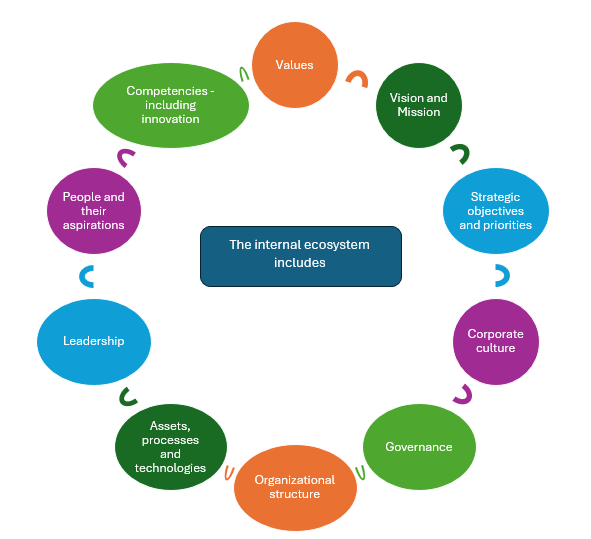
In addition to these structural components, the internal ecosystem includes the organization’s assets, processes, and technologies. These are the tangible and intangible resources that enable the organization to operate efficiently and maintain a competitive edge. Assets can include physical resources like buildings and equipment, as well as intellectual property, brand equity, and customer relationships. Processes refer to the standardized procedures that guide how work is performed, ensuring consistency, quality, and efficiency. Technologies are the tools and systems that support these processes, enabling innovation, automation, and data-driven decision-making.
Leadership is a critical element of the internal ecosystem, as leaders set the tone for the organization’s culture, drive the implementation of strategic objectives, and inspire employees to achieve their full potential. Effective leadership involves not only setting a clear vision and direction for the organization but also empowering employees, fostering a culture of continuous improvement, and navigating the organization through change.
The people within the organization—employees—are its most valuable asset. Their aspirations and competencies are crucial for driving the organization’s success. Employees bring a diverse range of skills, knowledge, and experiences to the table, and their motivation and engagement are key drivers of productivity and innovation. An organization that invests in developing its people, fostering their growth, and aligning their aspirations with its strategic goals is more likely to achieve sustained success.
Finally, innovation is a vital component of the internal ecosystem. In a rapidly changing environment, the ability to innovate—whether in products, services, processes, or business models—can be the difference between success and obsolescence. Innovation fosters creativity, encourages risk-taking, and enables the organization to adapt to new challenges and seize emerging opportunities. It ensures that the organization remains relevant and competitive, continuously improving and evolving in response to market demands and technological advancements.
An organization’s internal ecosystem is a holistic system where every component—from values and culture to governance and innovation—interacts to create a cohesive and effective whole. Understanding and nurturing this ecosystem is essential for driving organizational success, achieving strategic objectives, and maintaining a competitive edge in today’s complex business environment.
The External Ecosystem
While an organization’s internal ecosystem focuses on its internal dynamics—such as culture, structure, and governance—the external ecosystem encompasses the broader environment in which the organization operates. This external ecosystem is composed of various entities and forces that exist outside the organization but have a significant impact on its operations, strategies, and long-term success. Understanding and effectively managing these external relationships is crucial for any organization aiming to thrive in today’s interconnected and competitive business landscape.
The external ecosystem includes a diverse array of stakeholders, such as customers, suppliers, partners, competitors, regulatory bodies, and local communities. Each of these entities plays a vital role in the organization’s success, contributing to and drawing from the value created within the ecosystem. The interactions between the organization and these external entities form a complex network of relationships, often referred to as a business ecosystem. In this ecosystem, each participant, whether internal or external to the organization, contributes to the creation and exchange of value, making the whole ecosystem more robust and dynamic.
One of the defining characteristics of a well-functioning external ecosystem is the presence of synergistic relationships. These are partnerships or alliances where the combined efforts of the involved entities result in greater value creation than what each could achieve individually. For instance, a strategic partnership with a supplier might allow an organization to streamline its supply chain, reduce costs, and enhance the quality of its products. Similarly, an alliance with another company might lead to joint innovation efforts, enabling both parties to bring new, groundbreaking products to market more quickly than if they worked independently.
In addition to partnerships with suppliers and other companies, the external ecosystem also includes relationships with regulatory bodies and communities. Engaging effectively with regulatory bodies is essential for ensuring compliance with laws and regulations, which can vary significantly across different regions and industries. By proactively working with regulators, organizations can not only avoid legal issues but also influence the development of regulations in ways that support innovation and growth.
Engagement with local communities is another critical aspect of the external ecosystem. Organizations do not operate in isolation—they are part of the communities in which they are located. These communities provide the organization with employees, customers, and often a social license to operate. A social license is the ongoing acceptance of an organization’s activities by its stakeholders, particularly the local community. Maintaining this license requires the organization to act responsibly, contribute positively to the community, and address any negative impacts its operations might have. For example, a manufacturing company might invest in local infrastructure, support educational programs, or implement environmentally sustainable practices to maintain good relationships with the community and ensure long-term support.
One of the more forward-looking aspects of the external ecosystem is the recognition of the importance of future generations. Future clients, employees, and partners are integral to the sustainability of the ecosystem. Organizations must consider how their current actions will affect these future stakeholders. This involves thinking beyond short-term gains and considering the long-term impact of business decisions on the environment, society, and the economy. For instance, a company might focus on sustainable practices that reduce environmental impact, ensuring that the resources and markets it relies on today will still be available in the future. Additionally, investing in education and workforce development can help cultivate the next generation of skilled employees and innovative leaders, who will be crucial for the organization’s future success.
In a thriving external ecosystem, the relationships between the organization and its external stakeholders are not static. They are dynamic and evolving, driven by changes in technology, market conditions, and societal expectations. Organizations that excel in managing their external ecosystems are those that are adaptable, continuously seeking new opportunities for collaboration and innovation. They understand that success in today’s business environment is not just about competing against others but also about finding ways to collaborate and create shared value.
The external ecosystem is a vital component of any organization’s overall strategic environment. By effectively managing relationships with customers, suppliers, partners, regulatory bodies, communities, and future stakeholders, organizations can enhance their resilience, drive innovation, and ensure long-term success. Understanding the interconnected nature of these relationships and the value they create is essential for any organization aiming to thrive in a complex and ever-changing business landscape.

Case Study: Amazon’s Ecosystem Strategy
Amazon, one of the world’s most successful companies, offers a compelling example of how a well-managed internal and external ecosystem can drive strategic success. Founded in 1994 by Jeff Bezos, Amazon started as an online bookstore and has since evolved into a global e-commerce and technology giant. Its success can be attributed to its ability to create and sustain a complex business ecosystem that includes a vast network of suppliers, partners, customers, and even competitors.
Amazon’s internal ecosystem is meticulously designed to align with its mission of being “Earth’s most customer-centric company.” This ecosystem includes a strong corporate culture that emphasizes innovation, customer obsession, and operational efficiency. Amazon’s values—such as customer obsession, ownership, and bias for action—are deeply embedded in the organization’s daily operations and decision-making processes.
The company’s strategic objectives, such as expanding its market reach and continuously innovating its products and services, are supported by a robust internal structure. Amazon’s leadership fosters a culture of experimentation, allowing employees to take risks and innovate without the fear of failure. This approach is evident in the development of new services like Amazon Prime, AWS (Amazon Web Services), and Alexa, all of which have significantly contributed to the company’s growth.
Moreover, Amazon’s use of advanced technologies, such as artificial intelligence and big data analytics, enhances its internal processes and customer offerings. These technologies enable Amazon to predict customer needs, optimize supply chain operations, and personalize the shopping experience, further strengthening its internal ecosystem.
Amazon’s external ecosystem is vast and multifaceted, involving relationships with millions of customers, a global network of suppliers, third-party sellers, logistics partners, and even government agencies. Amazon’s Prime membership program is a key example of how the company leverages its external ecosystem to create value. By offering benefits like free shipping, streaming services, and exclusive deals, Amazon has built a loyal customer base that drives consistent revenue.
The company’s relationship with third-party sellers is another critical component of its external ecosystem. Through its Marketplace platform, Amazon allows these sellers to reach a global audience, while Amazon benefits from the increased variety and volume of products available on its site. This symbiotic relationship enhances Amazon’s market position while providing third-party sellers with valuable sales opportunities.
Amazon’s partnership with logistics companies and its investment in its delivery infrastructure, including its fleet of planes and delivery trucks, demonstrate how the company manages its supply chain ecosystem to ensure fast and reliable service. These efforts are further supported by Amazon’s collaboration with regulatory bodies to ensure compliance with local laws and regulations, particularly concerning data privacy and labor practices.
One of the most significant aspects of Amazon’s ecosystem strategy is its focus on long-term sustainability. Amazon recognizes that its future success depends on the satisfaction of not just current stakeholders but future generations as well. The company has made substantial investments in renewable energy, aiming to power all of its operations with 100% renewable energy by 2025. Additionally, Amazon’s Climate Pledge, which commits the company to achieving net-zero carbon emissions by 2040, reflects its understanding of the importance of aligning its external ecosystem with broader societal goals.
Amazon’s efforts to nurture its external relationships are also evident in its engagement with local communities. For instance, the company has invested in various community development initiatives, including education programs and workforce training, to ensure a steady pipeline of skilled employees in the future.
Amazon’s success is a testament to the power of a well-managed business ecosystem. By carefully cultivating both its internal and external ecosystems, Amazon has created a sustainable competitive advantage that continues to drive its growth and market leadership. The company’s ability to integrate its strategic objectives with the needs of its stakeholders—both present and future—highlights the importance of ecosystem management in achieving long-term business success.

Exercise 1.10: Enhancing Your Organization’s Ecosystem
Course manual 10 plays a pivotal role in advancing the overall course objective by delving into the intricate dynamics of both internal and external ecosystems within an organization. This focus is particularly relevant for HR and people management professionals, as it equips them with the knowledge and tools needed to understand how their roles are intricately linked to broader strategic goals and initiatives. By examining the internal ecosystem—which includes critical components such as values, corporate culture, organizational structure, and leadership—and the external ecosystem, encompassing customer relationships, partnerships, regulatory environments, and societal expectations, this manual fosters a comprehensive understanding of how these elements interact and influence organizational success.
The insights provided in this manual are aligned with the program title, as they encourage participants to adopt a global, integrated approach to strategy, consistent with the principles outlined by Petitpas and Marcadet. By recognizing the interconnected nature of internal and external ecosystems, participants are better equipped to see beyond their immediate roles and consider the broader implications of their decisions and actions. This holistic perspective is essential for fostering strategic thinking across all levels of the organization, ensuring that every decision is aligned with the organization’s vision, values, and long-term sustainability.
This manual emphasizes the importance of understanding the web of interdependencies that exist within and outside the organization. This understanding allows decision-makers to anticipate potential challenges and opportunities, enabling them to act proactively and strategically. By integrating this knowledge into their daily practices, HR and people management professionals can contribute more effectively to the organization’s strategic objectives, driving value creation and supporting the achievement of long-term goals. In essence, Course manual 10 not only underscores the significance of ecosystems in strategic planning but also empowers participants to think and act strategically, aligning their efforts with the organization’s overarching mission and vision.
Project Studies
Project Study (Part 1) – Customer Service
The Head of this Department is to provide a detailed report relating to the Understanding the Landscape process that has been implemented within their department, together with all key stakeholders, as a result of conducting this workshop, incorporating process: planning; development; implementation; management; and review. Your process should feature the following 12 parts:
01. Changing Perspective
02. The Evolution of Strategy
03. What is Strategic Thinking?
04. What do we mean by focusing on the Human Element?
05. About Strategic Plans
06. Who is my Organization?
07. My Organization’s Industry
08. Value Drivers
09. Stakeholders
10. Ecosystems
Please include the results of the initial evaluation and assessment.
Project Study (Part 2) – E-Business
The Head of this Department is to provide a detailed report relating to the Understanding the Landscape process that has been implemented within their department, together with all key stakeholders, as a result of conducting this workshop, incorporating process: planning; development; implementation; management; and review. Your process should feature the following 12 parts:
01. Changing Perspective
02. The Evolution of Strategy
03. What is Strategic Thinking?
04. What do we mean by focusing on the Human Element?
05. About Strategic Plans
06. Who is my Organization?
07. My Organization’s Industry
08. Value Drivers
09. Stakeholders
10. Ecosystems
Please include the results of the initial evaluation and assessment.
Project Study (Part 3) – Finance
The Head of this Department is to provide a detailed report relating to the Understanding the Landscape process that has been implemented within their department, together with all key stakeholders, as a result of conducting this workshop, incorporating process: planning; development; implementation; management; and review. Your process should feature the following 12 parts:
01. Changing Perspective
02. The Evolution of Strategy
03. What is Strategic Thinking?
04. What do we mean by focusing on the Human Element?
05. About Strategic Plans
06. Who is my Organization?
07. My Organization’s Industry
08. Value Drivers
09. Stakeholders
10. Ecosystems
Please include the results of the initial evaluation and assessment.
Project Study (Part 4) – Globalization
The Head of this Department is to provide a detailed report relating to the Understanding the Landscape process that has been implemented within their department, together with all key stakeholders, as a result of conducting this workshop, incorporating process: planning; development; implementation; management; and review. Your process should feature the following 12 parts:
01. Changing Perspective
02. The Evolution of Strategy
03. What is Strategic Thinking?
04. What do we mean by focusing on the Human Element?
05. About Strategic Plans
06. Who is my Organization?
07. My Organization’s Industry
08. Value Drivers
09. Stakeholders
10. Ecosystems
Please include the results of the initial evaluation and assessment.
Project Study (Part 5) – Human Resources
The Head of this Department is to provide a detailed report relating to the Understanding the Landscape process that has been implemented within their department, together with all key stakeholders, as a result of conducting this workshop, incorporating process: planning; development; implementation; management; and review. Your process should feature the following 12 parts:
01. Changing Perspective
02. The Evolution of Strategy
03. What is Strategic Thinking?
04. What do we mean by focusing on the Human Element?
05. About Strategic Plans
06. Who is my Organization?
07. My Organization’s Industry
08. Value Drivers
09. Stakeholders
10. Ecosystems
Please include the results of the initial evaluation and assessment.
Project Study (Part 6) – Information Technology
The Head of this Department is to provide a detailed report relating to the Understanding the Landscape process that has been implemented within their department, together with all key stakeholders, as a result of conducting this workshop, incorporating process: planning; development; implementation; management; and review. Your process should feature the following 12 parts:
01. Changing Perspective
02. The Evolution of Strategy
03. What is Strategic Thinking?
04. What do we mean by focusing on the Human Element?
05. About Strategic Plans
06. Who is my Organization?
07. My Organization’s Industry
08. Value Drivers
09. Stakeholders
10. Ecosystems
Please include the results of the initial evaluation and assessment.
Project Study (Part 7) – Legal
The Head of this Department is to provide a detailed report relating to the Understanding the Landscape process that has been implemented within their department, together with all key stakeholders, as a result of conducting this workshop, incorporating process: planning; development; implementation; management; and review. Your process should feature the following 12 parts:
01. Changing Perspective
02. The Evolution of Strategy
03. What is Strategic Thinking?
04. What do we mean by focusing on the Human Element?
05. About Strategic Plans
06. Who is my Organization?
07. My Organization’s Industry
08. Value Drivers
09. Stakeholders
10. Ecosystems
Please include the results of the initial evaluation and assessment.
Project Study (Part 8) – Management
The Head of this Department is to provide a detailed report relating to the Understanding the Landscape process that has been implemented within their department, together with all key stakeholders, as a result of conducting this workshop, incorporating process: planning; development; implementation; management; and review. Your process should feature the following 12 parts:
01. Changing Perspective
02. The Evolution of Strategy
03. What is Strategic Thinking?
04. What do we mean by focusing on the Human Element?
05. About Strategic Plans
06. Who is my Organization?
07. My Organization’s Industry
08. Value Drivers
09. Stakeholders
10. Ecosystems
Please include the results of the initial evaluation and assessment.
Project Study (Part 9) – Marketing
The Head of this Department is to provide a detailed report relating to the Understanding the Landscape process that has been implemented within their department, together with all key stakeholders, as a result of conducting this workshop, incorporating process: planning; development; implementation; management; and review. Your process should feature the following 12 parts:
01. Changing Perspective
02. The Evolution of Strategy
03. What is Strategic Thinking?
04. What do we mean by focusing on the Human Element?
05. About Strategic Plans
06. Who is my Organization?
07. My Organization’s Industry
08. Value Drivers
09. Stakeholders
10. Ecosystems
Please include the results of the initial evaluation and assessment.

Project Study (Part 10) – Production
The Head of this Department is to provide a detailed report relating to the Understanding the Landscape process that has been implemented within their department, together with all key stakeholders, as a result of conducting this workshop, incorporating process: planning; development; implementation; management; and review. Your process should feature the following 12 parts:
01. Changing Perspective
02. The Evolution of Strategy
03. What is Strategic Thinking?
04. What do we mean by focusing on the Human Element?
05. About Strategic Plans
06. Who is my Organization?
07. My Organization’s Industry
08. Value Drivers
09. Stakeholders
10. Ecosystems
Please include the results of the initial evaluation and assessment.

Project Study (Part 11) – Logistics
The Head of this Department is to provide a detailed report relating to the Understanding the Landscape process that has been implemented within their department, together with all key stakeholders, as a result of conducting this workshop, incorporating process: planning; development; implementation; management; and review. Your process should feature the following 12 parts:
01. Changing Perspective
02. The Evolution of Strategy
03. What is Strategic Thinking?
04. What do we mean by focusing on the Human Element?
05. About Strategic Plans
06. Who is my Organization?
07. My Organization’s Industry
08. Value Drivers
09. Stakeholders
10. Ecosystems
Please include the results of the initial evaluation and assessment.

Project Study (Part 12) – Education
The Head of this Department is to provide a detailed report relating to the Understanding the Landscape process that has been implemented within their department, together with all key stakeholders, as a result of conducting this workshop, incorporating process: planning; development; implementation; management; and review. Your process should feature the following 12 parts:
01. Changing Perspective
02. The Evolution of Strategy
03. What is Strategic Thinking?
04. What do we mean by focusing on the Human Element?
05. About Strategic Plans
06. Who is my Organization?
07. My Organization’s Industry
08. Value Drivers
09. Stakeholders
10. Ecosystems
Please include the results of the initial evaluation and assessment.
Program Benefits
Management
- Strategic Alignment
- Strategy Execution
- Value Creation
- Focus
- Coherence
- Opportunity Analysis
- Corporate Goals
- Foresight
- Governance
- Leadership Excellence
Operations
- Customer Experience
- Defined Responsibilities
- Process Improvement
- Collaboration
- Time Management
- Productivity
- Accountability
- Engaged Employees
- Resilience
- Competency Agility
Human Resources
- Business Alignment
- Clarity
- Shared Objectives
- Employee experience
- Embracing Change
- Engagement
- Retention
- Empowered Employees
- Defined Competency
- Increased Trust
Client Telephone Conference (CTC)
If you have any questions or if you would like to arrange a Client Telephone Conference (CTC) to discuss this particular Unique Consulting Service Proposition (UCSP) in more detail, please CLICK HERE.











